

C A R I B B E A N FREE C MPASS The Caribbean’s Monthly Look at Sea & Shore DECEMBER 2022 NO. 321 HERE COMES THE HIGH SEASON! TIM WRIGHT / WWW.PHOTOACTION.COM

DECEMBER 2022 CARIBBEAN COMPASS PAGE 2
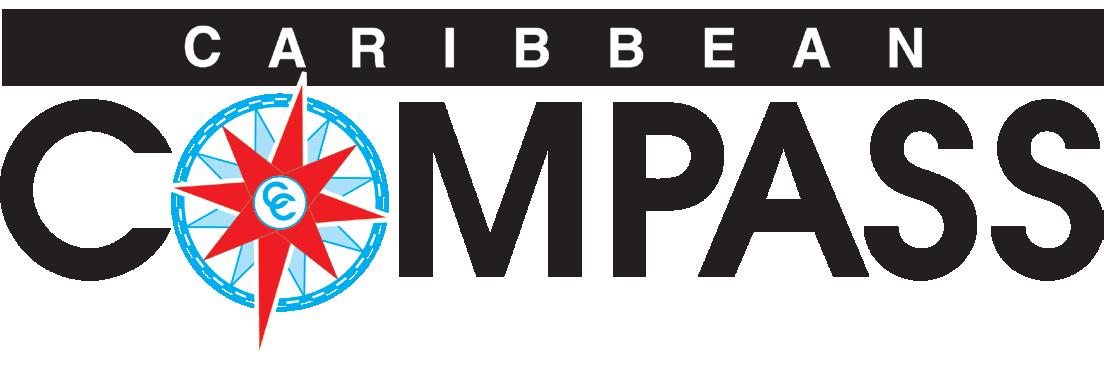

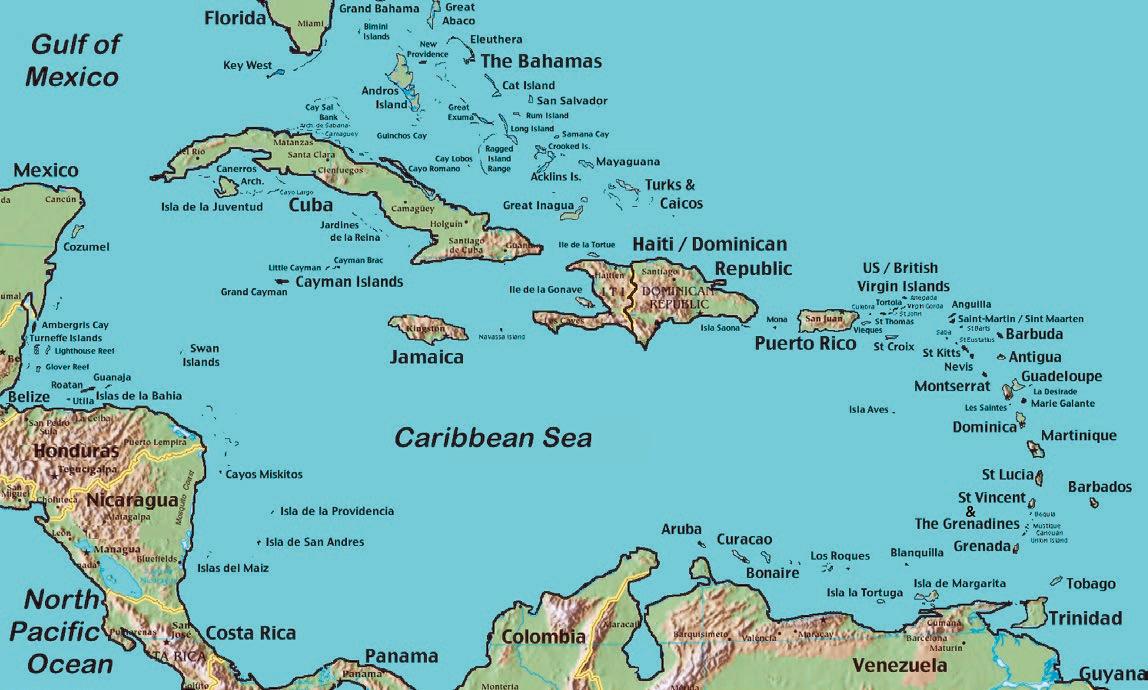
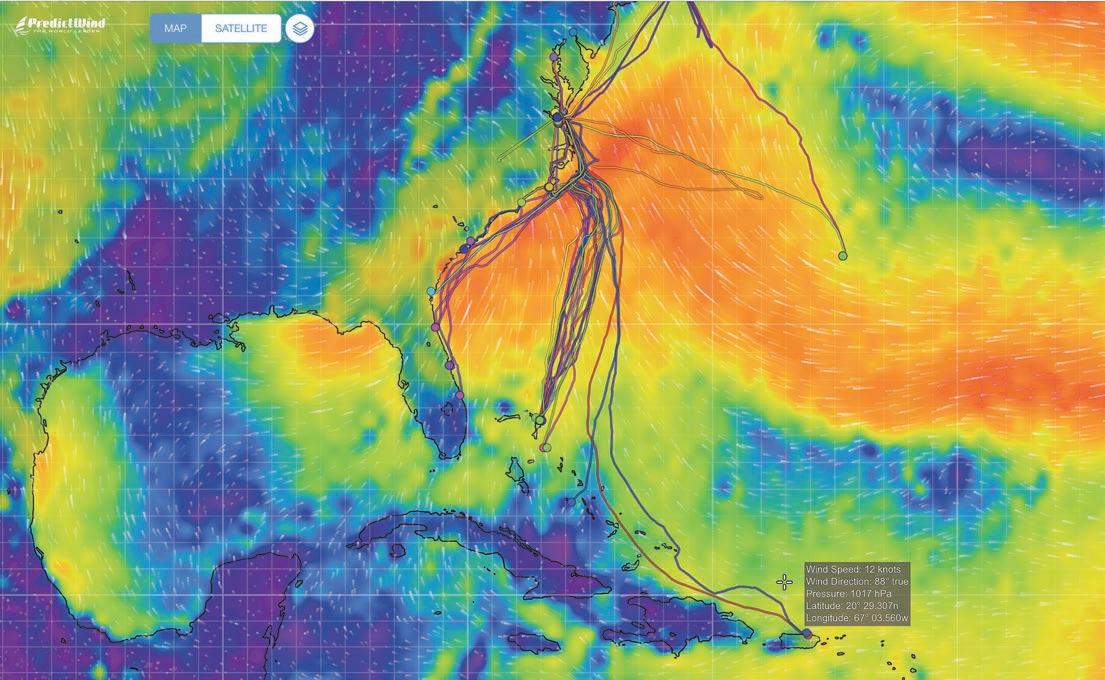



DECEMBER 2022 CARIBBEAN COMPASS PAGE 3 Southbound Fall Rallies 2022 was challenging …12 ¡Viva Progreso! Hot Mexican destination …16 We Went Electric And we’re glad we did! …18 Cruising Life We’re all in the same boat …21 Cute and Colorful Reef fish to catch your eye …30 DECEMBER 2022 • ISSUE 321 The Caribbean’s Monthly Look at Sea & Shore See each new issue of the magazine at www.caribbeancompass.com Caribbean Compass welcomes submission of articles, news items and letters to the editor. See Writers’ Guidelines at www.caribbeancompass.com/guidelines.htm. Send submissions to dan@LSmedia.com. We support free speech! But the content of advertisements and articles are the sole responsibility of the advertiser or writer and Compass Publishing LLC accepts no responsibility for statements made therein. Articles and letters may be edited for length and clarity. We do not accept individual consumer complaints. ©2022 Compass Publishing LLC. All rights reserved. No reproduction, copy or transmission of this publication, except short excerpts for review purposes, may be made without written permission of Compass Publishing LLC. ISSN 1605 - 1998 Info & Updates .............. 5 Business Briefs ............... 7 Regatta News................ 8 Destinations ................... 16 Eco-News ...................... 25 Product Postings 26 Book Review 27 Meridian Passage 27 Our Island Birds ............. 29 Meet Marine Life ........... 30 Cooking with Cruisers .. 32 Readers’ Forum ............. 35 Calendar of Events ....... 35 Caribbean Market 36 Classified Ads 38 Advertisers Index 38 Publisher..................................Dan Merton dan@LSmedia.com Editor.............................................Sally Erdle sally@caribbeancompass.com Assistant Editor........................Tad Richards Art, Design & Production..........Berry Creative abby@berrycreativellc.com Advertising & Administration...Shellese Craigg shellese@caribbeancompass.com Caribbean Compass is published monthly by Compass Publishing LLC of Connecticut, USA. www.caribbeancompass.com CARIBBEAN COMPASS Cartagena Santa Marta Bocas del Toro Click Google Map link to find the Caribbean Compass near you! https://bit.ly/1fMC2Oy COMPASS COVERS THE CARIBBEAN! From Cuba to Trinidad, from Panama to Barbuda, we’ve got the news and views that sailors can use. We’re the Caribbean’s monthly look at sea and shore. 2022 SDSA CARIBBEAN RALLY RALLY TARCKS ‘Caribbean Compass has a wealth of knowledge and entertainment within it for sailors.’ — Keith and Becca, S/V Vagari ON THE COVER: Here comes the new season! Photographer Tim Wright captured Deep Blue and class winner Sailing Poland crossing tacks at last year’s exciting St. Maarten Heineken. See the latest Regatta News on page 8. RALPH TROUT HEY READERS, GET CARIBBEAN COMPASS BY EMAIL! VISIT OUR WEBSITE AT CARIBBEANCOMPASS.COM OR JUST SCAN THE QR CODE BELOW AND ENTER YOUR EMAIL ADDRESS — IT’S AS EASY AS THAT! JOANNE HARRIS
Dear Caribbean Compass Readers,
In April we made the decision to publish an issue of Compass covering two months (May and June) rather than our usual monthly issue. After publishing 320 monthly issues over 26 years without missing a single one, this was to allow us time to develop new ideas and plan Compass’s future. And, like all refits, this one took longer than expected!
During this period we took time to reflect, look back and look forward, and we came to the conclusion that it was time for us to go off watch and hand the helm over to a new team.
We are thrilled to now introduce you to our fellow sailors Dan and Kelly Merton, who will take the good ship Compass onward.

Helming Compass was a grand adventure for us. We know Dan and Kelly will feel the same.

Wishing you all fair winds and happy Compass reading, Sally Erdle and Tom Hopman
Greetings!
It’s with great pleasure — and even more excitement — that we come to you this December in our first official watch as Caribbean Compass’s new publishers.
After more than two decades heading up the production of this beloved monthly mag, former owners Tom and Sally have decided to sail into the (proverbial) sunset and enjoy retirement. While they’ll be making occasional guest appearances in coming editions, they’ve graciously trusted us to guide this respected news source to its next chapter.
As avid sailors and racers, former residents of St. John, USVI, and tropical wanderlusts, we’re thrilled to continue the tradition of covering all things sailing and important topics pertaining to the region. We’re further eager to add a more robust digital product to better serve all of our fans currently out of reach and we look forward to getting to know our readers and continuing to bring them interest and meaningful stories.
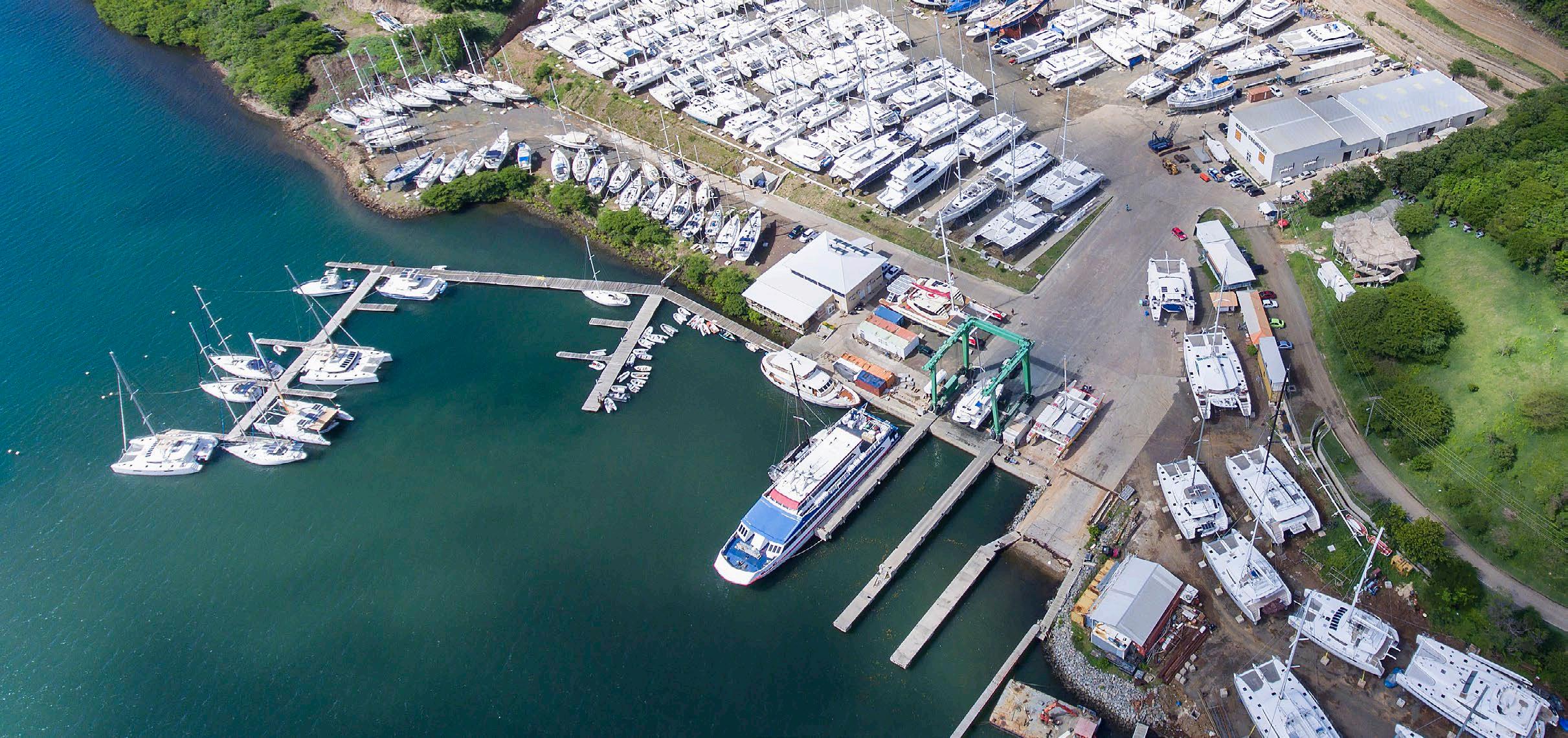
It’s fitting that this December issue is Edition #321 of Caribbean Compass. Our six-year-old son pointed out that the number is what they say when they get ready to launch a rocket into space, ala “3...2...1... blastoff!” And while we promise we won’t veer into coverage of space travel, the analogy is apt, in that we’re excited to cover new frontiers of sailing, exploring, and the Caribbean.
Signing off from the helm... we’re ready for blastoff!
Dan and Kelly Merton
DECEMBER 2022 CARIBBEAN COMPASS PAGE 4 Clarkes Court Bay Road, Woburn, St. George, Grenada, W.I. 1 (473) 439 – 3939 | info@clarkescourtmarina.com www.clarkescourtmarina.com DOING IT RIGHT THE CAREFUL ATTENTION GIVEN TO OUR CLIENTS AND THEIR BOATS IS FILLING OUR BOATYARD TO CAPACITY AND WE LOOK FORWARD TO OFFERING YOU THE SAME SAFE AND PROFESSIONAL SERVICE. CREW FACILITIES • Restaurant, Bar & Luxury Apartments • Laundry, Hot Showers • Taxi & Shopping Bus Services available from the yard • Customs & Immigration and Fuel Supply are close by • Onsite Chandlery ON SITE TECHNICAL SERVICES • Project Management & Consultancy • Yacht Brokerage and Guardianage • Rigging, Sail Making and Canvas Work • Metal Fabrication • GRP & Composite Fabrication • Fine Wood Work & Carpentry • Electrical Installation & Electronics • Bottom Painting, Waxing & Polishing • Diesel & Outboard Engine Installation & Repair • Life Rafts, Safety Equipment & Inflatable Dinghy Repair
CHANGE
WATCH
With issue number 321, Dan and Kelly are ready for blastoff!
Info & Updates
New Tolls for Panama Canal
New tolls for the Panama Canal will be rolled out on each January 1st for the next three years.
The modifications to yacht (“small vessel”) tolls involve adjustments to the maximum limits of displacement tonnage established by tolls based on length overall as follows:
• These tolls apply to all small vessels (length overall up to 125 feet).
• Vessels of length overall greater than 125 feet, of any market segment, with PC/ UMS tonnage up to 999 as the maximum limit, will be applied the small vessels tolls in the length overall range greater than 100 feet, in addition to all related charges for other maritime services.
• The proposed modifications to small vessel tolls involve adjustments to the maximum limits of displacement tonnage established by tolls based on length overall (1,000 displacement tons). Vessels with a displacement tonnage greater than 1,000 will be assessed tolls based on the proposed displacement tolls.
The new tolls in US dollars for small vessels based on length overall are:
• Under 65 feet (19.812 metres), effective 2023 $1,760, effective 2024 $1,935, effective 2025 2$2,130
• 65 to under 80 feet (19.812 to under 24.384 metres) effective 2023 $2,640, effective 2024 $2.905, effective 2025 $3,200
• 80 to under 100 feet (24.384 to under 30.480 metres) effective 2023 3,850, effective 2024 $4,235, effective 2025 $4,660
• Over 100 feet (30.48 metres) effective 2023 $5,000, effective 2024 $5,500, effective 2025 $6,000
See more at https://pancanal.com/en/tolls or contact canaltolls@pancanal.com
New Free Doyle Grenada Guide
Caribbean cruising guide authors Chris Doyle and Lexi Fisher have lots of great Eastern Caribbean information at www.doyleguides.com — plus they have recently published a new, free yachting and watersports guide for Grenada, Carriacou and Petite Martinique.
Working closely with the Marine and Yachting Association of Grenada, they have created a guide with useful charts and information on navigation, marinas, and services, plus expanded sections on snorkeling and diving, environmental concerns, and giving back to the community.
Find a copy at one of their many advertisers in Grenada and Carriacou, including chandleries and marinas. You can also download the free PDF version for offline use from www.doyleguides.com


Montserrat Welcomes Yachts with Facelift Yachtspeople clearing into Montserrat at the Little Bay Ferry Terminal will enjoy a refreshed facility. The Tourism Division, in collaboration with the Montserrat Port Authority through European Union funding, has undertaken upgrade works on this facility, including a noticeable change in the color of the terminal building, in preparation for the upcoming tourism season.
For additional information on Montserrat’s protocols visit www.visitmontserrat.com
SVG Drops from CSSN Crime Report
After six consecutive years on the Caribbean Safety and Security Net’s list of Caribbean countries reporting the highest level of crimes against yachts, St. Vincent & the Grenadines scored low in the group’s report for 2021, with only four reported crimes, two of which were thefts of unoccupied bareboats moored at Blue Lagoon and Young Island.
CSSN noted that, while reported incidents were spread more broadly throughout the region as Covid protocols and restrictions relaxed, roughly half of the total of 102 reported yacht-related crime reports in 2021 occurred in four countries: St. Martin, Martinique, Grenada and Panama. According to the CSSN data, dinghies and outboard motors remain key targets for thieves, noting, “Theft remains largely a crime of opportunity with too many dinghies left poorly secured…” See the full report at www.safetyandsecuritynet.org
DECEMBER 2022 CARIBBEAN COMPASS PAGE 5
Continued
37
on page

DECEMBER 2022 CARIBBEAN COMPASS PAGE 6
BUSINESS BRIEFS
T&T Says ‘Sail, Service and Stay!’
Dr. Ayeisha Collymore of Trinidad & Tobago’s Ministry of Trade and Industry reports: Trinidad & Tobago, just south of the hurricane belt, offers shelter for cruisers and other yacht owners during hurricane season, and Trinidad offers excellent boat storage, repair and maintenance services year-round.
Located on Trinidad’s northwestern peninsula, Chaguaramas, the main hub for yachting activities, boasts some of the best repair facilities in the Caribbean.
Boatyards and marinas are equipped with advanced machinery and equipment to undertake hauling, repair and maintenance of vessels of various sizes. Staff are highly trained, skilled and experienced to undertake technical work.
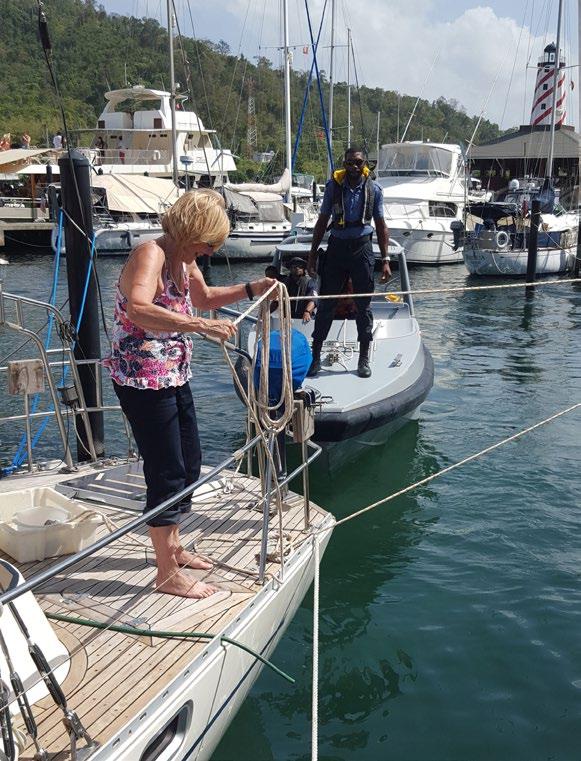
Boatyards and marinas here attract vessels from around the world due to their world-class services and competitive pricing. Services offered include, but are not limited to, fiberglass work, welding, woodwork, upholstery, sailmaking, electronics and electrical work, mechanical, painting and rigging, propeller repairs, signs and engraving, tank cleaning, refrigeration, air conditioning, hospitality, haul-out facilities, storage facilities and dock space, plus retail shops, travel agencies and readily available spare parts.
BOATYARDS
Some of the larger boatyards located at Chaguaramas include:
• Power Boats, offering electricians, mechanical supplies, marine hardware, osmosis blister repair, polishing, dinghy and bicycle repair, metal work, sails and canvas, engine repair, woodworking, winch repair, outboard engine mechanics, tour and taxi service, paint and varnish finishers, plumbing and electronics. (pbmfl@powerboats.co.tt, www.powerboats.co.tt)
• Coral Cove, offering project management, fiberglass repair, tank cleaning, mechanical supplies, marine hardware, upholstery, chandlery and paint supplies. (https://coralcovemarinatt.com)

• Peake Yacht Services, offering rigging, marine and insurance surveyors, sails and canvas, paint supplies, hydraulics, woodworking, propeller repair, welding and fabrication, metal work, air conditioning, engine repair, polishing, osmosis blister repair, antifouling and bottom painting, and machinists. (mail@peakeyachts.com, http://peakeyachts.com)
For a more detailed listing of the services available in each boatyard see www.ysatt.com/services-table.php. The non-profit Yacht Services Association of Trinidad & Tobago (YSATT) was established in 1994 by the boatyards and marinas in the Western Peninsula of Trinidad to facilitate the growth and development of the nation’s yachting sector. YSATT is the umbrella body in the sector for both local stakeholders and foreign visitors.
MARINA HOTELS
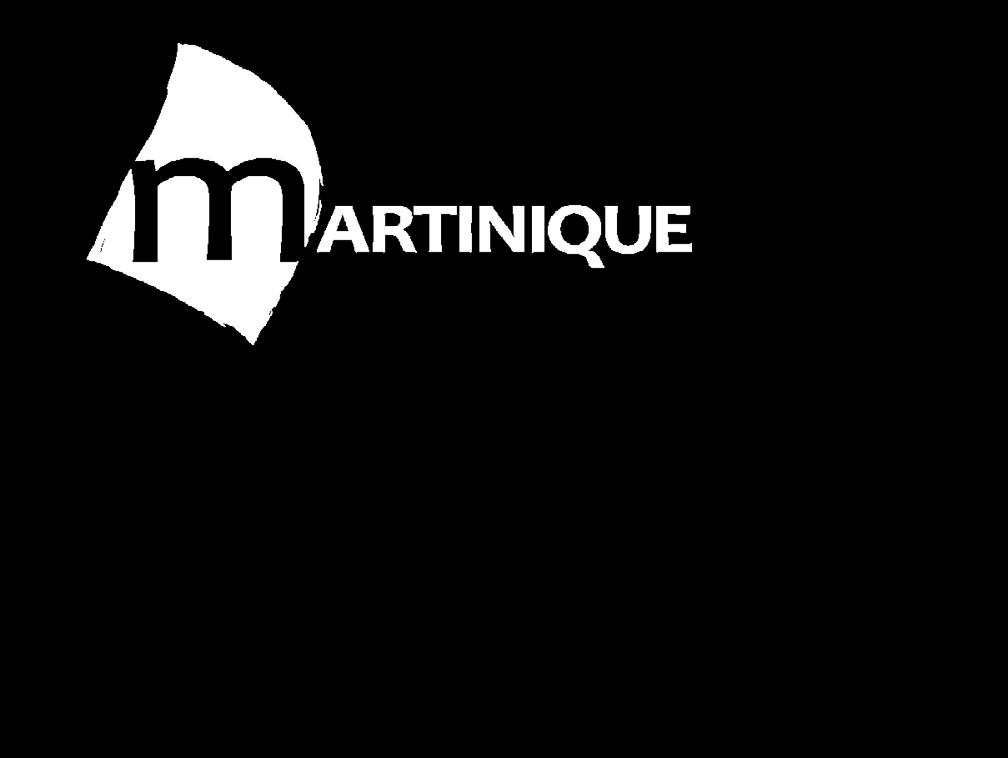

Marinas and hotels located in the Chaguaramas area provide services including storage, accommodation and hospitality. The three main hotels in the area are Chaquacabana, Crews Inn Hotel & Yachting Centre, and Coral Cove Marina Hotel. Each provides restaurants, coffee shops, WiFi, and other amenities for cruisers’ comfort.
THINGS TO DO: TRINIDAD
Trinidad offers a range of activities for every preference. There are many nature tours and hikes within close proximity to Chaguaramas, such as the abandoned Tracking Station, Bamboo Cathedral and Gasparee Caves. Macqueripe Bay, also located in Chaguaramas, has a zipline adventure through the rainforest, as well as over the bay. In addition, there is the Five Islands Water & Amusement Park. Trinidad’s coastline hosts spectacular beaches with pristine waters. A favourite is the Maracas Bay, a 30-minute drive through the mountainous and lush Northern Range from the capital, Port of Spain.
For more information visit https://visittrinidad.tt/things-to-do.
THINGS TO DO: TOBAGO
Tobago is 20 miles from Trinidad. You can sail your own boat there, board a short flight with Caribbean Airlines, or take an inter-island ferry. The plane and ferry are
efficient and cost-effective.
Tobago is home to the oldest protected rainforest in the western hemisphere and is a birdwatcher's paradise. For diving and snorkeling, Tobago’s reefs are rich in biodiversity: popular spots include Buccoo Reef, Nylon Pool, Pigeon Point and Little Tobago.
For more information visit www.visittobago.gov.tt.
For more information on T&T’s entry requirements for cruisers, visit YSATT at www.ysatt.com/yacht_entry.php.
www.facebook.com/yachtservicesassociationoftrinidadandtobago www.instagram.com/explore/locations/937572687/yacht-services-association-oftrinidad-tobago-ysatt
Additionally, you can contact Jesse James at (868) 683-5202 and Sharon Rose at (868) 757-0139.
Download the Trinidad and Tobago Travel Guide App: https://play.google.com/ store/apps/details?id=com.trinidadandtobago.guide and check out www.facebook.com/exploretrinidad for more information.
Advice from Mid Atlantic Yacht Services

Duncan Sweet of Mid Atlantic Yacht Services reports: If your boat was “parked” during the off season with fuel tanks left only partially full, there is a fair chance of condensation accumulating in the tank that may cause a bacterial bloom. “Diesel bug” can be seriously problematic. If you haven’t changed fuel filters within the last 100 hours of running time, it is overdue. Check your fuel tanks, and stock up on plenty of pre-filters and engine fuel filters.
See ad in Market Place section, pages 36 and 37, and visit www.midatlanticyachtservices.com for more information.
New Loft for Grenada’s Turbulence Richard Szyjan of Turbulence Ltd. Grenada reports: Earlier this year we opened our new loft, located in Clarkes Court Bay just before the Clarkes Court Boatyard entrance. This 110 by 40 foot space is a nice addition to our existing facilities at Grenada Marine, Clarkes Court Boatyard & Marina, and Spice Island Marine, where we offer sailmaking, canvas, rigging, hydraulic and electronic services.
I take the opportunity to wish excellent cruising and racing to all the sailors in the Caribbean.
See ad on page 17 and visit www. turbulenceltd.com for more information.
Guyana
Eyes Yachting Industry
According to a report at newsroom.gy, Guyana has the potential and advantages to emerge as a service hub for the yachting industry in the Caribbean, and the country’s president, Dr. Irfaan Ali, believes this can be achieved with investments in the fabrication and machinery industry, coupled with careful planning and a thorough understanding of the industry.
Turbulence’s new 110 by 40 foot space can accommodate bigger-size sails.
Speaking at an event at Nimes on the West Bank of Demerara earlier this year, President Ali said Guyana’s advantage is that it is outside the hurricane belt.
“We can develop a state-of-art fabricating and machining capacity and capability in this country and we can certainly emerge as a servicing hub for the yachting industry in the region,” he said.

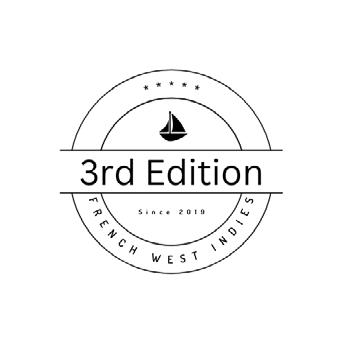
The country is on a major transformational path with the booming oil and gas industry, and President Ali has been urging local businesses to think big about how they can contribute to the country’s development in every sector and industry.
“We will get there by careful planning and a thorough understanding of the opportunities that lies ahead. And this is the real dimensions of growth and development of our country,” President Ali said.
Got
Business News?
To have your business’s latest news published in the January 2023 issue of Caribbean Compass, just send a short news item (under 400 words) to dan@LSmedia.com.
Advertisers make Compass happen, and will be given priority. Others’ news will be included if appropriate and space is available.
Photos must be large and high-resolution, and sent as separate attached jpg files; they will be included on a space-available basis.
DECEMBER 2022 CARIBBEAN COMPASS PAGE 7
CHRISTINE WEBSTER
The facilities and attractions in Trinidad and Tobago have much to offer cruisers.
REGATTA NEWS
Antigua Wins Nations Cup at 2022 Caribbean Dinghy Champs
The 2022 CSA Caribbean Dinghy Championship, in St. Maarten from October 21st through 23rd and hosted by the Sint Maarten Yacht Club, comprised 27 boats in six classes, representing four countries with competitors aged seven to mid-sixties.
“The whole weekend was a big success,” said Race Officer Paul Henriques. “I saw some great progress building up during the regatta by different teams, especially the younger two-handed teams. Teamwork and communication improved, which made the racing even closer.”
In the Laser 4.7 fleet, Jordan Pieterse, representing St. Maarten, took third place. Emma Lennox from St. Maarten and Jules Fortunati from St. Barth ended up in a tie for first and second place. Lennox sailed a consistent regatta during days one and two, but Fortunati sailed better during the last day. With Fortunati winning the last race, he won the tie and took home first place in the Laser 4.7 class.
In the Laser Radial Fleet, Ozani Lafond, representing Antigua, dominated and took first place. Cindy Brin from St. Barth took second place, and third place went to Pascall Belle, from St. Martin.
Jolyon Ferron from St. Maarten took third place in the Laser Standard Fleet. Ferron stepped in two days before the event, to replace Frits Bus. The second place went to Benoit Meesemaecker, representing St. Barth. The first place ended up in the hands of Rhone Kirby, representing Antigua, with only 12 points in 13 races.
Deshawnte Durat and Jahvon Hector from Antigua took third place in the RS Zest Class. Rio Stomp and Dax Henriques, representing St. Maarten, sailed consistently and ended up in second place. Paul Pages and Jules Lamort from St. Martin proved themselves the strongest by winning the class by nine points ahead of number two.
In the RS Quest Fleet, Bernard Sillem and Henry Krugler, representing St. Martin, took third place. St. Maarteners Joris van den Eynde and Alex Speetjens took second. St. Barth’s team took the win with Christophe Maxor and Lucca Magnan, eight points ahead of the second-place finishers.
In the Optimist fleet, seven competitors battled for the win. Correntine Corroy, from St. Martin, took third place. Sarah Michaux was rewarded with second place, but the win went to Emily Gilliard, representing Antigua. Gilliard was the only competitor who won all races in her class during the event. A very impressive result!
Besides the individual prizes, the island with the best results was rewarded with the Nations Cup. The third place of the Nations Cup was for St. Maarten and second place was for St. Barth. After their wins in 2018 and 2019, Antigua continued to prove their prowess by taking the win in three out of six classes and took home the Nations Cup again!
See www.smyc.com/caribbeandinghychampionship for full results.
Perfect Conditions for Start of ARC+ 2022
ARC+ 2022, World Cruising Club’s two-stage transatlantic rally to Grenada, set sail on November 6th from Las Palmas de Gran Canaria with 90 boats — 69 monohulls, 20 multihulls and one motoryacht — spirited away by the gentle tradewinds bound for Mindelo Marina, Cape Verde, for the first leg of their ocean adventure. The ARC+ fleet was on its way to Mindelo, 865 nautical miles southwest of Gran Canaria.
Over 400 sailors are taking part in this year’s rally onboard boats large and small, old and new. From the smallest boat on the ARC+ 2022 start line, Ciel Bleu (GBR) a Fountaine Pajot Maldives 32, to the biggest, the Oyster 675 Alika (GBR), it is the largest and most diverse fleet to be leaving Las Palmas de Gran Canaria since the event began in 2013.
Celebrating its tenth edition this year, the two-stage Atlantic crossing has once again proved popular with adventurous families, with 36 children sailing on 18 different boats, the youngest being three year old Herman Habenicht on Ballerina The youngest skipper, Ronja Dörnfeld, is aged 25 and one of four female skippers in ARC+ 2022.
The latest YB Tracking Satellite trackers have been fitted on board each boat, allowing family and friends to follow the fleet from the comfort of their own home via the online Fleet Viewer. Boats can also send blogs and photos, posted on to the rally website to share life on board.
As the ARC+ fleet left, the pre-departure program began for the crews of the ARC fleet sailing directly to St. Lucia on November 20th.
Compass will be on hand in Grenada and St. Lucia for the ARC+ and ARC arrivals, so stay tuned! Visit www.worldcruising.com for more information.

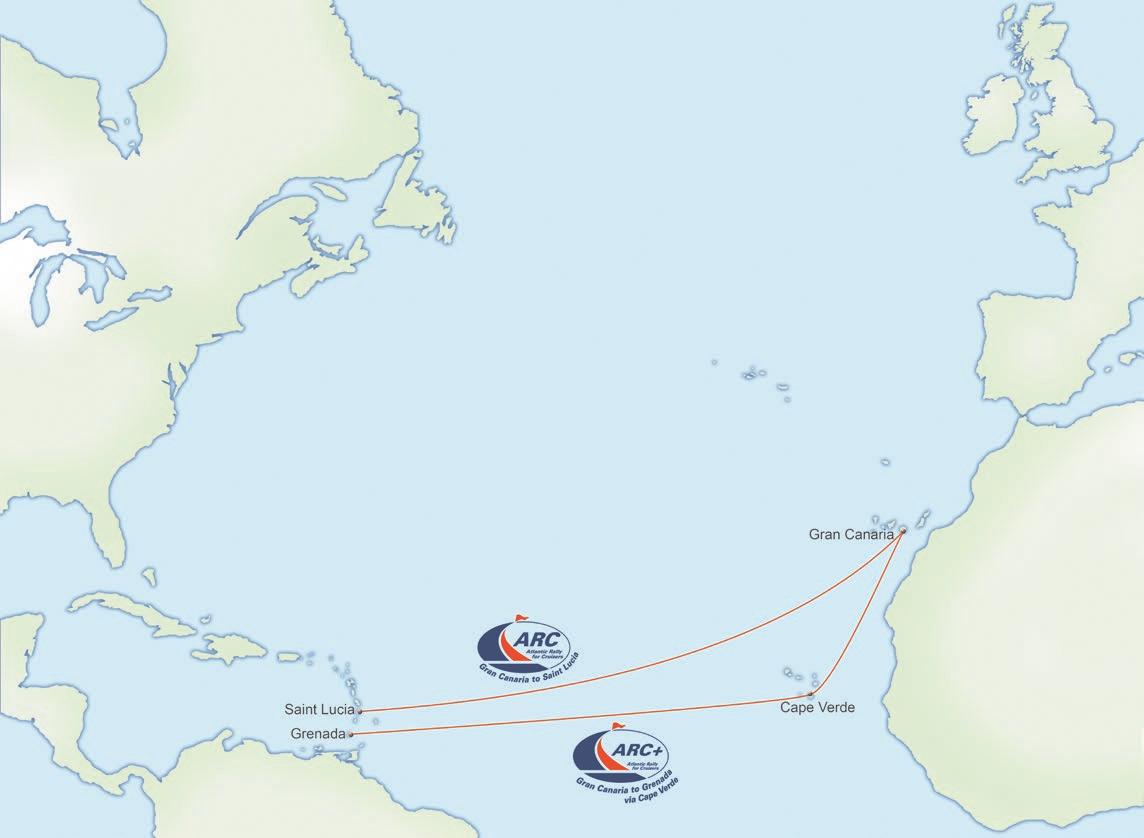
ON THE HORIZON
Original Course de l’Alliance is Back!
The Sint Maarten Yacht Club will host the 19th edition of La Course de l’Alliance from December 2nd through 4th. Don't miss it! After sailing La Course de l’Alliance in a adjusted format for two years due to Covid-related border restrictions, the organizers are happy to announce that the will go back to the original format for the 2022 edition, to include racing from St Maarten to St. Barths and Anguilla. Visit www.smyc.com for more information.
Bucket-List Boats for 2023 St. Maarten Heineken
Celebrating 43 years, this regatta just keeps getting better, four days of world-class racing with some of the world's most seasoned sailors, hailing from over 35 countries. This is genuinely a regatta for everyone, including professional teams sailing Maxis, Monohulls, and Performance Multihulls to holidaymakers on chartered Bareboats to live-aboard families cruising the Caribbean.
From March 2nd through 5th, 2023, hundreds of international sailors and their racing yachts will gather in Simpson Bay for the 43rd St. Maarten Heineken Regatta. Renowned for “Serious Fun,” the regatta attracts the best of the best and some of the bucket-list boats are now available for team charter.
Following the offshore RORC Caribbean 600 Race, many of the big-boat fleet will take the quick downwind run from Antigua to St Maarten to rematch in the inshore regatta format. Big boats and offshore racers are treated to long courses at St. Maarten Heineken Regatta, with a good mix of upwind, downwind and reaching legs between St. Maarten, Anguilla and St Barth. Expect to see some epic maxi racers, as St. Maarten Heineken Regatta is the second of just three elite events to earn points for the IMA Caribbean Maxi Challenge trophy.
BYOB (bring your own boat) or charter your bucket-list boat. “When I heard about chartering opportunities for the St. Maarten Heineken Regatta, I thought to myself: now that’s a big bucket-list event! Our team has chartered the J/120 Jaguar for 2023, which is perfect for our team size, experience and conditions we are expecting,” said Marcos Weinstein, RSW Racing Syndicate Manager. Continued on next page
DECEMBER 2022 CARIBBEAN COMPASS PAGE 8
WORLD CRUISING CLUB • Yacht Concierge 24/24 - 7/7 • Electronic Clearance via Email • 4G/LTE & TVRO products & services • Project Management: Haul-Out, Maintenance • Gourmet provisions • Medical Turnkey Assistance & MEDEVAC Cell : +596 696 45 89 75 / Office : + 596 596 52 14 28 / mail : douglas@yachtservices.fr www.douglasyachtservices.fr Service Team « A to Z » SERVICE AGENT
World Cruising Club’s ARC+ rally adds a stop in Cape Verde to the Atlantic crossing.
Budget Marine Hightide Series Weekend
The Hightide Series was initiated by Antiguan sailor Jol Byerley more than 26 years ago. The plan was to have some competitive sailing in Antigua over the Christmas season and it has been very consistent and successful in that regard.
In the past it was a series of sailing events held on weekday afternoons and parts of a weekend. This year the model has been changed and the event will take place entirely over one weekend.
The races will be held on December 17th and 18th off Falmouth and English Harbours, with three races planned for Saturday and two on Sunday, culminating with a prizegiving at 4:00PM on Sunday on the Antigua Yacht Club Event Centre Deck.
Budget Marine has been pleased to sponsor and participate in the event for a very long time and will be offering attractive prizes. The event will take place just a short period before Budget Marine celebrates its 30-year presence on Antigua.
The original namesake of the event, the vessel High Tide, is still with us and promises to have the missing mast in position around that time. Can High Tide win another Hightide?
The Antigua Yacht Club is hoping that the new simple event layout will attract Jolly Harbour sailors and visiting yachts, as they would not have to leave their boats for a period in English Harbour. The heartfelt invitation is extended hereby.
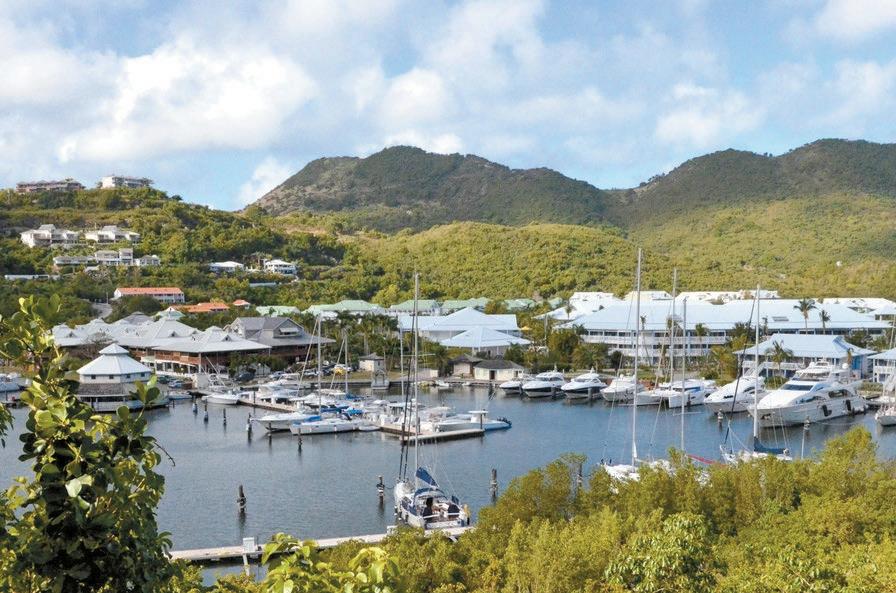
Visit www.antiguayachtclub.com for the NOR and to register.
Viking Explorers Rally
The Viking Explorers Rally departs from Las Palmas de Gran Canaria, bound for Grenada, in January, when the tradewinds are reliable and the crossing is likely to have less fluky winds.
Rally members will meet on December 2nd at the Club Maritimo Varadero, in Las Palmas de Gran Canaria for a week of seminars and get-togethers before a Christmas break. In early January, ralliers will regroup for the skippers' briefing. There is no official start date; although it is aimed for January 6th, it is each captain’s decision to leave as the weather permits.
A stop in Mindelo, Cabo Verde, 840 miles from Las Palmas, is optional. A few days later rally boats will continue for the 2,150 miles across the Atlantic to arrive at Port Louis Marina in Grenada. The Viking Explorers Rally signs a new sponsor agreement with the local company Grenada Distillers LTD, as official arrival host.
With a fleet limited to 25 boats, the rally presents itself as a small, exclusive and international event where, apart from safety, the aim is to create a family atmosphere with like-minded people.
Visit www.vikingexplorersrally.com for more information.
Barbados Sailing Week 2023
Barbados Sailing Week 2023, including the iconic Round Barbados Race, will be held from January 14th through 22nd.
The race around Barbados dates back to the 19th century and is based upon bragging rights for the fastest trading schooner. This was a prize worth its weight in gold to captains in an era where prices for cargo arriving ahead of rival ships commanded a massive premium. While most boats sailed for the honor of the fastest time, the consolation prize of a barrel of Mount Gay Rum for the slowest certainly spurred on some captains, and had to be discontinued after two boats remained out at sea for days stalling to take the prize.
Over the years, shorter courses were added to the round-the-island race, to make a days-long series. For 2023, Monday January 16th will see registration and the opening ceremony. On Tuesday January 17th, registration and the skippers’ briefing will take place. Offshore races and after-race parties will be held on Wednesday and Thursday, with a lay day on Friday.
Saturday January 21st will see the famous Round Barbados Race and after-race party. The event winds up on Sunday January 22nd, with the last offshore Race, Mount Gay happy hour, and a gala prizegiving. Visit www.roundbarbados.com for more information and see ad on page 9.

New Features for Caribbean Multihull Challenge
Steve Burzon reports: In 2020, the second year of the Caribbean Multihull Challenge, we had a record of 18 entries. For our fifth annual, set for of February 3rd through 5th, 2023, in St. Maarten, 11 entries were already on the books with four and a half months before the first start.
The race committee is firming up plans for the promotion of the 52-Mile Around Saba Dash sponsored by the Sint Maarten Tourist Bureau. The concept for this race
came from interviews with 2022 sailors Francois Nel and Rodney Williams from Arawak; and Anthony McVeigh from 2-2 Tango. They stated that the signature of so many multihulls is their straight-line speed, so why not have a race with a power reach north and south across the tradewinds on the south side of Sint Maarten? A new CMC tradition was born.
Competitors in the new CMC Trifecta will race on three consecutive days in the winter trade winds off the coast of Dutch and French St Maarten/St Martin. Each day will feature another race to be scheduled by Race Officer Rien Korteknie based on his estimation of that specific day’s weather.
The Trifecta consists of three challenging courses:
• The Caribbean Multihull Challenge 60-Mile Sprint starts in Simpson Bay, heads upwind to round St. Barths, reaches above the island of Tintemarre, turns west and runs down the Anguilla Channel to the airport end of Sint Maarten where the fleet will turn upwind again to beat to the finish in Simpson Bay. This year will see the third running of the Sprint sponsored by FKG Rigging & Fabrication. For the first running of the Sprint the MOD 70 Argo was the winner. The Bieker 53 Fujin won in 2022.
• The Around Saba Dash; a 52-mile power reach in two directions, sponsored by the Sint Maarten Tourist Bureau, heads from Simpson Bay to reach south across the tradewinds around Saba, to then turn and power reach north back to the finish in Simpson Bay. In 2022, several skippers asked for this course to be included again in 2023. “As big boat multihull owners, of course we love to go fast. With a reaching course in both directions like this one, we can put the pedal to the metal and simply fly! If it is really windy that day, we can attempt new speed records for our boats.”
• The third part of the Trifecta is the scenic and challenging St. Maarten Circle Race, a 27-nautical-mile circumnavigation around the island. This is a course not only for the CSA 1 boats that will race in the first two parts of the Trifecta; but for all classes as well — weather depending.
The winner of the Trifecta will receive an Aquis diving watch provided by Gold Sponsor ORIS Watches.
The CMC Trifecta is just one part of a very busy and diverse 2023 Caribbean Multihull Challenge Race and Rally. At the same time that the Sprint, the Dash, and the Circle Race are running, other CSA classes will be offered a host of other courses as determined by the Race Officer.
All this action will take place while the also new CMC Cruising Rally will be running, with the first day mapped out for a sail and overnight in Anse Marcel, the second day planned with a sail and overnight in Sandy Ground, Anguilla, and a Sunday return to Simpson Bay.
Registration is open at www.YachtScoring.com. See ad on page 10 and more details at www.CaribbeanMultihullChallenge.com
DECEMBER 2022 CARIBBEAN COMPASS PAGE 9
page
Continued from previous
The new CMC Cruising Rally’s first day features an overnight in Anse Marcel.
ANSE MARCEL
MARINA
Bucket List Boats for 2023 Heineken
Celebrating 43 years, this regatta just keeps getting better, four days of world-class racing with some of the world's most seasoned sailors, hailing from over 35 countries. This is genuinely a regatta for everyone, including professional teams sailing Maxis, Monohulls, and Performance Multihulls to holidaymakers on chartered Bareboats to live-aboard families cruising the Caribbean.
From March 2nd through 5th, 2023, hundreds of international sailors and their racing yachts will gather in Simpson Bay for the 43rd St. Maarten Heineken Regatta. Renowned for “Serious Fun,” the regatta attracts the best of the best and some of the bucket-list boats are now available for team charter.
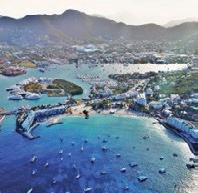
Following the offshore RORC Caribbean 600 Race, many of the big-boat fleet will take the quick downwind run from Antigua to St Maarten to rematch in the inshore regatta format. Big boats and offshore racers are treated to long courses at St. Maarten Heineken Regatta, with a good mix of upwind, downwind and reaching legs between St. Maarten, Anguilla and St Barth. Expect to see some epic maxi racers, as St. Maarten Heineken Regatta is the second of just three elite events to earn points for the IMA Caribbean Maxi Challenge trophy.
BYOB (bring your own boat) or charter your bucket-list boat. “When I heard about chartering opportunities for the St. Maarten Heineken Regatta, I thought to myself: now that’s a big bucket-list event! Our team has chartered the J/120 Jaguar for 2023, which is perfect for our team size, experience and conditions we are expecting,” said Marcos Weinstein, RSW Racing Syndicate Manager.
Team charters come with a professional captain, and often extra crew and training, so even sailors new to multihulls or ocean racing boats can have some serious fun on these machines. Race a piece of history onboard local catamaran Arawak (a.k.a. Island Water World), which was built to participate in the iconic Route du Rhum Transat Race. Similarly, VO70 Hypr, former Camper 2011-12 Volvo Ocean Race second-place boat, and VO65 Ambersail 2 are both available for charter. There is also a selection of modern yachts that mix luxury and performance offered for team charter through charter agent LV Yachting.
Big things can also come in small packages, and this goes for the growing Diam24 fleet that made a big impression at the 2022 St Maarten Heineken Regatta. When these 24-foot trimarans blasted past the Volvo fleet in the Around the Island Race, matching or exceeding boat speeds, they turned heads! Diam24s are available for charter to race within the competitive local fleet.
At the end of each race day, teams from all classes gather for daily prizegiving and apres-sail libations in the race village at Port de Plaisance.
Registration is now open at Yachtscoring.com. Visit www.heinekenregatta.com for more information.






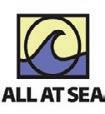

The Return of the Spirit of Antigua Classics!
The Antigua Classic Yacht Regatta is the premier classic sailing event of the Caribbean, attracting a large number of classics every year from all around the world. In its 34th edition for 2023, the event enjoys a wonderful variety of competitors including traditional craft from the islands, vintage and classic ketches, sloops, schooners and yawls making the bulk of the fleet, plus Tall Ships and more newly built Spirit of Tradition yachts and Modern Classics.
Founder Kenny Coombs’ underlying premise for the original Antigua Classic Yacht Regatta was to bring together a group of people who shared the same passion for

Back to the roots: racing vintage and classic yachts in the ideal sailing conditions of Antigua.


racing vintage and classic yachts in the ideal sailing conditions of Antigua, with its unique historic background. The resulting camaraderie in this group, which varied from year to year as different yachts and sailors took part, became legendary, and was one of the chief reasons for the regatta’s success. Whether you arrived in flipflops or on a private jet, it was a great leveler.
The new Classics Team aims to restore the original spirit of the event, which will take place April 19th through 24th, during the traditional time slot prior to Antigua Sailing Week. Most events, including registration, will be in Nelson’s Dockyard. Events will include the Single-Handed Race and the Concours d’Elégance, followed by three days of racing, culminating in the famous Parade of the Classics in English Harbour after the last race on the Sunday, followed by prizegiving. Monday will be for rest, relaxation and fun, with the restoration of Gig Racing at the Admiral’s Inn and thirst being slaked by Cream Teas served by elegant ladies in flowery hats. A new, slimline version of the famous printed program is also being prepared.
The classes of participating yachts will remain the same — Vintage, Classic, Spirit of Tradition, Traditional and Tall Ships — but the former Historic Class has been renamed Modern Classics, defined as monohulls built of any material, with a modern underwater profile such as fin and skeg, and designed over 35 years ago. (There will no longer be a Dragons Class.)

The courses, yet to be determined in detail, will be based on the original ones, such as Old Road and the Butterfly, and a modified Kenny Memorial Cannon, with an emphasis on reaching, with some Windward/Leeward legs for the Spirit of Tradition and Modern Classics classes.

Joining in re-creating the original spirit of this regatta, several boats have already expressed interest in participating including the elegant Adix, the biggest sailing yacht in the world.

Visit www.antiguaclassics.com and contact antiguaclassicsregatta@gmail.com for more information.





Caribbean MULTIHULL Challenge 5





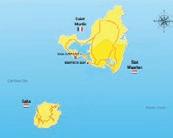
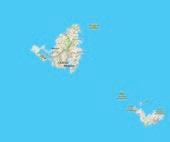
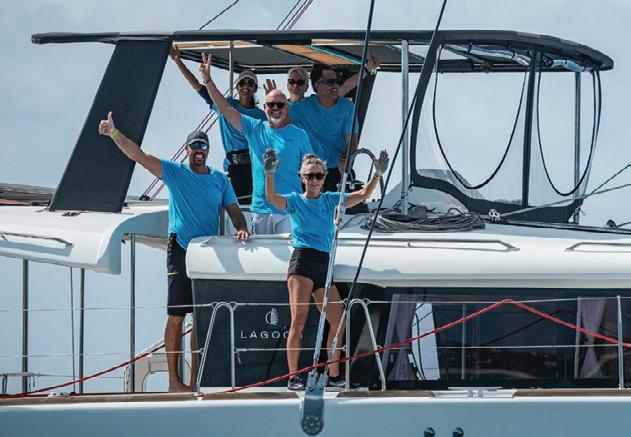

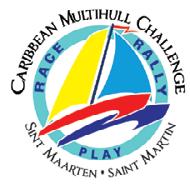
DECEMBER 2022 CARIBBEAN COMPASS PAGE 10
Continued from previous page
TIM WRIGHT / WWW.PHOTOACTION.COM G O L D B R O N Z E S I L V E R YACHT CLUB PORT DE PLAISANCE
2023 9.44x6 CaribCompassAd.indd 1 12/2/22 12:26 PM
The Challenge of Class Allocation and the Need for Racers’ Understanding
by Robbie Ferron
So often you hear regatta participants say that they have been put in the “wrong” class. This article intends to show that it would have great value to regatta participants if they were to understand the challenges of class allocation and the well considered thinking that goes into allocating classes.
The goal of a class allocating committee is to produce the closest possible racing for the competitors. This has to be the basis of competitors’ understanding of the challenge the committee faces.
There are two dimensions that play major roles in designing the classes. These are rating band and boat type.
If boats’ calculated ratings are close together, then you might assume that they would be sailing close to each other. However, you can have boats that have the same rating but that are not suitable to race against each other. For example, two boats could each have a rating of 0.872, but if one is a sport boat and the other is a large racer-cruiser weighing multiples of the sport boat, they will perform very differently in different wind strengths and sea conditions. They will not race well against each other. Thus, putting all similarly rated boats in the same class doesn’t always give fair competition.
The class allocation committee’s work can also be influenced by an inadequate knowledge of the individual boats concerned. You may have two boats that have identical hulls, say two Beneteau 40.7s, but one might be well prepared and set up for racing and the other mainly prepared and rigged for cruising. The temptation to put them in the same class must be avoided and instead more information gleaned on the boats. It may well be that — with this further information — everybody will be happier with the class they end up in, but class allocation committees do not always get this information in a timely manner.
The really tough parts of class allocation occur when a boat does not fit anywhere, especially when the boat clearly has very high or very low potential. Do you put a very high-potential boat in a class they have a good chance of winning and upset the (possibly) regular winners in that class? Or, when there is nowhere else to put it, do you put a very low-potential boat in a class where it can hold back the race program?
There are many impossible choices. What do you do if your entry list is constituted of nine sports boats and one conventional cruiser-type boat? Do you tell the cruiser to go in a class by himself? What if the majority of boats have ratings in the high 800s and there
is one boat with a rating of 670? What do you do if all the boats are planning to sail with a spinnaker — except one?
Class allocation can best achieve its goals when there is a large entry list, the rating bands are close, and the boat types are all similar — especially with no radically different boats. Then it is a hugely satisfying experience for a class allocation committee and a general happiness outcome is likely. But in the Caribbean there are many smaller events where happiness is an unlikely final scenario unless the regatta participants have an understanding and kind acceptance of the challenges the class allocation committee faces.
In the recent past, race organizers have been faced with issues regarding canting keels, water ballast, carbon masts and quickly planing hulls. Those discussions now have all settled down. But one of these days, class allocation committees will be confronted with foiling yachts — they’ll have to put them somewhere. Good luck with that!
Robbie Ferron has been involved in Caribbean sailing since starting the Sint Maarten Yacht Club in 1980. In same year he founded the St. Maarten Heineken Regatta, which has become a major player in Caribbean sailboat racing. He served for ten years as president of the Caribbean Sailing Association and has initiated numerous other sailing events, including one-design regattas held in St. Maarten’s Simpson Bay Lagoon.

DECEMBER 2022 CARIBBEAN COMPASS PAGE 11
CLASS ALLOCATION
all similarly rated boats in the same class doesn’t always give fair competition.
Putting
by David H. Lyman
Two groups of yachts head to the Eastern Caribbean each fall. One group leaves Newport, Rhode Island, and makes a stop in Bermuda — it’s right on the way. This is the NARC Rally, the North American Rally to the Caribbean, which ends in St. Maarten. The other is the Salty Dawg Rally, which departs from Hampton, Virginia, at the entrance of the Chesapeake Bay. This group makes one long 1,700-mile, nonstop voyage, through the Bermuda Triangle, to Antigua.
The 2022 NARC Rally
The 2022 NARC Rally of 19 boats, plus three from the Salty Dawg Rally that tagged along with them, departed Newport at the end of October. During the briefing on Friday, October 19th, the weather service Weather Routers Incorporated gave a narrow “weather window” of opportunity for departure. Skippers could choose to leave on Sunday and meet nine- to 13-foot seas in the Gulf Stream on Tuesday. Or
“More rain than normal the first two days, then we motored for a day, then nice sailing in trades the last day.”
All in all, this year’s NARC Rally was a “piece of cake,” without serious incident and fast passages on both legs.
The 2022 Salty Dawg Rally
The Salty Dawg Rally was a different story.
More than 120 boats gathered at the mouth of the Chesapeake Bay, poised for the voyage to Antigua. Departure day had been set for Tuesday, November 1st. But a disturbance in the middle of the Bermuda Triangle had Chris Parker, from the Marine Weather Center, worried. He and his team were providing weather routing advice to the rally and didn’t see a weather window opening for the southeast run down to the islands, not as long as that disturbance lingered.
There were options, he pointed out. Boats that wanted to sail to Bermuda and join the NARC for the run south to the islands could do so, if they got to Bermuda before Friday, November 4th. It’s 600 miles, so at 6.5 knots that’s three and a half days.
Four boats left the Chesapeake on Sunday, October 30th. One turned back, but Solana V, Endeavor 2 and Cameo made it across in time. Cameo, a 48-foot Leopard catamaran with Douglas and Ia Hauck aboard, reported:
“First night in the Gulf Stream was rough, winds from north. One of the main sheets broke in the middle of the night, but able to keep the main up. Fixed the following morning.
“Day Two—noticed one of the shrouds too loose. Able to fix same day.
“Day Three—nice sailing, but night very rough. Confused seas. Took main down during the night when it got squally. Motor-sailed the rest of the way with full jib. Hit a 40-knot squall a few hours before entering the harbor. No issues entering the harbor in the dark with north-northeast winds.”
Heading South
Thirty of the Salty Dawg boats that left the Chesapeake on October 30th and 31st sailed around Cape Hatteras and headed south inside the Gulf Stream. Then they turned east, crossing the Gulf Stream near 34°N, and then headed south again for the Bahamas. Another seven boats elected to creep along the shore or down the ICW. A few dropped out of the rally altogether.
Sixty boats remained in Hampton, Virginia, waiting for conditions to become favorable for an offshore departure. They waited nearly two weeks.
While most boats were bound for the Bahamas, two Salty Dawg boats and another half-dozen non-rally boats were planning to follow Parker’s option of continuing south along the Bahama island chain, then turning east. By the time these boats reached the Turks & Caicos the winds would be more westerly, wrapping around the developing low. The low would have stalled the trades, sending the air north to swirl around it. The “Thornless Path” became a viable alternative. Continued on next page
leave on Monday when the seas would have diminished, but the winds on the next Friday, on the approach to Bermuda, would have clocked into the east. The skippers at the briefing huddled to discuss options. They all elected to depart on Sunday, October 21st, in favorable winds.
The Gulf Stream this year was the most favorable I’ve seen in 40 years. It was farther north than usual, just where you wanted it to be. At 39°N and 70°W the stream took a meander to the southeast, heading toward Bermuda, for nearly 200 miles. On arrival in Bermuda, Hank Schmitt, who has been organizing the NARC Rally for 22 years, reported that his boat had spent 30 hours in the stream, getting a two-plus knot push and shortening the voyage by half a day. Hank, on his Swan 48, Avocation, arrived in Bermuda three days and 22 hours out of Newport.

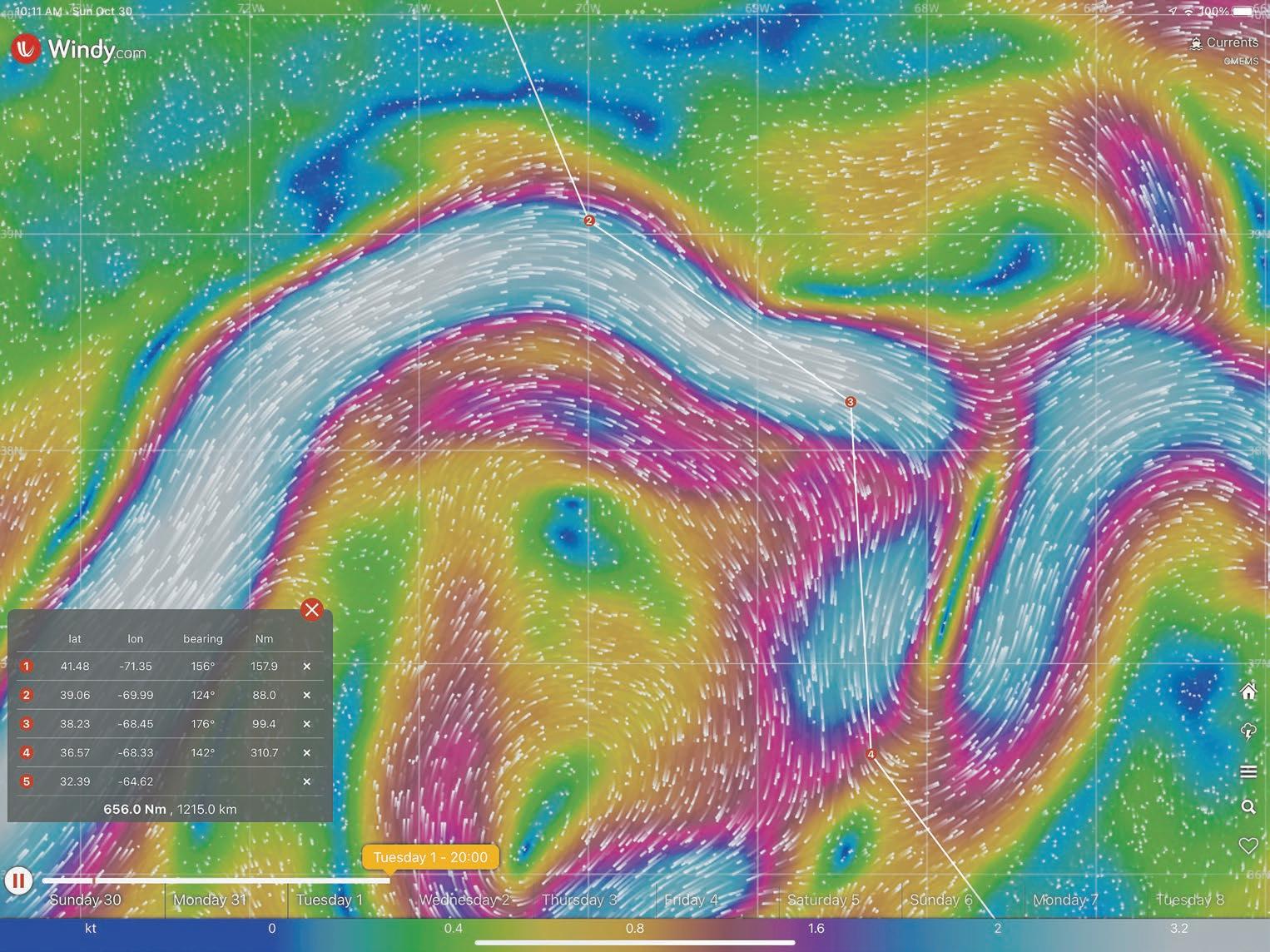
Arrowhead, a J/46, was the first boat to arrive, in three days and 19 hours. She was the only Salty Dawg boat to make it. The two other Dawgs that had started with the NARC fleet turned back when they neared the Gulf Stream. They returned to Newport, only to sail south again to join the other Salty Dawg boats in the Chesapeake.
Steve Burlack, skipper on Arrowhead, reported, “No major issues. Fun trip. Pretty much the same as the other four times I’ve sailed here. Gulf Stream no major issue. One rough night with squalls, thunder and lightning, winds 30-plus. Then a good reaching breeze filled in and we were flying the rest of the way. Mostly one reef in the main and the number four on the inner forestay. We rolled out the 104-percent jib on the last day. We were in company of the NARC boats the entire trip. Four of us came in pretty much together.”
After three days of partying, reprovisioning and repairs, on Tuesday, November 8th, half the NARC fleet got underway out of Bermuda for the 875-mile voyage to St. Maarten. The rest left the following weekend.
On Sunday, November 13th, five and a half days out of Bermuda, Avocation, with a crew of six first-time offshore sailors aboard, arrived in Simpson Bay, St. Maarten, the first of the NARC rally boats to make port.
“Pretty easy passage down from Bermuda,” Hank wrote.
DECEMBER 2022 CARIBBEAN COMPASS PAGE 12 SAILING TO THE CARIBBEAN
It’s Not Always Easy, Especially This Past Fall
Left: The 2022 NARC Rally departed Newport, Rhode Island, on October 21st. First stop, Bermuda.
Below: NARC navigators could use the Gulf Stream to great advantage.
WINDY.COM
WINDY.COM
That disturbance in the Triangle developed into a subtropical storm. It couldn’t make up its mind where to go, then did. It headed west, directly for the Abacos, where 30 of the Salty Dawg boats had arrived and were hunkering down. Mark Hill, on Oasis, his Tayana 48, was at the Abaco Beach Club Marina. He told me that the storm arrived on Wednesday, November 9th; it was a wet and wild day then night. When Nicole left it was a full-fledged Category 1 hurricane, and it slammed into Florida’s east coast the next day. Mark reported winds mostly 50 knots, gusting to 70. His boat had minimal damage: the topping lift stretched and the boom cracked a solar panel.


The Southerly Option
The two catamarans in the Salty Dawg Rally, INO and Vanamo, along with a half a dozen non-rally boats that took Chris’s advice, bypassed the Bahamas and made it all the way to the Caribbean in one go, in less than ten days. “We had no plans to stop in the Bahamas,” Mark Kerestres told me on a phone call right after INO, his Catana 46 catamaran, arrived in Puerto Rico. INO, named for a Greek goddess, points exceptionally well for a cat, Mark admitted, so “we kept sailing south, west of the ridge like Chris Parker told us — the ridge that developed into a tropical storm, then a hurricane. We just managed to keep going.” They threaded their way through the lower Bahama chain at ten knots in a southsoutheast wind of 20 to 25 knots with higher gusts in squalls. “We would have stopped in the Bahamas if the weather deteriorated.
Bahamas was a backstop, an emergency shelter along the route if needed.”
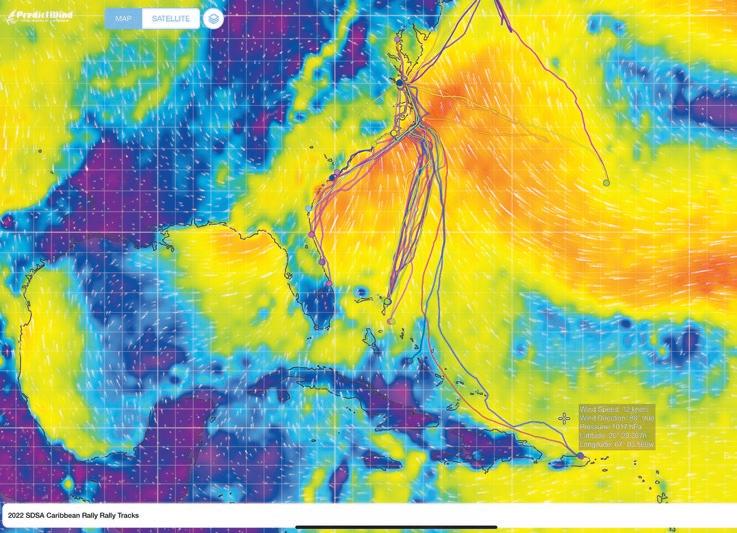
They had to motor-sail along the north coast of Hispaniola and arrived in Puerto Rico on Thursday, November 10th, ten days out of Hampton. They planned to slowly make their way southeast, exploring the islands on the way to meet the rest of the Salty Dawgs in Antigua, if and when they got there.

The catamaran Vanamo stopped off at Cockburn Harbour in the Turks & Caicos for fuel, bypassed Puerto Rico, stopped in St. Thomas for more fuel, and arrived in St. Maarten on Saturday, November 12th — the same day the 60 Salty Dawg boats bottled up back in Hampton finally headed out for Antigua. A look at the Predict Tracker shows that most of those 60 boats that left on the 12th were heading south-southeast, to pass south of Bermuda. As this article was being written, Chris Parker told me they were headed for some nasty weather. A trough to the east was predicted to produce enhanced tradewinds below 22°N. Winds would likely be east at 25 to 35, with stronger winds to 50 in numerous squalls. He advised the rally members to get as far east as 61°W before turning south, to put the stronger trades on the beam or quarter as they headed back to the islands. He added that a lot of these boats might make landfall in the Virgin Islands rather than Antigua.
Afterthought
I’ve made the run to the BVI from the Chesapeake once, from Beaufort Inlet twice, and from Fort Lauderdale once. I’ve made the Newport-Antigua voyage more than a dozen times. I don’t know if I would have waited with the others in Hampton for a better weather window, or joined INO and Vanamo and just headed south and made the best of it. I certainly would have considered Bermuda as a viable option. But then, leaving from Newport, even if it can be a bit rough, has always gotten me to Bermuda, then the Eastern Caribbean, with minimal fuss. But I have to tell you, there may be something to these shallow-draft catamarans and making 200-plus miles per day — and this is coming from a die-hard deep-keel sailor from Maine. Sometimes it’s best to go when you can go.
David H. Lyman has more than 20 seasons experience sailing in the West Indies. He’s an author and photojournalist who writes regularly for Caribbean Compass, Cruising World, SAIL and Ocean Navigator. His story on Sarah Schelbert and her boat, Alani, is on page 14 of this issue. You can read all his most recent articles on his website, www.DHLyman.com
DECEMBER 2022 CARIBBEAN COMPASS PAGE 13 Continued from previous page
WINDY.COM
PREDICT WIND
YACHT INO
Although not always easy, this year’s NARC fleet reported a ‘piece of cake’ passage from Bermuda to St. Maarten.
The main Salty Dawg fleet left from farther southwest, at Hampton, Virginia, and generally a bit later, with navigators choosing various routes toward an ultimate landfall in Antigua.
INO, a Catana 46, bypassed the Bahamas and made it all the way to Puerto Rico in one go, in less than ten days.
An Adventurous Young Woman, a 62-Year-Old
Wooden Sailboat,
and Life in the Caribbean
by David H Lyman
I first met Sarah Schelbert at last year’s Antigua Classic Yacht Regatta. I was walking the Yacht Club docks, looking for a story, and stopped to admire a classic 36-foot wooden sloop, Alani. The deck was crowded with crew furling sails, coiling lines. A thin, young, fit woman with dreadlocks was obviously in charge. I inquired if she was entering the regatta. “Yes,” she said. “My first.” There was a story to be told.
I learned Sarah was the only female skipper in the regatta of 35 boats, and after three days of hard and wet racing, she had won her division. One evening, a few days after the regatta, Sarah and I sat at Pineapple House where her story unfolded.
Sarah, at 25, had escaped her small village, Crailsheim, in southern Germany, soon after graduating from college. She planned on heading for Panama, on a quest to see the world and surf. She’d not sailed before, or even been on a boat larger than a kayak, but as a surfer, she’d come to love the sea and the thought of venturing out on it. She hopped a ride to Grand Canary, and from there, aboard a 78-foot sailboat called Aria, headed for the Caribbean. She was the only female among a crew of seven. When they reached Grenada, she left the boat. It was not long after that she met a young Canadian solo sailor who’d just arrived on his small wooden boat, a Novibuilt Herreshoff ketch. She fell in love with the small boat, and the idea of living and sailing the Caribbean, and then she fell in love with the young man.
The couple sailed together that winter of 2013, visiting the ABC Islands, Haiti, Jamaica, and then Central America. She backpacked through Guatemala while he flew back to Nova Scotia. The couple spent a second season cruising together in Central America. Sarah helped her young man and his family restore a 78-foot classic schooner, Sorca. But shortly after they launched the schooner, the relationship ended and she flew home — heartbroken.
The gloomy skies of Germany didn’t help and the idea of sailing wouldn’t leave. She longed to be back in the Caribbean, on a boat. She landed a crew position on Eye of The Wind, a 132-foot windjammer, heading for the islands. She got as far as Cuba. When they landed she headed for Guatemala, where she had friends she’d met in Nova Scotia.
It was here, tied to a dock in Tijas Bay on the Rio Dulce, she found a derelict 36-foot wooden sloop. Alani had been built in 1960 in Denmark after a design of Alan Gurney. It needed work. How much the owner didn’t say, but he’d sell it to her real cheap.
Living on a backpacker’s budget, Sarah, with the help of her parents, acquired the boat. With no professional survey, no insurance, , no idea about the the extent of repair needed, and no skills to effect needed repairs, Sarah plunged in.
A few weeks into the project, she discovered the boat was not seaworthy. The engine was questionable, there was rot, the backstay came loose, and there was a serious leak by the sternpost. She found a six-foot section of cracked frames and not a shipwright in sight.
Someone told her about a village on the north shore of Belize where local shipwrights were building wooden boats. She threw off the lines and sailed there, pumping all the way. Yes, there were shipwrights there, but no travel lift, no marine railway, just a beach. Fine for hauling out the shallow draft, flat-bottom boats they built there, but not a full keel, deep-draft boat like Alani She paid the men to build a cradle. When it came time to haul the boat and cradle ashore, the entire village turned out to help, but the sand was too soft. No go. Back to Guatemala. On the way, the engine’s head gasket blew and the engine died. Now what?
“No engine, a leaky boat, nobody around to fix my boat, and no money left. I had no idea of what to do,” she told me. She got a tow to a boatyard up the Rio Dulce and hauled the boat. What options did she have? Fly home, get a job, earn money and return? Buy another boat?
“I didn’t give up.” She heard that sailors were needed to teach sailing and skipper charter boats in Belize. She got hired. Now, she could earn her repair money in the Caribbean.
Over the next two years, Sarah worked as a charter skipper a few months at a time, then returned to work on Alani. She stripped the boat, “to see what I had.” During those two years, Sarah and a few friends replaced ribs and planks, the sternpost and horn timber. They tore out the entire cockpit and rebuilt it. Ribs were laminated and sistered, floors were replaced. Sarah was acquiring the skills of a shipwright.
After finishing the structural repairs, Sarah and her friends sheathed the hull in fiberglass. She replaced the chain plates and the rig, and installed a new engine. With money from her job as a charter boat skipper, slowly, the boat came together.
She now knew her boat intimately.
What next?
With the boat fixed and seaworthy, Sarah was itching to begin exploring. The trades and tall islands of the Eastern Caribbean were calling.
In November of 2019, Sarah, her three-month old mutt, Maya, and a novice sailing friend left the calm waters of the Gulf of Honduras and sailed into the Caribbean Sea.

DECEMBER 2022 CARIBBEAN COMPASS PAGE 14
Continued on next page
“This was my first time being the captain on my own boat, sailing offshore. Sailing behind the reef off Belize was easy, but with ocean swells and strong trades, I was nervous. Was my boat strong enough? Was I?” They sailed along the south coast of Cuba, her friend left, and she singlehanded through the southern archipelago of Cuba. Then her younger brother, Lukas, joined her.
“It was a constant fight to get east. I was frustrated. This upwind sailing, with persistent winds on the bow, spray, was not what I had been dreaming about.” They slogged on. Sarah, her brother, the pup, and Alani arrived Dominica in the spring of 2020, just as Covid shut down nearly the entire Caribbean. That’s where they stayed for a while. But by May, Sarah was worrying about hurricane season. She also wanted to find work, earn money, and get a social life.
“I sailed to Grenada, alone,” she told me. “And waited on the boat for the two-week quarantine period” in St. George’s. She then sailed around to Hog Island and anchored, but nothing was happening there. No work, no friends. In September, she sailed up to Tyrell Bay on Carriacou. Here she found boatbuilders, boat work, and friends. She also started working for LTD Sailing, based in Grenada, teaching sailing classes. Life was now looking more like the dream she’d had.
Sarah heard about the Classic Yacht Regatta in Antigua, a renowned gathering of traditional sailboats that assembles in English Harbour each April. There are three days of racing and a week’s worth of parties, but the real reason these yachts and their crews come together is the boats themselves. There are half a dozen divisions: Classic, Traditional, Vintage, Spirit of Tradition, Historic and Tall Ship. Alani is a wooden, full, deep keel boat and would qualify for the classic division. Sarah wanted to enter, but Covid forced the cancelation the regatta that year, 2021.
But 2022 was another story. She entered. Sailing north, she picked up crew: her brother, who was still in Dominica, now with a girlfriend, and her uncle. No one had any racing experience, but no matter, they were family.
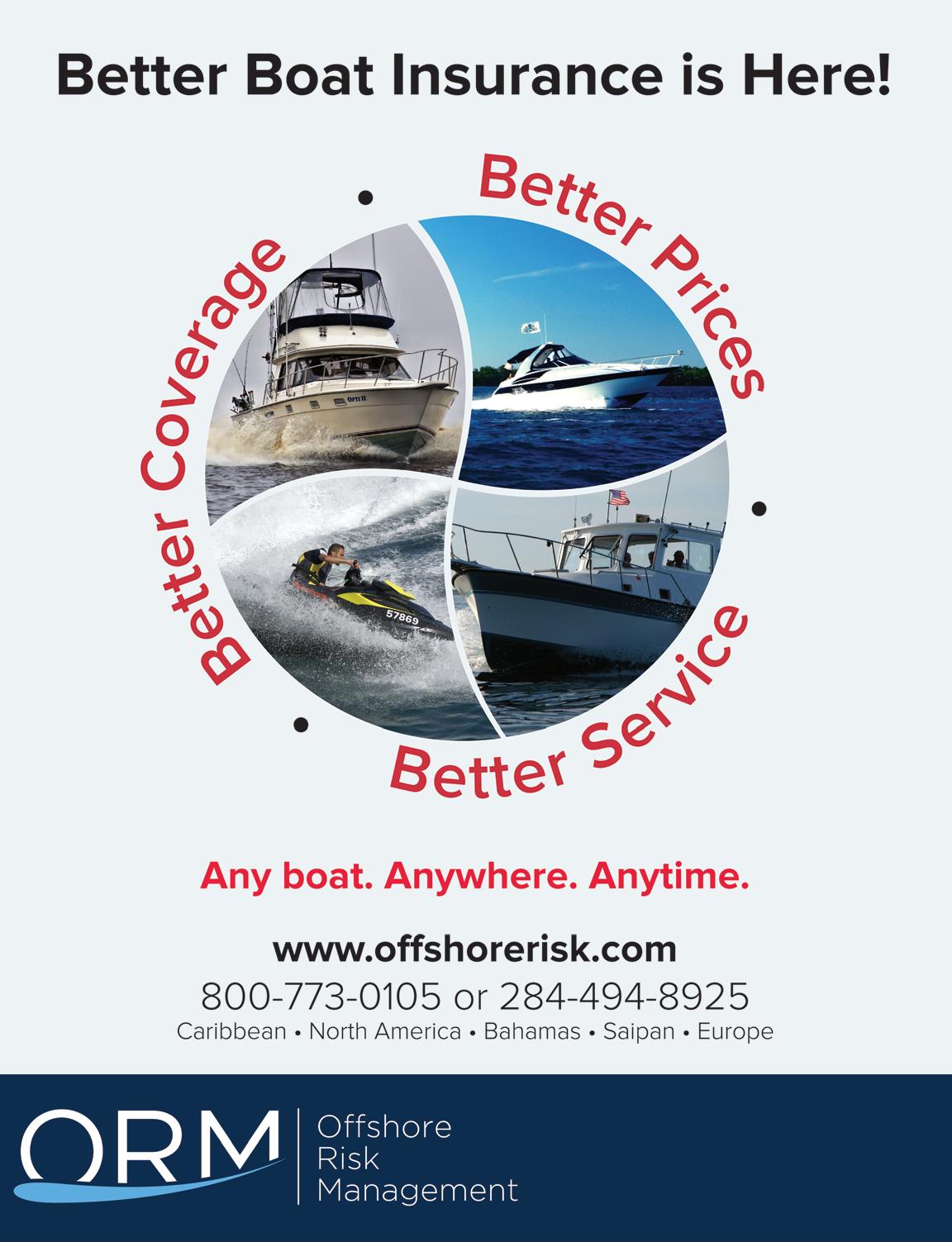
They arrived and were given stern-to dock space right next to Thorp Leeson’s classic sloop, Apollonia, a 1963 Bill Tripp-designed 56-foot wooden yawl he’d just rescued and restored. They were right in the middle of all the action. The crew had only one day to practice sail changes, setting the spinnaker, and tacking, before racing began.
“I’ll admit I didn’t understand, or even know, the racing rules then. I didn’t know the start sequence, or
who had the right of way around the marks, or where the marks were.”
The first day of fleet racing last April was boisterous. The 35 boats that crossed the start line found the trades blowing 25 knots and more; the seas were eight to ten feet. (Stronger conditions the day before had forced the cancellation of the Singlehanded Race.) No one came ashore dry. Spray swept the decks of even the largest yachts. Columbia, the 142-foot schooner, buried her bowsprit numerous times.
“We ripped out the jib block on the port toerail,” Sarah told me when she had backed Alani into her space at the dock after the race. “We were so late crossing the finish line,” she added, as the crew furled sails. “The committee boat had already departed. I was crying all the way in. ‘My boat is not fast enough. I’m embarrassed to even be here. Look at all these brightfinished yachts around us.’”
“That may be,” I told her, standing on the dock. “But you placed first.” She didn't believe me.
The next two days, they raced Alani hard, and of the three boats in their division, she came in first each time.

“Just the fact we went out and finished each day’s race made me proud of my crew and of my boat. I’d fixed her up and sailed all the way here from Guatemala, and we won. I learned so much about my boat and in the process it gave me a great feeling of empowerment.”
During the awards presentation on the regatta’s final evening, Sarah and her crew were cheered as they climbed onto the stage to receive their prize for first in class: a prestigious Locman timepiece. But all firstplace awards were men’s wristwatches. No problem, the representative said, come by the store tomorrow and exchange yours for a lady’s watch that suits your fancy. Sarah was breathless viewing the selection in the Locman shop at the Yacht Club the next day. “This is the most expensive thing I have ever worn on my body,” she exclaimed.
On the last evening, with the day’s competition put to rest, the dock party at the Antigua Yacht Club was standing room, or dancing room, only. There was a steel band, and with plenty of Carib beer and Mount Gay rum the boats’ crews, skippers and owners partied until past midnight.
Next year’s Antigua Classic Yacht Regatta has been advanced by two weeks: it will take place from Wednesday, April 19th to Sunday, April 23rd, 2023. I plan to be there.

Will Sarah and Alani be at the Antigua Classics next April? There’s a good possibility. I reached Sarah via email recently and she sent me this update.
Hi! I’ve been back in Grenada since the Antigua Regatta. When not out teaching sailing classes with LTD Sailing, Maya and I mostly stay in Tyrell Bay, Carriacou. Lots of friends around and I feel very much at home there. I took part and helped organize Carriacou Regatta last August. It was super fun. The regatta bug has definitely bit and I am eager to learn more about my own boat’s performance and about racing in general.
I did a bunch of upgrades on Alani this summer. She now has a set of bigger winches, and a new main and headsail. During the annual haulout in September, I replaced the old roller furler with a new one.
Life is really good! I feel very at home here in the Caribbean. Sailing has become second nature and I am looking forward to new challenges in the future. Would love to do more woodwork, maybe even be part of a crew building a new wooden boat. But you never know what life will bring, maybe something completely different. As long as we stay open and curious and follow the things that fill our hearts with joy, there will always be a new adventure and more learning and growing out there for us!
Sarah S.
DECEMBER 2022 CARIBBEAN COMPASS PAGE 15
Continued from previous page
Catching up with Sarah and Alani
Alani racing at Antigua Classics.
PROGRESO: DISCOVERING THE CARIBBEAN’S NORTHWEST CORNER
Club de Yates (Yucalpeten Yacht Club) was in the process of erecting two new condo towers to house boating residents and patrons of their establishment.

Of the 15 available marina possibilities, I chose the security of the gated Alacranes Marina, its slips inhabited by sailors on yachts of all types from all over the world. It boasts a pool and an onsite cafeteria. My docking fees cost less than US$300 per month, with 100-volt electricity and water hookup included. Alacranes Marina was clearly the popular home to the vessels of most of the sailing community in Progreso. However, their additional liveaboard fee of 2000 pesos (US$100) per month per person discourages some of those visiting cruisers who may intend on longer-term liveaboard dockage.
Since I don’t live aboard Premier Cru full time, I chose this marina, although there were several others available. In one of these I met a pair of liveaboard cruisers who helped me and with whom I got along famously. JoAnne Bond and her husband Captain Keith, fellow cruisers from Canada, had arrived in Progreso on Bridlewilde, a 33-foot Al Mason sloop, at almost the same time as I did. Their chosen marina is Marina Paraiso. It’s small and intimate and has everything they need: pool, showers with hot water (unusual in parts of the tropics), water hookup, storage locker, liveaboard fee and power included. The owner lives in the marina, which has a lovely, thatched-roof palapas and social gathering spaces. JoAnne and Keith have a scooter and an allotted parking space within gated security. The marina staff are all a family and they include the yachties as such, which makes for great relationships. The docks and slips are safe, and the owner is an avid sailor. JoAnne and Keith are very happy there, as am I with most of the same facilities in the nearby Marina Alacranes.
by Michael Magee
Like many a cruising sailor, I’ve spent years in the eastern and southern Caribbean, exploring the Virgin Islands and down through the Leeward and Windward chain all the way south to Trinidad.
In the southwest I’ve explored the ABC Dutch Antilles and Colombia, as well as the San Blas islands and Panama.
But just prior to the Covid-19 pandemic, I clawed my way up the east coast of Central America on my 2006 sloop, Premier Cru (a Beneteau Oceanis 42), to what is perhaps the least visited Caribbean corner — the Gulf of Mexico, or specifically, the port of Progreso on the north coast of the Yucatán Peninsula.
I initially stopped at the port of Cancún on the peninsula’s eastern tip to clear Mexican Customs and Immigration. I used the services of a port agent, which I highly recommend (about US$150 for everything), and, since I intended to stay and discover northern Mexico, I went to the Port Captain’s office to take out a ten-year Temporary Import Permit (TIP) for Premier Cru. This is mandatory if you plan to leave your boat in Mexico for an extended period. I also added a third-party liability insurance policy with a Mexican insurer (US$240 for a year).
That done, I sailed west from Isla Mujeres to Progreso overnight, staying four miles offshore for most of the passage due to the shallow coastal conditions.
As I cleared the longest pier in the world (four and a half miles), I could see the harbor basin entrance looking like any other — until I sailed in and watched it open like a white rose with boats of all kinds on a scale that truly surprised me!
Progreso is home to one of the biggest squid fishing fleets in the world. That was apparent as I sailed past their boats and proceeded farther inland to a host of marinas that provide excellent facilities and great shelter.
I motored past two very large boatyards, one of which had the biggest haul-out lift I’ve ever seen. I remember thinking that this harbor must have just about every service a yachtie could possibly need. This certainly turned out to be true. And those services, along with slip costs, are relatively inexpensive compared to most everywhere else I’ve been in the Caribbean.
It’s only 20 miles north of the Yucatán state capital city of Mérida and is considered Mérida’s beachfront. Moreover, the state of Yucatán has for years remained the safest state in Mexico, and is recommended not only for its beauty, but also as a very secure place to cruise and live.
Progreso, with its 18 miles of sandy beach, is also home to a large fleet of recreational boats, most of which are located in the protected harbor called Yucalpeten (Progreso), which has 15 marinas of all sizes and levels of comfort.
Upon my arrival I made a courtesy call on the Port
Captain to announce my intention to temporarily keep Premier Cru in Progreso in order to do several upgrades on her: new cockpit and transom teak, sail reconditioning, beautification of the companionway steps, modification of the refrigerator to 110 from 220 volts, new decals and some painting, upholstery touch-ups, a new bimini,
Shortly after my arrival, I met the affable Ignacio (Nacho) Ponce when he came to my boat by dinghy to greet me and tell me about the wonderful pizza at the local Club de Yates. He is the club’s commodore and told me that I was welcome. Membership is available but not required to visit or to eat and drink at the club. It was founded in 1996 and has been growing in membership, activities and fleet ever since.
bottom sanding and antifoul painting. There are so many skilled marine workers in Progreso that almost any job can be handled, and at great value.
I then took a tour to find boat accommodation. For vessels with drafts of four and a half feet or less, Marina Laguna Mar offers slips right on the edge of the entry channel.
Marina Sureste was preparing to add additional dock space, and a brand-new marina, called Grand Marina and located in a perfectly sheltered hurricane hole, is now open with over 100 new slips.
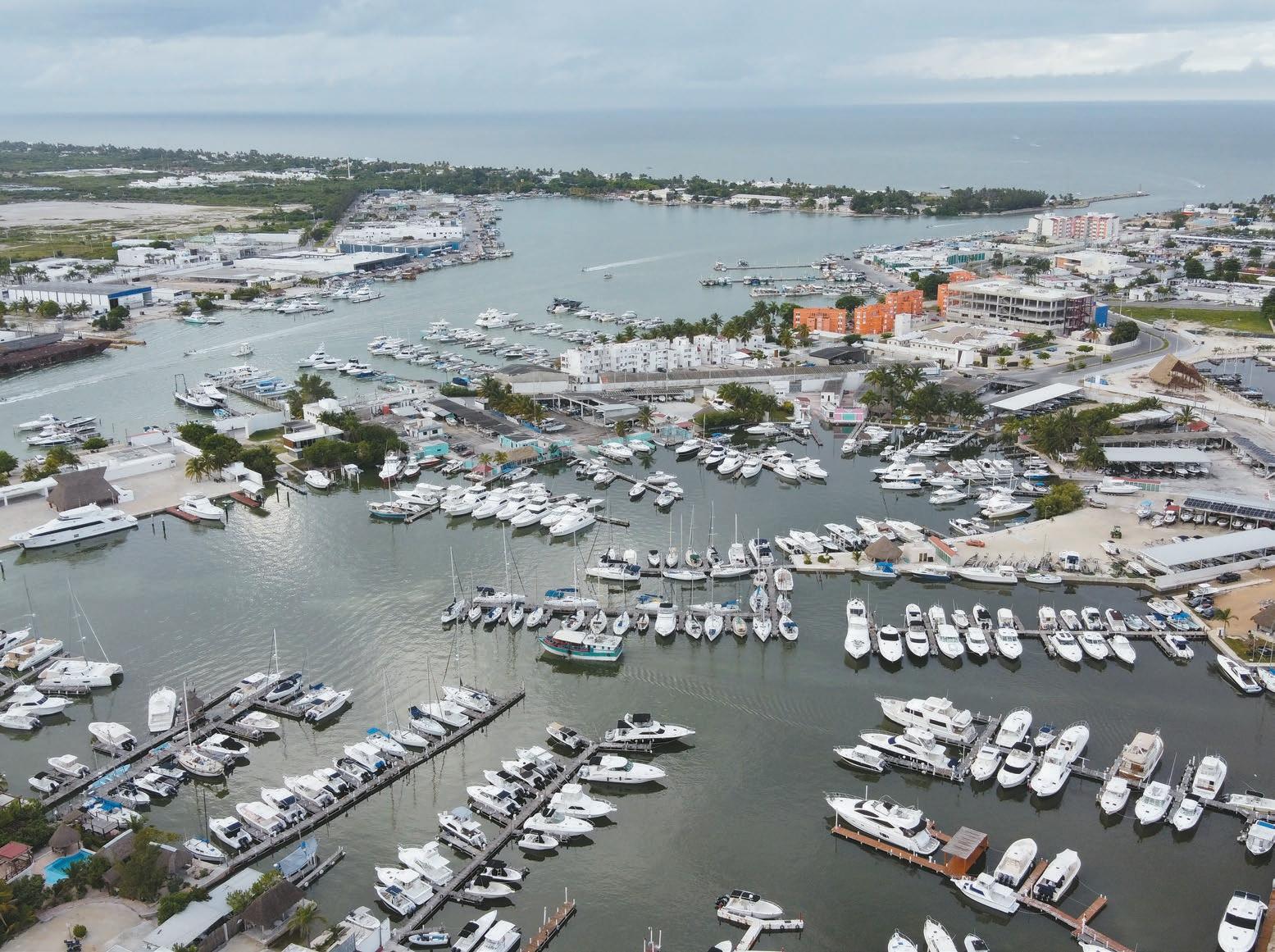
Yucalpeten Resort Marina, the largest and most expensive marina, located next to (but not part of) the
I found it to be a great place to get together to socialize with other cruisers. Over a few very cold Pacifico cervezas at the club, Nacho told me he was born in the Yucatán and became a sailor and boater due mostly to the tradition that Yucatecans enjoy the warm and shallow waters of the Gulf all year round. He began as a windsurfer at the age of 13 and eventually worked up to a Beneteau Oceanis 45, and took part in the club’s races and rallies to nearby ports and islands — regularly to Alacranes Reef, to old colonial Campeche and Isla Mujeres. Recently I raced against Nacho in the club’s first post-Covid regatta with my friend and slip neighbour Kerwin Davidson, a member of the club. We came in second in a fleet of more than 50 yachts!
DECEMBER 2022 CARIBBEAN COMPASS PAGE 16
Continued on next page
I sailed in and watched the harbor open like a white rose with boats of all kinds on a scale that truly surprised me!
The Yucatán Yacht Club’s clubhouse is a 1930s-vintage oceanside home that has been renovated. The club’s burgee has 11 stars representing the 11 ports in the State of Yucatán.
IGNACIO PONCE
CLUB DE YATES
Continued from previous page
Nacho is one of the most active and foresighted commodores I have ever met. He’d realized early that although Progreso is well known by the locals for its
Also, there are three marine chandleries within walking distance of any of the many marinas. They are Solutions Náutica, Marina Silcer and Marina Sureste, which has a large marine equipment store as well.
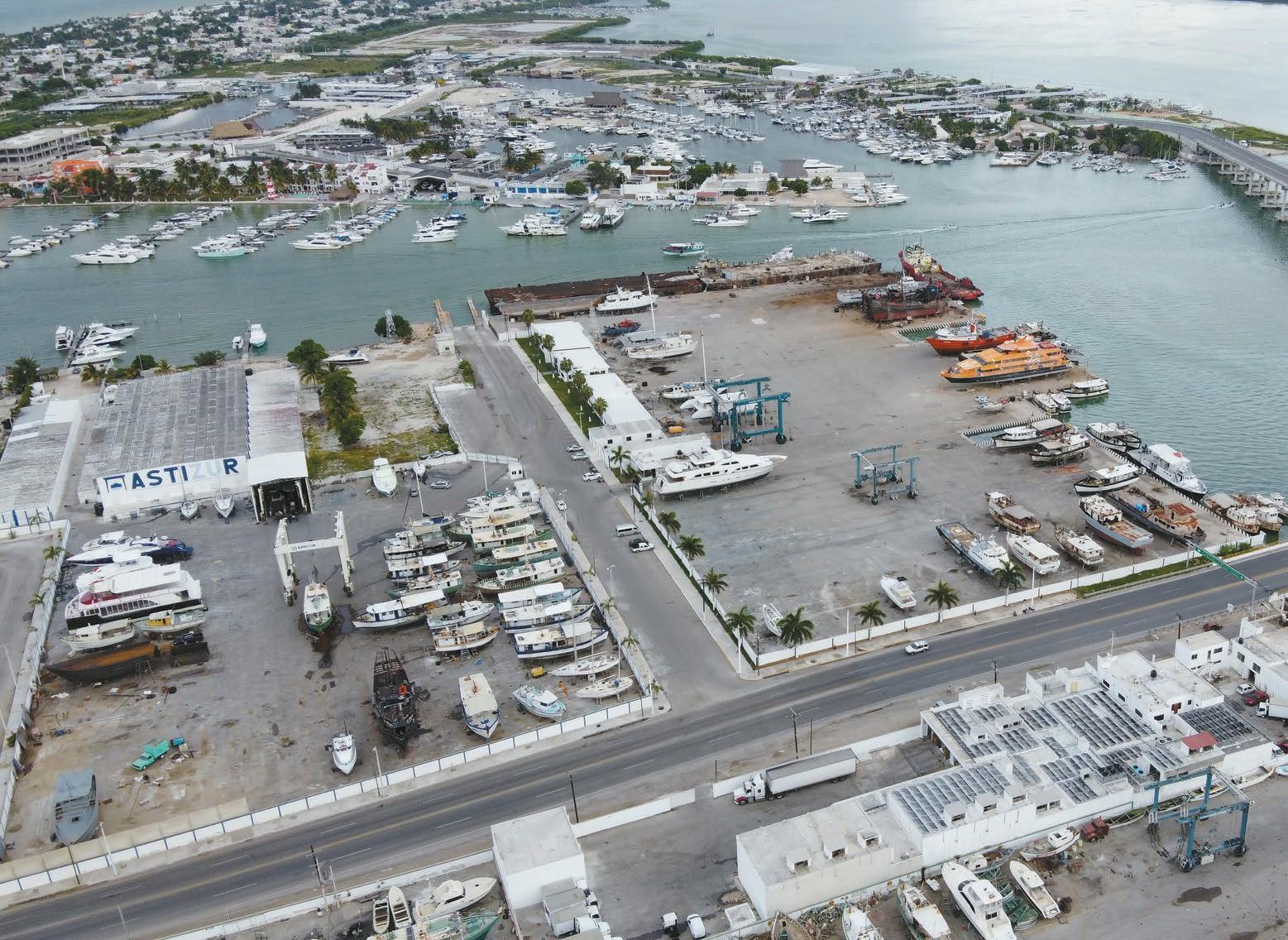
Ashore in the Area

facilities, beaches, well-protected harbor, and closeness to the capital city of Mérida, most cruisers (like me) had no idea it existed! So Nacho got involved in the yacht club to promote, along with local authorities and businesses, sailing and boating as a source of income and growth for the community. He believed then, and still does, that an activity such as boating can have a huge influence on the local social and economic wellbeing of the area.
I motored past two very large boatyards, thinking that this harbor must have just about every service a yachtie could possibly need.
You can find a lot more information in the Yucatan Cruising Guide at http://yucatancruising.com/Home.html
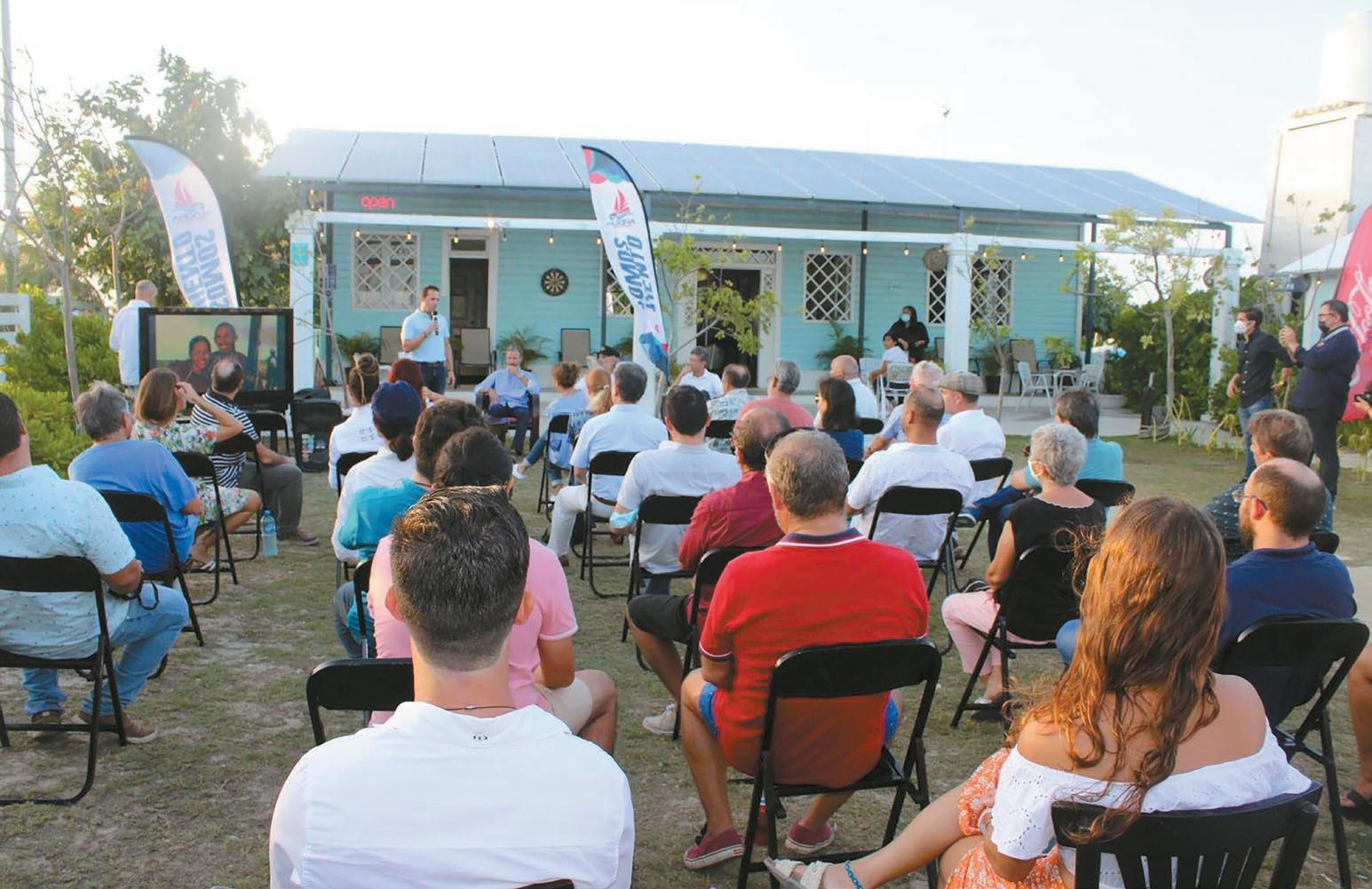
Flying from my home in Montreal to Merida, or through Cancún, I return to Premier Cru regularly. I am always quite relaxed about the boat when I am not there, even in the hurricane season. Progreso has good protection from Atlantic hurricanes due to the landmass of the Yucatán and the fact that arriving hurricanes tend to want to spin to the northwest as they arrive in the Caribbean and then head north. I have spent two summers in Rio Dulce for hurricane season protection and repairs, and while it is a very nice place I have found that Progreso provides good protection and much more value in the wide range of services and skills available.
I am delighted to have found Progreso and could not have chosen a better location in all of the Western Caribbean.
The history of the area is worth exploration.
Many specialized local ecotours are available from tour operators, or groups may put together specific trips for their individual taste.
Some popular day-trip destinations from Progreso are the mango boat tours of the Celestun Biosphere Reserve to view thousands of migrating flamingoes, the Santa Barbara Cenotes of Humon, a connection of the underground labryinth of freshwater rivers, caves and waterholes throughout the Yucatán. You can take an excursion to Hacienda San José Chakak to learn of the history of haciendas, relax in the exquisite surroundings and enjoy a fine Mexican cuisine dining experience, or choose to explore the ruins of the ancient Mayan city of Dzibilchatun, a half hour drive between Progreso and Mérida. (https:// culturestraveled.com/celestun-flamingo-tour)
It’s also easy to hire your own van and driver and head off for the day. I have really enjoyed visits to the ancient but remarkably well preserved and renovated Mayan ruins at Chichen Itza, and swimming in the numerous cenotes around Mérida, which in itself is a fascinating old but fast-growing classical colonial city. You can find anything you desire in Mérida, ranging from a fresh avocado at the great local market right up to a ticket for the symphony — and all in the safest city in Mexico.
I’ve kept Premier Cru at the Alacranes marina all through the Covid era, and I have a local person who attends to and regularly inspects her. For 600 pesos (US$30) I have the topside decks and chrome cleaned. Plus, in-the-water bottom and prop cleaning is around 700 pesos (US$35).

Area transport is inexpensive by taxi or Uber. JoAnne and Keith purchased a second-hand scooter for all their local travel needs. They got a really good deal!
Fuel is easily accessible at the fuel dock at the entrance to the harbour or elsewhere in several gas stations locally.
Basic provisions including ice can be found at a few local stores within a block of the marinas. Downtown Progreso, ten minutes by car or scooter, has several big supermarkets of which Bodega Aurrera is a subsidiary of Walmart.
A drive or bus to Mérida will present you with the huge Liverpool Mall and next door is a Costco and a Sam’s Club, and close by is a Home Depot. There are bus departures for Merida every ten minutes that can drop you and pick you up right in front of Costco.
DECEMBER 2022 CARIBBEAN COMPASS PAGE 17
IGNACIO PONCE
Commodore Nacho relaxing on his Beneteau 45 after a race. He got involved in the yacht club to promote sailing and boating in the area.
Cruisers gather at the yacht club to hear Alex Irigoyen tell of his three-year round the world cruise with his wife and their three young children.
HOWdo two 30-something-yearolds convert a 43-year-old sailboat to electrical propulsion and beat nearly 5,000 nautical miles eastward in the Caribbean? With a lot of luck, some hard work, and a fair bit of painful learning along the way. Through a series of articles, we want to share it all — the good, the bad, and the ugly. However, first we should introduce ourselves and, more importantly, our boat.
We are two venturesome souls who met in college, lost touch after graduation, and reconnected almost nine years later. With a mutual love of travel, we decided to leave our careers behind and travel the world via sailboat. There was only one problem. We needed a boat.

Enter S/V Vagari. She is a beautifully and strongly built 1979 sloop-rigged Pearson 424. However, her beauty wasn’t always so obvious as she had sat
5,000 MILES AGAINST THE TRADES WITH AN ELECTRIC MOTOR
by Keith Dickey and Rebecca Frontz
The Characteristics of the System
All of this charging leads to the inevitable question: “How much range do you have?” We could talk at length about why this question does not have a simple answer and why it probably isn’t as important as most cruisers think. However, here’s the simple response: our boat has a range of about 25 nautical miles at “cruising speed” without any charging. Assuming a reasonable amount of solar and wind, that distance can easily be extended to 100 to 150 nautical miles. We also carry enough diesel for about 300 hours worth of generator run-time. Running the boat as a diesel-electric via generator and battery charger gives us a range of around 1,000 to 1,500 nautical miles.
In theory, between renewable charging options and the diesel-electric setup, if we are smart with our motor ampdraw and patient enough to allow for renewable recharging, our range is limitless.
You can already see that, just from a charging perspective, this question is difficult to answer. It is further complicated by other factors such as the speed at which we want to move Vagari and the sea state in which we are trying to move. We will dive into these factors in more detail in another article, as well as fully explain the nonlinear energy-to-speed curve. For now, we can assume that without sails, Vagari’s cruising speed is around four and a half knots on average when the batteries are being charged with the generator battery charger and wind/solar. This speed is generally reached with an amp draw that does not exceed the charge coming into the batteries. When using only solar/wind, we can move at two and a half to three knots without draining the batteries. The boat is able to move at hull speed (7.2 knots) with the system, but the energy-speed curve characteristics means that we can only do this for short bursts, generally one to two hours, before depleting the batteries.
Much of these details surrounding the electric motor we have learned over the past year and a half while sailing approximately 5,000 nautical miles eastward. We left Texas in May 2021, had an extremely difficult 19-day passage through the Gulf of Mexico to Belize through a storm, and spent hurricane season in the Rio Dulce.
cutting out the forward 60-gallon fresh water tank. THE CHARGING AND DISCHARGING
neglected for years. Thankfully, we love a good challenge. When we bought her in May of 2018, we knew she would eventually need to be repowered, as she still had her original reverse-mounted 60-horsepower Westerbeke and V-drive. The repower quickly moved up in priority on our lengthy list of boat projects when, in July of that first year, we took her out for a quick day sail only to return to the dock with an overheating diesel and a bilge full of oil.
We would like to say that putting an electric motor in Vagari was by design and that we had researched and planned at length. However, truth be told, it was a very rushed commitment. Around the same time that our Westerbeke was kicking the bucket, another Pearson 424 owner listed for sale a never-installed custom built electric motor. There was one catch — a very short timeframe to make a decision. With only three days before the previous owner would no longer physically be at his storage unit and able to ship the motor, we researched everything we could possibly imagine in those 72 hours. With neither of us ever intending to convert Vagari to an electric boat or holding any electrical engineering prowess, we were starting with minimal knowledge. Feeling a fair bit nervous, we purchased the 20kW Electric Yacht motor anyway and that is where the story really begins.
System Overview
THE PHYSICAL LAYOUT
One of the first challenges to tackle was where and how we would physically mount this electric motor. We opted to install while Vagari was in the water and to utilize the existing space under the cabin sole where the old V-drive transmission was housed. The motor consists of two 10kW motors stacked together working in unison to rotate two pulleys that then spin a oneinch shaft. The shaft is then directly connected via a coupling system to the existing one-and-a-half-inch boat shaft. With some determination, the motors and electrical controllers all fit into this space — however, not without some compromise. Since we kept the boat in the water, we did not shorten our boat shaft to create more room for the motors, which led to future complications with the custom-built coupling system on our passage from Honduras to Jamaica. (That story is worthy of an article of its own!)
The motors are powered by a 20kW 48-volt LiFePo4 battery bank.
A rather large consideration when replacing a nearly 1,000-pound diesel motor and transmission with an 80-pound electric motor and a lithium-ion battery bank weighing 250 pounds is the change in pitch. Having the boat become significantly bow heavy was something we forgot to anticipate. We remedied this by dropping the anchor chain lower into the boat and
With a 48-volt battery bank to accommodate the electric motors, the charging system is set up so that all charging is brought into the boat at 48 volts via four different methods: solar, wind, hydrogeneration, and a battery charger that is powered via a diesel generator. The solar array spreads across our davits, archway, and bimini. After approximately four to six months of cruising, we decided you can never have too much solar power and managed to squeeze enough panels onto Vagari to increase from 1,100 watts to the 1,900 watts we have now. The wind generator is a 400watt Silent Air turbine. The hydrogeneration occurs when the boat is sailing at speeds through the water above four and a half knots, providing power of up to about 800 to 1,000 watts. We also have a 60-amp 48-volt battery charger, which is powered by a 5.5kW diesel generator. Discharging can occur at 12VDC, 48VDC, and/or 110VAC.

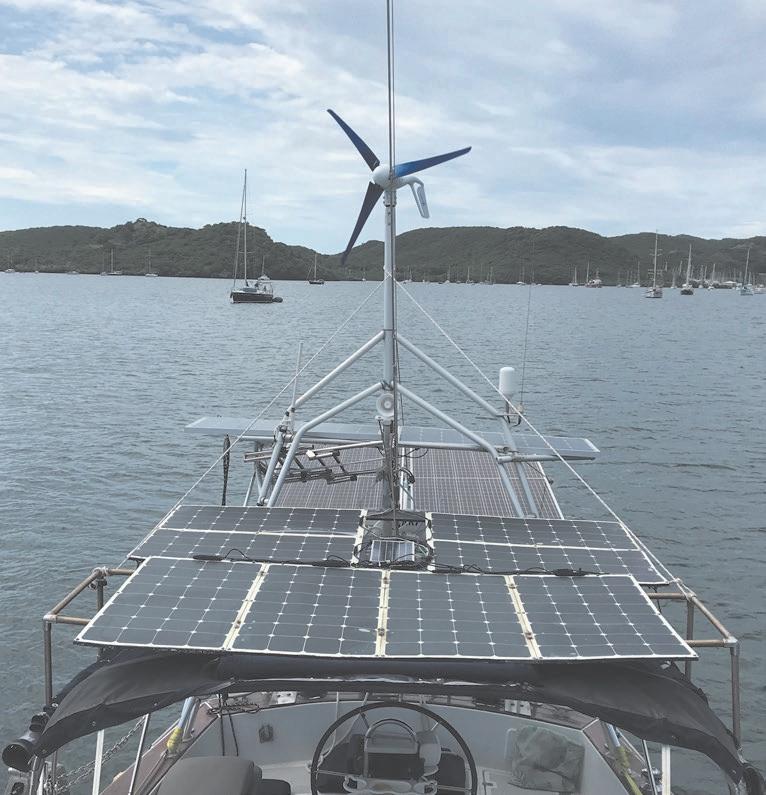
That October, we
and
in Martinique July 2022. All told, it was about 3,000 good nautical miles with many additional miles due to tacking back and forth against the trades. The electric motor was exposed to some of the tougher sailing conditions that a normal cruising sailboat would face. Here are the primary benefits and drawbacks we’ve learned of so far.
Benefits
an
Our life aboard at anchor is essentially like being plugged into the dock, due to the battery capacity and renewable charging we installed primarily for the electric motor. We have nearly limitless energy and use it to cook with our fully electric galley, run our 11,000-BTU air conditioner, watermaker, hot water heater, and just about anything else that can be powered by electricity. A 3,000-watt inverter powers our 110-volt devices. It’s generally only after multiple consecutive cloudy days that we start reducing our consumption. This may seem like a secondary benefit, but given that the majority of our time is at anchor and not actually sailing, this benefit has proved to be the most valuable.
DECEMBER 2022 CARIBBEAN COMPASS PAGE 18
left that hurricane-safe harbor
started making our way east, with stops at the Bay Islands of Honduras, Jamaica, the Dominican Republic, Puerto Rico, and the US Virgin Islands, finally reaching the Windward Islands with
arrival
Continued on next page
We decided to leave our careers behind and travel the world via sailboat.
The solar array spreads across the davits, archway, and bimini. The wind generator is a 400-watt turbine.
The electric motor was installed in the existing space under the cabin sole.
from previous page
A benefit we did not plan on is the ability to do what we call ‘motor assist sailing’ often. This is when we are sailing and simply use the renewable energy coming into the boat to spin the electric motors at a speed that is net-zero energy use. Because the motor is silent (think of electric cars vs traditional gas powered cars), this does not ruin the ambiance of sailing. It usually gives us an extra one to two knots of speed and/or increases our COG (course over the ground) about ten degrees higher when going to windward. We are motor assist sailing whenever there is a net positive charge coming into the boat and this is nearly all the time during daylight hours (from both solar and wind generator). Given that we were beating directly east from Guatemala to the Windward Islands, this benefit made the difficult journey considerably more bearable.

There is nearly no maintenance or vibration. This sounds almost too good to be true, but after having the system for more than four years, we can attest to the fact that it is indeed accurate. There is a bearing we grease every 12 months and we are meant to replace the two belts every five years. Otherwise, there is no maintenance on the system — no fuel or oil filters, no saltwater strainers, no oil changes, and none of the smell or mess that comes with these normally required tasks. Also, there is considerably less vibration due to the lack of a combustion engine, which further limits component deterioration.
Drawbacks
There is a noticeable lack of power to drive through waves. While monohull sailboats are not known for their ability or comfort when motoring directly into seas, it is not really possible with our set-up. We can power through three- or four-foot seas for a short distance, perhaps less than five nautical miles. With anything longer than that, we motor with the mainsail up at an angle of 30 degrees off the wind, so as to not drain the batteries. This deficiency is primarily a result of being slightly underpowered from a motor kilowatt perspective and worth discussing in detail in a future article.
There is a very steep learning curve associated with getting all of the systems to work together seamlessly. There is also a learning curve on how to effectively use the motor. It is a little more nuanced than just picking an RPM setting and going on your way. Also, because this technology is on the leading edge of marine propulsion, there are just not very many people capable of installing and working on your system. You have to become your own expert, and it is also why it is critical to choose a supportive supplier or OEM when selecting the actual hardware for your system.

We could spend an entire article discussing the cost of our system in detail. For now, we will say that the motor, batteries and charging systems are, if thought of as the “capital investment needed to convert,” considerably more than the cost of a new diesel.
Conclusion
Like all things on a boat, our electric motor is a tradeoff. We cannot envision going back to a diesel motor after these past four years. The benefits of silently motor assist sailing and having nearly limitless electricity at anchor far outweigh the extra preparation, planning, and patience. That being said, despite our considerable experience using this system, the learning and optimization phase is only just beginning, and this is what really excites us. We look forward to sharing all of this over the coming articles.
If you are interested in a more detailed discussion, email us at sail.vagari@gmail.com.
DECEMBER 2022 CARIBBEAN COMPASS PAGE 19
Continued
Vagari’s wiring system
It was about 3,000 nautical miles with many additional miles due to tacking back and forth against the trades.
by Chris Doyle
About seven years ago I was in my doctor’s office. He had just done a digital exam. I felt fine and healthy, but I did know from previous tests I had a minor prostate cancer, which I had successfully ignored for some years. He said, “Well, Chris, your prostate has a lump. If you are going to do something about this, you have to take action immediately.” I did and probably would not be writing this if I had not.
I mention this because it seems to me much the same situation that we are in about the Earth and global warming. The scientists have been telling us in no uncertain terms that we are in for major problems if we do not drastically cut back on CO2 emissions immediately. Fires, droughts and floods have produced more indications of a problem than I had with my prostate, but despite brave words, we still go sticking ever more CO2 into the air and Greta Thunberg’s impassioned cries go unheeded. It is easy to get discouraged; it seems completely beyond our control, but really it is not. Billions of people and their habits contribute to this problem, but we know that the affluent are far more responsible for it than the poor. There is not much we can do about the billions, but if each of us tries to live in a healthier relationship with our environment, it will be at least a small step.
Boats allow us to embrace this kind of relationship more easily than most. Many of us generate our electricity from solar panels and windmills, saving fossil fuels. But we have one bad habit we could break (and I am guilty here too): our addiction to gasoline-powered outboard motors, often two-stroke and often way more powerful than can be justified by their major use of taking us ashore. Most of us are within half a mile of a dock. On the plane at 15 knots that takes two minutes, at five knots that would take us six minutes. If, in our cruising life, those extra four minutes really make a difference, have we not somehow lost our way? We could easily put those gas-guzzlers up on the rail for the occasional expedition where they might really be an asset and put on a small lightweight electric outboard for everyday use. The benefits would be huge. Our anchorages would become quieter, we could swim from our boats in way less fear of getting mangled by a speeding dinghy, and trips ashore, slipping along silently, would be become more pleasurable. We could charge them from the sun and wind and communally save thousands of gallons of fuel. It would also be some years if ever before local “tiefs” thought them attractive.
What holds us back? Speaking for myself and probably many others, one thing is knowledge. Until this year I thought Torqeedo (www.torqeedo.com/us/en-us/ products/outboards) was the only electric dinghy outboard available. But with a little research I find there are many different models and power levels available. Elco, Thrustme Kicker (www.no/us/kicker), and E Propulsion (www.epropulsion.com/ post/electric-outboard-motor-guide) look like good ones. And for those on a budget there are outboards designed for salt water that are available from Amazon (www. amazon.com/dp/B08NVRFKL1/?coliid=I16340O74WMBEH&colid=2YE6SR8B400K J&psc=1&ref_=lv_ov_lig_dp_it), although you need to add the battery. The other consideration easy local availability and servicing, and this is where we need to call on our major Caribbean suppliers, such as Budget Marine and Island Water World, to step in and become proactive. Now, I am sure the reason they hardly stock them is that there is no demand. And the reason there is no demand is that they are not available, unadvertised, and people are not thinking about them.
The specs we need for an average electric outboard that would serve our needs are pretty simple — probably a thousand-watt (three horsepower) size. One with an integral battery would be an advantage. Both motor and battery would have to be lockable onto the dinghy as we now do with our regular engines. A direct hookup to a solar panel would be a huge plus. We could keep a solar panel in the dinghy, which we could lock and plug in to the motor while ashore, thus significantly increasing our range. No one is in a better position to research this than Budget Marine and Island Water World. They would need also to stock parts and offer service, which they do for many things already. This is more than a simple business proposition — it might be a small step to saving the planet.
Oh, and for those that really must zoom everywhere, electric outboards are available up to 80HP.



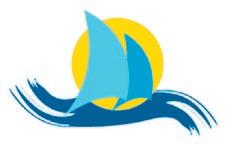
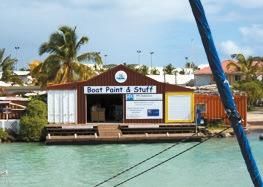
DECEMBER 2022 CARIBBEAN COMPASS PAGE 20 BOAT PAINT & STUFF Time Out Boat Yard Saint Martin Next to the French Bridge Fiberglass + Epoxy & Polyester Resins Epoxy primer + Polyurethane Top Coat Phone: + (590) 690 221 676 info@boatpaintstuff.com www.boatpaintstuff.com ANTIFOULING SPECIALIST: PPG Amron COPPERCOAT Permanent Antifouling (10 years and more…)
Warming
the Cruising
YOU DO?
Global
and
Life — WHAT CAN
Until this year I thought Torqeedo was the only electric dinghy outboard available.
WWW.TORQEEDO.COM
CRUISING LIFE
WE’RE ALL IN THE SAME BOAT!
by Bill and JoAnne Harris
This full-time cruising life aboard Ultra, our big trimaran, has been an amazing experience for us full of unbelievable adventures. At first it was a tremendous challenge full of what seemed like never-ending, “Everything is broken aboard Ultra, we just don’t know it yet” moments. We had countless overwhelming days and weeks of things to fix aboard when we first started out. Then fast forward, 15 years of full-time cruising later, we have continued to have loads of boat repairs as well as general maintenance. However, we would not trade any of it for anything in the world. The awesome cruisers and locals we have met and the incredible experiences we have had far outweigh the daily frustrations of our daily boat projects.
There is always someone to help
The close-knit cruising community has really been brilliant and everyone is always so helpful. Along the way, we, like others, have either learned new skills or honed skills because we had a desire to, or learned new skills just because we had to. Our skills in this cruising life include being techs of refrigeration, engines, electrical, electronics, and more, plus just simply rigging up something that will work well enough until we can fix it properly. Therefore, we can offer our help to assist other cruisers or vice versa. It makes for a great bond and we have made many friends of a lifetime through these experiences. Furthermore, while visiting with virtually all of the cruisers we’ve met, we have gained valuable knowledge including travel tips, boat repair or maintenance tips, and so much more.

The melting pot of cruisers
In this cruising life, it instantly became evident that we were surrounded by cruisers from all over the globe. It is a melting pot of people who all have the outstanding life of cruising in common. This is an instant bond — living our dreams aboard a boat. In this life it does not matter your economic status, what your career was before your cruising life, what kind of boat you own, or nearly anything else for that matter. We are all cruisers and are living similar lives every day.
The blend of cultures is truly magical, too. It seems everywhere we turn there is someone from another country exposing us to another language, another type of music, another type of food, another way of thinking and so much more. When it comes to the parties and other special events that we all celebrate together, we are introduced to different holidays and traditions from other countries. It makes for a truly spectacular experience. We have been invited by many of these cruisers to visit their home countries with them and to get a first-hand look at where they come from. These amazing cruisers have been so much fun and we have enjoyed being enlightened about the places they come from and visited, listening to the dreams they have, sharing cruising stories and laughs over sundowners, making memories during adventures together, and keeping us always trying to expand our horizons.
Lessons in patience
After traveling through countless Caribbean countries and beyond, we definitely have had to learn to relax and to have immense patience. We are both quite type A personalities and both worked in the super-demanding corporate and self-employed sectors. After moving aboard Ultra full-time and living the dream in a variety of countries, we have encountered some exceptional challenges. These challenges
include differences in work ethics, business ethics, personalities, morals and more. It was definitely an adjustment for us, and we believe it has made us better people in that we have dealt with things we thought we never would and have gained a better sense of acceptance in so many situations. After all of these years aboard, we too have learned to live slower and laugh even longer.
Giving back together
We have also had a blast in giving back to the communities that we visit for all of these years. Through our Ultra Community Projects helping local families in need and the environment, we have had so many volunteers involved in our projects, soliciting donations or giving their time and expertise. No matter what language one speaks or where one comes from, it is always super fun to work together for a common goal — help. It is amazing to watch all of the cruiser volunteers share our humanitarian and environmental efforts. It brings us and them so much joy!
Living the dream
What we have learned during these cruising years is to never, never stop dreaming. We are delighted to have had the opportunity to travel to over 55 countries by land and by sea and have enjoyed being exposed to so much during all of these adventures. We have even enjoyed the times that our travel plans have included some tremendous glitches along the way or the plans have just simply taken a total 180. On our bucket list, there is still so much we want to do and see. We feel that for us, the key to this life is to always maintain an open mind, an open heart and a sense of humor, and to go with the flow as much as possible.
One love
This cruising life encompasses us all and we value every moment. We treasure the opportunities to meet so many amazing local people and cruisers, and to travel with heaps of buddy boats. The epic memories of moments of joy and frustration that we all share together we will carry in our hearts forever and ever. This brilliant support system we all have is composed of cruisers who have either experienced similar events or will be experiencing them one day soon.
All of us cruisers are in the same boat and this life binds us all. It is full of blood, sweat, tears, dreams, joy and so much more that we all share! We are all surrounded by water and receive amazing energy from our surroundings daily. Lots more cruising adventures aboard Ultra are in our future, including meeting more people and reuniting with old friends.
To all of you current cruisers and to all of you out there dreaming of cruising, we send you a big shout from us aboard Ultra to say, All of us are definitely in the same boat!
JoAnne and Bill Harris are from Texas and have been cruising full-time with their Siamese cat, Sailor, for almost 15 years aboard their home-built trimaran sailboat, Ultra. The two of them are thrilled to be the Seven Seas Cruising Association Cruising Hosts and the Ocean Cruising Club Port Officers for Honduras including The Bay Islands.


DECEMBER 2022 CARIBBEAN COMPASS PAGE 21
Above: Fun with the cruisers and locals we meet is a huge part of our cruising experience. Below: We’ve learned new skills, many times from other cruisers, and are happy share our knowledge.
We’ve been cruising full-time for almost 15 years aboard our home-built trimaran, Ultra.
Phil and Di
by Jim Hutchinson and Di Kilbride
Phil and Di had already been around some before they finally sailed their little sloop, Matira, into the Caribbean back in ’02.
The Pacific was their original cruising ground, and Australia, Phil’s home ground.
Di is Canadian. They met on a Vancouver beach when Phil proposed a game of frisbee. Friends that didn’t want Phil to sail out of Di’s life kept getting them together. Di wasn’t all that interested. Then Phil said, “Wouldn’t you rather your kids had a seven seas education than a Seven Eleven education?” They started comparing their travels and their dreams. Di realized that she had found her soul mate.
Soul mates. Watch, folks, that’s how this one plays out.
Phillip James Cook had been a dinghy sailor since age nine and a surfer soon after. He worked, hiked and surfed South Island New Zealand. Then he flew to London to see what that was about. Then he flew to the US, started at Greenwich Village, crossed Canada from
12-day passage to Palau that turned into 30. They were living the lifestyle.
After years of sailing Pacific and Australian waters, they cruised the top of Australia then crossed the Indian Ocean to Durban, South Africa, via Rodriguez, Mauritius and Reunion.

They spent two years on the east side of the south of Africa and another two years on its west coast, cruising their own yacht, working, doing deliveries and racing.
Madagascar particularly fascinated them.
After visiting Namibia, they departed Africa. They crossed the South Atlantic to Cabedelo near Recife, Brazil, a 30-day passage over Christmas and New Years — mid-summer in the Southern Hemisphere.
Working their way north, they put in at Fernando de Noronha island pumping a serious leak. And the money was low again. They dealt with the leak as best they could then pressed on, directly to the Caribbean, forgoing Devil’s Island, first stop Tobago.
sailed to Trinidad for hurricane season. Then they started up island looking for work. They were a day late to hire on as Pirates of the Caribbean extras, where fellow characters that they knew were being paid to be characters. Phil would have been a beautiful pirate.
Having missed their shot at fame and fortune (my friend Ric and I made EC$2,000 each for 11 days work and got 20 seconds of front-stage screen time), they sailed on via Martinique and Dominica to Antigua, where Phil found electrician work aboard megayachts. Di did deliveries for the charter company Sunsail.
Phil’s trade, personality, wanderlust and skill with a sextant got him work and a berth aboard the well-known Atlantide, a 122-foot yacht built in 1930. At the Azores he transferred to the 130-foot gaff schooner Mariette, bound for the Med — fulfilling one of his sailing dreams. The wealth and decadence of the French Riviera, however, got Phil thinking about his 28-foot sloop in the Lesser Antilles.
Meanwhile, Di began her long relationship with Island Water World, which led to an eight-year love affair with St. Lucia, where she helped set up the chandlery’s branch. Phil worked at what he found — Phil was good at that.
Their second year at St. Lucia was 2004, the year of Hurricane Ivan. If you were here, you remember — Ivan is remembered elsewhere as well. They saw the devastation in Grenada and heard tales of friends whose vessels had narrowly weathered the hit… or had not.
For 2005 hurricane season, Matira sailed to Puerto La Cruz, Venezuela, via Los Testigos and Margarita. They secured Matira and did an inland adventure, beginning high in the Venezuela mountains at Mérida. It was Di’s 50th birthday and her twin brother Blair joined them. The expedition included five-day hikes in the Andes, up a peak of over 4,500 metres (15,000 feet), a four-day 4WD outing, and some day trips. Some of the vistas reminded them of Lord of the Rings scenes set in South Island New Zealand… where Phil had long ago hiked and surfed.
They would have stayed longer but, alas, work called.
Di’s brother flew back to Canada and Matira beat back to St. Lucia, a long slog to weather and against the current.
Di met Richard and Judy, recently arrived from the Canaries aboard the classic 60-foot Lauren Giles sailboat Pazienza. Phil and Di sailed Matira up island and crewed aboard Pazienza for the Antigua Classic Yacht Regatta 2006, plus some leisurely day sails. “Phil was over the moon” when asked to help sail Pazienza back to the UK. He stayed an extra two months for the Isle of Wight race, while plying his trade, electrical work for the owners. They did the Antigua Classic aboard Pazienza again in 2009.

Phil’s sailing passion got him into J/24 racing at St. Lucia, mostly aboard Loose Cannon
Montreal to Vancouver, then turned south, coastwise, California and Mexico to Guatemala, seeking out surf and “flower power concerts” and doing casual jobs. He returned to Australia, where he answered an ad for electricians at a copper mine in Bougainville – work in the outback of Papua New Guinea.
Next, Asia caught his fancy, Hong Kong, Bangkok, north to Chiang Mai and the Golden Triangle, Burma (Rangoon), Calcutta (“The intensity of India”), and the Himalayas.
Then Phil fell in love. It was a good love affair but a sedentary lifestyle. As we have seen, travel is in Phil’s blood. Moreover, it was way up north in Canada — Phil didn’t like winter. He lasted several years but was on his way back to Oz when he met Di.
Di Kilbride was no slouch either. She wandered Europe for half a year, and then traveled in Africa from Senegal to Mali, where she spent three years teaching and working for aid programs. She did more of Europe on her way back to Canada — where she worked in the wintry north. Di knew how to backpack on little money, to connect with local cultures, to work at what could be found, and could deal with changing situations. She had been a traveler all of her adult life. But never by yacht, never with the freedom (and luxury!) of traveling while you live at home with your stuff… such stuff as justifies its place aboard a small yacht.
Di knew nothing about nautical cruising, could barely swim and had never snorkeled. All of that changed.
Di went with Phil to Oz, where they rented a flat overlooking Sydney Harbour. They sought out opportunities to sail the Pacific, both together and singly, to a variety of destinations aboard an assortment of yachts.
“Anywhere, as long as it was offshore!” Di says.
They bought Matira, a 28-foot sloop already fitted out with a hard dodger (pseudo pilot house) and windvane steering (a 24/7 “helmsman”) in 1989. “We left mainland Australia in early April, 1990,” Di recalls, “in no hurry as long as we could find the means to keep going.”
They sailed to a score or more Pacific islands you never heard of, each with its own little story of sailing, snorkeling, weather, bureaucracy, work found along the way, and/or pauses to repair and recoup. Authentic nautical experiences included hand-copied charts, dinghy dramas, being caught out in a storm and a
“Thus,” says Di, “began an almost 12-year love affair with the Caribbean.”
A notable local character, Bananas, aboard Lady M (named for the woman he truly loved), introduced them to Carriacou and a bay full of characters. There, Phil’s dinghy sailing passion got him sailing “Chocolate Man” Mott Green’s Laser, Epicurus Dave’s excellent sailing dinghy with its ingenious three-reef lug rig designed by the brooding genius, Julio, and Hutch’s several sailing dinghies.
Their first year in the Caribbean went quickly. They visited the Tobago Cays, re-visited Tobago, and then
“Phil amazed us with his agility and speed in those days,” Di says, recalling a J/24 race in which she was watching Phil working the foredeck from the boat she was aboard, hot on the tail of Loose Cannon. The boats were sailing over Bequia Head in a 20-knot wind. Bluff Bequia Head in a 20-knot wind generates a mix of
onshore and reflected waves and fields of overfalls, and can have some interesting currents. Suddenly Phil was over the side, hanging from the end of the spinnaker pole, literally walking on water. Then he was bounced back on deck and continued his task as if that had just been one of the moves. Di was in awe.
During their second year at St. Lucia, Phil, with his usual flair, offered to help at Jambe de Bois, a rustic restaurant at the southeast end of Pigeon Island, near where Matira anchored.
DECEMBER 2022 CARIBBEAN COMPASS PAGE 22
Matira sailed into Charlotteville (“Sleepyville”), Tobago, near the end of January 2002.
on next page
Continued
Above: Phil and Di aboard Matira Below: Hutch in Fran II and Phil sailing Cocoa
Continued from previous page
Barb Tipson was happy for extra help. Phil set to work the same day. Di pitched in on busy nights. This became their second home at St. Lucia — helping out and chatting with customers — Phil’s specialty. Then they covered Tuesday nights to give Barb a second night off.
to confirm tickets didn’t help their confidence. And they heard stories of breakdowns in the middle of nowhere, bandits, stolen bags, toilets that made you want off at the next stop, noise, clatter, and the painstakingly slow pace of the train. Seasoned travelers, they went for it. They were in the enigmatic Cuba of their dreams!
coast by bus, visiting amazing botanical gardens.
They were determined to sail back to Australia by November 2014. That’s when Phil could retire. They were keen for a fixed income after many years of sporadic, meager income and bartering to support their adventures around the world.
Di hadn’t crossed the North Atlantic yet — Phil had. Then Aussie cruisers Phil had done work for asked them to help sail their Amel 50 to Portugal. They left Matira in Port Antonio and flew to Grenada. They sailed up the islands to Antigua, crossed the North Atlantic to Portugal via the Azores, then did three weeks exploring some of Spain and Morocco —including a camel ride to a Berber camp.
Being well into hurricane season when they returned to Matira, they sailed south to Colombia, where they did three months of bus and motorcycle adventuring. Then on to Panama via two weeks in the San Blas Islands.
A Panama Canal transit is an unnatural act for a yacht, especially for such as Matira, small and slow — too slow. Matira can cross oceans at her leisure, but the Canal requires a schedule. The bureaucracy is intense, the vessel must be measured and inspected, and long lines, line handlers and extra fendering must be arranged. Then comes scheduling and waiting. The main event, locking through, involves co-habiting locks with commercial vessels hundreds of times Matira’s mass while huge volumes of water surge in (going up) or out (going down). Between up and down is a long race across Gatun Lake.
Caribbean Compass runs a Canal transit story every year or so. Di’s story, “The Little Boat That Could,” in the October 2013 issue (see page 20 at www. caribbeancompass.com/online/october13compass_ online.pdf) is my favorite Panama Canal Transit story.
One of their stops while crossing the vast Pacific bound for Oz was Bora Bora, where they visited Matira Beach, their vessel’s namesake.
Phil and Di continued to live aboard and sail Matira until Phil was diagnosed with terminal cancer (from asbestos) in 2021. Within two weeks he had to leave Matira, to a nice little cottage in mountains, in rainforest, that friends had offered. He patted Matira’s bow, shed a few tears, and then walked down the dock, never looking back.
‘Anywhere, as long as it was offshore!’ Di says.
Nine years passed. Itchy feet struck again. Time for more, islands to the west. In July of 2011, Matira sailed from Pigeon Island for the final time.
Their westing began by sailing south, first stopping at Cumberland Bay, St. Vincent, to hike up La Soufrière volcano and wind down from work.
Then down island, stopping first at Bequia, where Hutch (that’s me) was house sitting a wonderful place at the end of a steep road, atop a high hill, amid palms and bamboo, with a wonderful garden and a remarkable house full of amazing artifacts. But there was a sad side as well. Ivy, the top dog, was dying of old age compounded by multiple ailments. Ivy was a stinking mess and hid from people, even waiting until nobody was around to sneak her food. Di somehow gained her trust, thoroughly washed her and restored her dignity — even as Ivy continued to die.
Then down the Grenadines to farewell friends at Carriacou.
Thence westward, downwind and down current to La Blanquilla, Los Roques and Las Aves Islands in Venezuela — avoiding Los Testigos and Margarita, wary of pirates. Venezuela had been a delightful destination during their first visit. Now it was dangerous.
They stopped at Bonaire for snorkeling then sailed to Curaçao, where they spent three months.
Matira set sail for Ile-à-Vache, Haiti, in late December, in strong wind and uncomfortable seas.
They often chose strong winds over the risk of being becalmed in sloppy seas. Unreliable engines, light airs, strong currents and tricky landfalls teach one to sail. “Hutch would know all about it!” Di says — I sailed my Ambia engineless for a quarter century.
Some yachts arrived in Haiti with donated food and medical and school supplies for an elderly Canadian nun who ran an orphanage. Phil and Di did several interesting excursions ashore helping distribute it.
Ten days later Matira sailed for Cuba, a dream destination for its little-known qualities. At Santiago de Cuba, they were greeted by sniffer dogs and serious officials, checked in and were given “special permission” to anchor. The dinghy was only allowed to go to and from the dock, bags could be inspected at any time and trips beyond the marina had to be authorized. The marina chandlery had shelves of Cuban rum, but real chandlery items had to be special ordered — a nightmare.
Town trips were on the local school bus or in taxis, colorful cars from the ’50s, with missing parts. One shop had internet, with a long queue. But for them, the frustrations of Santiago de Cuba were far outweighed by the good.
“Homestays” became bases for their travels across Cuba, beginning with ten days at Baracoa on the east coast, exploring town, hikes, and swims in the river.
A woman told of a sister in Havana with a homestay. The marina made arrangements.
A 15-hour overnight train crossed most of the country from southeast to northwest. Several train station visits
They tied the bags to their legs at night and kept an eye for dubious individuals. Daybreak arrived, the train rambled through open countryside at a leisurely pace and they arrived at Havana on time.
A ’50s vintage taxi in impeccable condition took them to their homestay.
Havana had wonderful contrasts. They thought it better than they’d imagined. Old mixed with modern. Transport ranged from horse and cart to cycle rickshaws to soupedup vintage cars in bright and wild colors. Mimes and stilt walkers performed on every street corner of the main strip. There was a vibrant Chinatown. They discovered a remarkable underground jazz club entered via a street-level phone booth, walked the oceanfront esplanade and lounged in the open courtyard of the famous Hotel Nacional de Cuba in the evening, sipping wine and listening to soft classical jazz from a pianist in the corner. Beautifully framed black and white prints of Castro with famous people were hanging in the lobby — Castro chatting with Robert Redford was their favorite.
They departed Havana by bus to a homestay in Viñales. Viñales Valley is a UNESCO World Heritage Site, in part for the natural landscape, popular for rock climbing, but mainly due to the traditional farming methods. They visited farms still ploughed by hand and having rich fertile soil from crop rotation and lack of chemicals. The bread man delivered by horse and cart.
Their host made fresh biscuits with strong coffee for afternoon tea one day. They later learned that she had used all her ration tickets and some of a friend’s to get enough ingredients.
It was incredibly cheap even by basic backpacking standards. And the quality and diversity of meals was astounding.
The generosity of their hosts was exceptional everywhere.
They continued by bus to Trinidad and Cienfuegos, then to Bayamo, where Castro and Che Guevara planned their revolution. They hiked up to the camp headquarters in the mountains.
They traveled Cuba by bus and homestay for nearly a month, filled with contentment at all the adventures and excursions they could afford.
Eventually they arrived back in Santiago de Cuba. It was time to sail south to Jamaica before hurricane season.
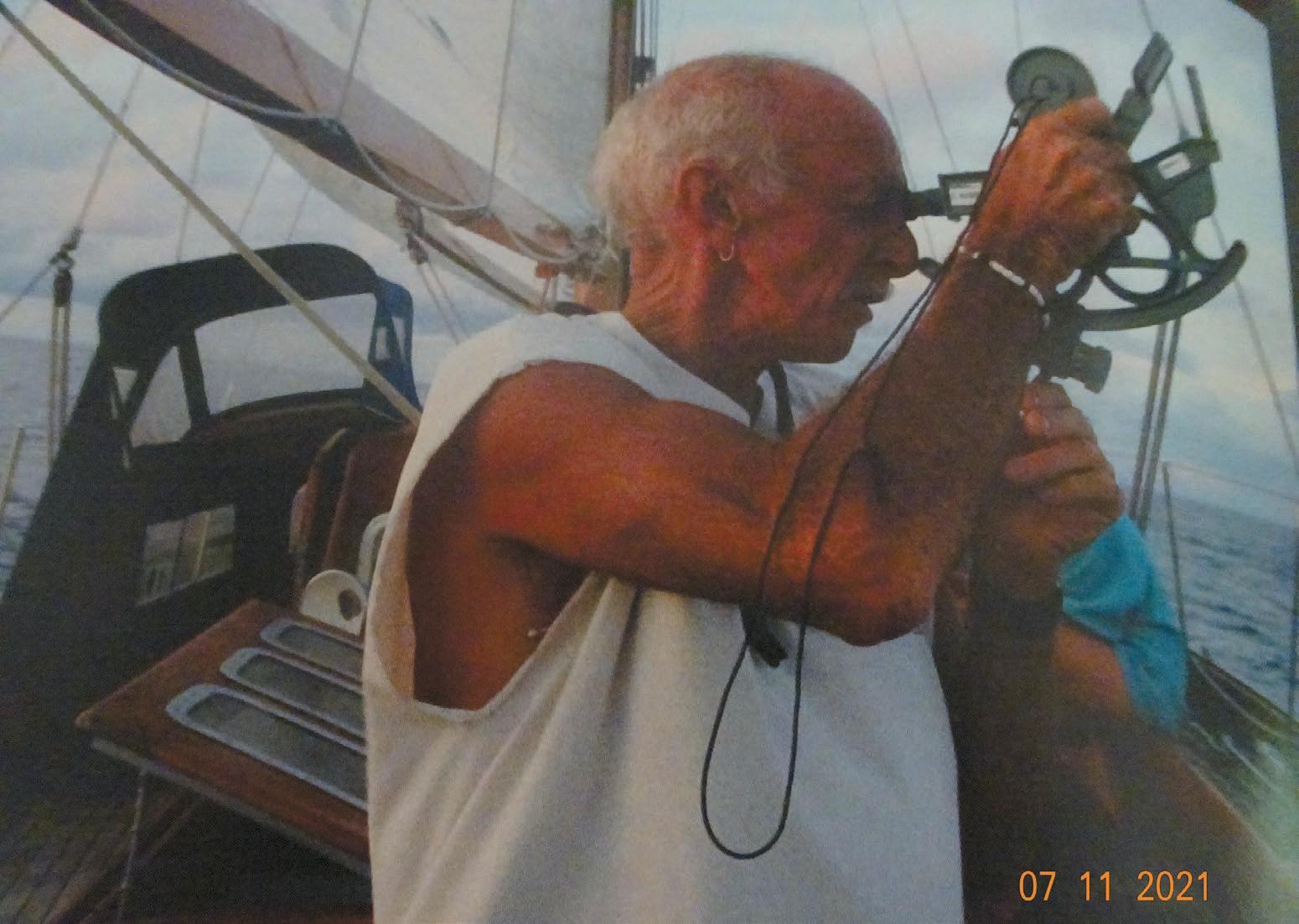
Port Antonio in 2012 was a step back in time, a small, friendly safe harbor on the northeast of Jamaica, a vast contrast to the reputation of Kingston, Port Royal and the south side of the island. They traveled the north
During the several months Phil had left, friends visited, and he had a living wake with music. He celebrated his 72nd birthday with a coffin-painting party. On his 35th anniversary with Di, he dressed like Gandhi for a photo — kind of a last hurrah, Phil style.
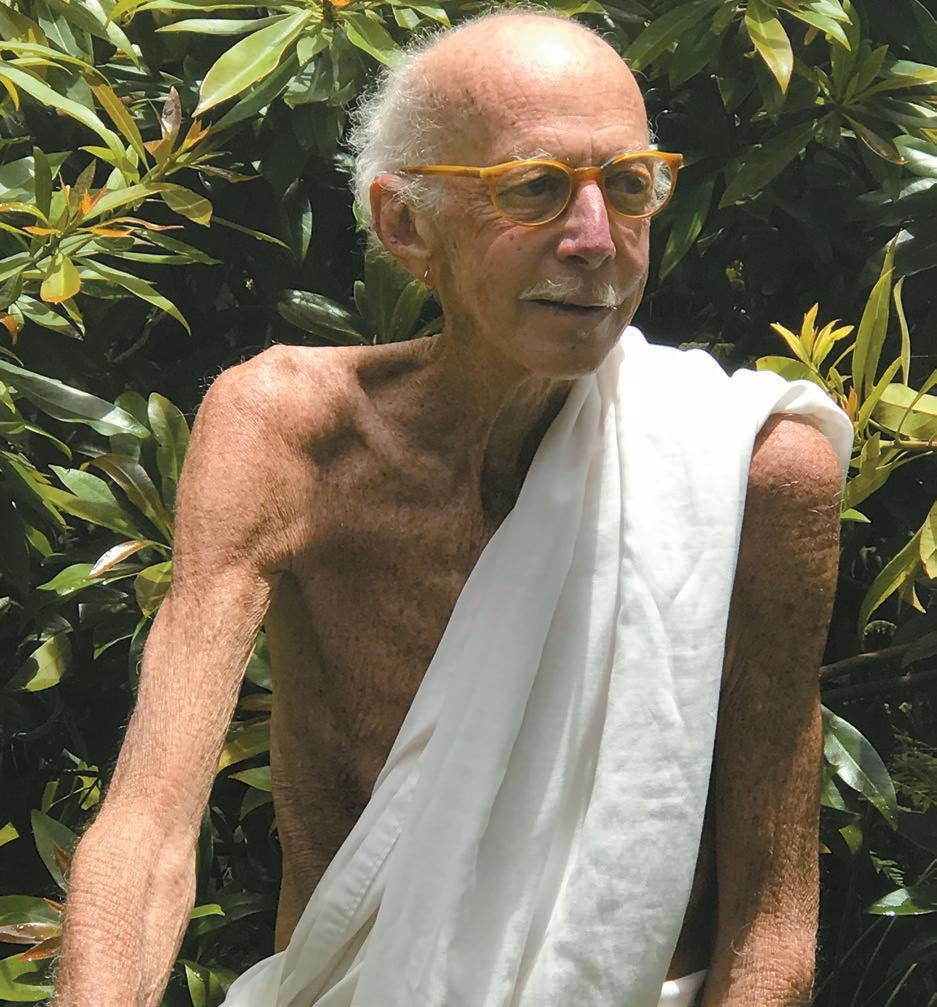
Di was there reading when Phil breathed his last breath.
“Phil was one of those rare people who could go anywhere and talk to anyone, all while dealing with the
On his 35th anniversary with Di, he dressed like Gandhi…
world on his own terms. An accomplished sailor, a master electrician, a constant traveler, a student of the world.” That from Dave Kaplan, an investigative journalist who met Phil while standing in line at the old Kai Tak Airport in Hong Kong. “We struck up a conversation. How could you not with Phil?” They traveled in Asia together, became life-long friends, and crossed paths in far-flung parts of the world over the 44 years since.
Di continues aboard Matira and is taking friends for day sails to watch the whale migration. She sent a video of five whales, one after another, surfacing and breaching beside Matira. And she has sailing plans to visit friends. Di sails on, as Phil would expect of her.
More of Hutch’s work can be read on his website, OneManSpeaks.com.
DECEMBER 2022 CARIBBEAN COMPASS PAGE 23
“Join us today, we need all hands on deck if we are to have a living, thriving ocean for future generations to enjoy.”

Sailors and boaters, you witness firsthand the devastating threats that our oceans face such as plastic pollution, oil spills, and marine habitat destruction. Join Sailors for the Sea Powered by Oceana’s community of Green Boaters to take action to protect our waters.


DECEMBER 2022 CARIBBEAN COMPASS PAGE 24
Save the Ocean, Protect Your Passion
our
sailorsforthesea.org/Liz Scan to receive
Green Boating Guide
- Liz Clark, sailor, surfer, and environmentalist
CARIBBEAN ECO-NEWS
Mystery ‘Blue Goo’ Discovered in Caribbean
The sighting of unidentified deep-sea “blue goo” creatures in the Caribbean has perplexed scientists.
On August 30th, scientists with NOAA (the US National Oceanic & Atmospheric Administration) Ocean Exploration spotted many blue goo creatures while using a remotely operated vehicle (ROV) near the seafloor around St. Croix, US Virgin Islands. The unmoving creatures were between 407 and 611 metres (1,335 and 2,005 feet) below the surface.
NOAA’s researchers spent four months exploring aboard the research vessel Okeanos Explorer. From there, they piloted the ROV. They noticed one of the mysterious animals during the live video and zoomed in to examine it. Some viewers commented that it was probably either a soft coral or sponge, or possibly a tunicate, which are gelatinous marine invertebrates frequently called sea squirts.
The team will now attempt to identify the mysterious blue goo, contacting specialists. There are approximately 2,000 soft coral species, 3,000 tunicate species, and 8,500 sponge species. The NOAA scientists stated that if experts cannot identify the blue goo from photos and videos, “the mystery will remain until a sample can be collected.”

Corridor, Jardines de la Reina is one of the best examples of a large, effectively managed marine protected area in the Caribbean. Protected since 1996 and declared a National Park in 2010, the group of cays covers 2,000 square kilometers. It is located between Ciego de Avila and Camagüey, 80 kilometers from the coast.
Its abundance of mangroves, seagrass and coral reefs, considered among the healthiest in the Caribbean Sea, was another reason for winning the Blue Park award.
Reducing Coral Stressors
Early last month Shivonne Peters, a PhD candidate in Marine Sciences at the University of Trinidad & Tobago, reported at https://newsday.co.tt that Trinidad & Tobago, along with other countries in the Caribbean region, is under a coral-bleaching watch, the fifth occasion for 2022. As ocean temperatures continue to warm, NOAA, in its October report, indicated that the country is currently under a bleaching alert level two, meaning that widespread bleaching leading to coral mortality is expected. These conditions are expected to extend throughout December.
Coral bleaching occurs when the coral responds to various stressors. One stressor is higher water temperatures. Another is pollution.
Peters writes, “While we cannot directly stop… warming ocean temperatures, we can reduce the stressors which increase the likelihood of coral mortality following bleaching events. Controlling landbased sources of pollution is one such measure. Excessive nutrients stimulate algal growth and heavy sediment loads reduce light penetration and ultimately the coral’s ability to produce its food through photosynthesis.
“Reducing invasive species, such as the lionfish, can also aid in coral recovery by maintaining native reef fish populations and contributing to healthier reef systems. The Institute of Marine Affairs, in addition to conducting routine coral reef monitoring and research in Tobago, has developed the SeaiTT app where anyone can report any environmental incidents including coral bleaching.”

New North-East Tobago Biosphere Reserve UNESCO, together with the Government of Trinidad & Tobago, inaugurated the North-East Tobago Biosphere Reserve in June. This added the region to the list of the World Network of Biosphere Reserves, which now includes 727 biosphere reserves in 131 countries around the globe.
societies across the region work toward sustainable development, the key limiting factor is typically adequate financing to implement effective marine management strategies.
“Marine protected areas (MPAs) in particular are an important tool in marine conservation, supporting fisheries management and tourism in the region. Yet Caribbean MPA managers tell us that raising reliable, long-term financing for their operations is their most pressing management need,” said Emma Doyle, coordinator of the MPAConnect Network.
There are various mechanisms through which marine conservation can be financed. Some are well known and relatively easily understood, such as visitor entrance fees for marine parks or immigration fees at airports and ports, and philanthropic donations or concessions for on-site businesses. Others are newer and more innovative, but also more complex to understand and to access, such as trust funds, debtfor-nature swaps, and impact investment.
“A meaningful MPA sustainable financing plan requires a mix of several financing mechanisms. One of the mechanisms in this mix, and one that is highly anticipated by MPA managers, is the conservation trust fund,” said Doyle. The Commission said the formation of conservation trust funds has greatly increased in the Caribbean region and these legally independent institutions are expected to play a growing role in marine conservation financing in the coming years.
In the Eastern Caribbean, a series of National Conservation Trust Funds is being established through the Caribbean Biodiversity Fund. GIZ and the Trinidadbased Caribbean Public Health Agency are assisting in marrying the National Conservation Trust Funds with capacity building for MPA management and operations through the Sustainable Marine Finance Project.
Four OECS member countries — Dominica, St. Lucia, St. Vincent & the Grenadines, and Grenada — will be the principal focus of this work. At a later stage, the scope will include other CARICOM states.
Battling Marine Litter and Pollution

New Research: Give Corals Time to Adapt!
Ocean temperatures in the Caribbean Sea are on pace to surpass critical thresholds for coral health by mid-century, but rapid action to significantly reduce emissions could slow warming, giving corals as much as 20 more years to adapt, according to new research.
Climate scientists and marine biologists from Rice University, the University of Colorado Boulder and Louisiana State University used computer models to simulate climate warming from 2015 to 2100 under both a “business as usual” scenario with very high emissions, and a scenario in which emissions were reduced.
Their study and analysis of ocean warming for specific regions in the Gulf of Mexico and Caribbean under each scenario is published in the Journal of Geophysical Research: Biogeosciences. The researchers found reducing emissions could delay the onset of critically warm ocean temperatures in some areas where reefs are still healthy.
The study found ocean temperatures in the Caribbean could reach critical warmth as early as 2050, posing a serious risk for coral survival. But, importantly, one of the study’s co-authors notes, “We get a lot of bad news about reefs, but we can still draw hope and motivation from this. Some of the reefs that are included in this analysis are really special, like the… reefs off of Cuba and in some other parts of the Caribbean where there’s still really high coral cover. We can help protect and keep the high-coral-cover reefs we have if we take immediate action to shift how much energy we use and where we get our energy.
“The takeaway message is that the time to act is now.”
Read the full story at https://news.rice.edu/ news/2022/climate-risks-gulf-mexico-coral-reefsspelled-out-study
Jardines de la Reina, Cuba, Wins Blue Park Award
Cuba’s Jardines de la Reina National Park is the first marine protected area in Cuba to win the Blue Park award, in the Golden Category.
The award was bestowed by the Marine Conservation Institute, an organization that identifies and works to preserve vulnerable ocean ecosystems globally. The park received the award for its scientific levels of protection, management of marine life, protection of critical habitats, promoting resilience to climate change, and safeguarding the marine environment.
According to José L. Gerhartz-Muro, a conservation specialist at the Secretariat of the Caribbean Biological
The North-East Tobago Biosphere Reserve is a rare, largely intact Caribbean island ecosystem that includes one of the oldest legally protected tropical rainforest reserves in the world, the Tobago Main Ridge Forest Reserve, established in 1776. This forest reserve is the largest of the three most protected areas of the Biosphere Reserve, which also include the islet of Little Tobago and the St. Giles Islets Complex. The Reserve includes a large marine area that hosts coral reefs and mangroves, and species such as manta rays.
Overall, 1,774 species have been recorded in the Biosphere Reserve, which is home to 83 endangered species and 41 endemic species, as well as 15 human
Small Island Developing States (SIDS) took significant steps towards a cleaner environment with the global launch of an initiative to avoid marine litter and sustainably manage hazardous chemicals and waste. Because of many islands’ small size, limited disposal capacity, and prohibitive export costs, over 80 percent of mismanaged waste in SIDS ends up in the ocean, according to UN reports, leading to biodiversity loss, acceleration of climate change effects through emissions from waste, loss of national tourism revenue, and health impacts on local people exposed to the pollution.
Launched at the Conference of Parties of the Basel, Rotterdam, and Stockholm Conventions in Geneva in June, the US$515 million Implementing Sustainable Low and Non-chemical Development in Small Island Developing States Programme (ISLANDS) will help island countries around the world prevent the release of over 23,000 metric tons of toxic chemicals and more than 185,000 metric tons of marine litter by 2027.
Participating Caribbean countries include Antigua & Barbuda, Barbados, Belize, the Dominican Republic, Guyana, St. Kitts & Nevis, St. Lucia, Suriname, and Trinidad & Tobago.
communities with rich historical and cultural heritage. By joining the World Network of Biosphere Reserves, the community aims to revitalize cultural and spiritual bonds between people and nature and boost the preservation of this fragile and remarkable landscape.
OECS Welcomes Financing Initiatives for Marine Conservation
The Organization of Eastern Caribbean States (OECS) is welcoming initiatives aimed at providing adequate financing to implement effective marine management strategies.
The OECS Commission said regional implementing partners, the German Development Cooperation (GIZ) and the MPAConnect network, are collaborating to promote investment in Caribbean marine conservation through capacity building for the mobilization of resources from conservation trust funds.
The Caribbean marine environment faces everincreasing pressures and, as governments and civil
Led by the UN Environment Programme (UNEP) and funded by the Global Environment Facility (GEF), ISLANDS will help participating countries control the import of hazardous substances, soundly dispose of harmful chemicals and waste, and establish circular production systems, in partnership with the private sector. Opportunities for private sector participation include recycling training for private sector representatives, increased access to global recycling markets, and funding for small and medium-sized enterprises.
The programme has already secured commitments from the private sector, including Carnival Cruise Lines, which will partner with municipal authorities to jointly process local and cruise ship waste in the Caribbean.
Another innovative aspect of ISLANDS is its WasteFree Shipping Partnership, an initiative that will provide free shipping of recyclables to recycling facilities, saving limited landfill space and creating new opportunities for island-based recycling companies.
DECEMBER 2022 CARIBBEAN COMPASS PAGE 25
New North-East Tobago Biosphere Reserve .
Litter collected in a 2021 seafloor cleanup by Bequia Dive Adventures.
BILL WATTS BEQUIA DIVE ADVENTURES NOAA OCEAN EXPLORATION, VOYAGE TO THE RIDGE 2022
Experts are trying to identify the unusual creatures from photos and videos.
Here comes a new season! Whether you’re getting ready for your first or fifth season of Caribbean sailing, there’s always something you can get for the boat that can optimize your experience. There are excellent, well-stocked chandleries throughout the Caribbean, such as Budget Marine (see page 2) and Island Water World (see page 40). If you don’t find what you’re looking for there, see the websites given for more information.
Stay Buffed
Many owners know their boats aren’t looking their best due to UV oxidation, but the prospect of restoring them by hand is overwhelming. The World’s Best Dual Action Polisher from Shurhold makes short work of the job. It will safely buff out oxidation to reveal the hull and deck’s original color and can quickly add a layer of protective wax to maintain the shine for months.
Many high-rpm polishers are simply too powerful and can leave swirl marks, or even burn the finish, before the user knows what’s happening. The Dual Action Polisher has a 152mm oscillating head that’s not only safe but also highly effective.
To avoid muscle fatigue, the Shurhold Dual Action Polisher has a comfortable main grip with an ergonomic soft-touch head, adjustable D-handle and a removable and reversible side handle. At less than 2kg, it can be used for hours without tiring. Because it’s used around water, it includes a 120V AC GFCI device for safe operation.
The Dual Action Polisher accommodates a wide range of Shurhold pads designed for tasks such as scrubbing, compounding, waxing and polishing. And with a Velcro backing plate, it’s fast and easy to switch between them. A video is at www.bit.ly/ DualActionPolisher.
The Dual Action Polisher includes a pad wrench and pair of replacement carbon brushes that stow inside the rugged canvas storage bag. Visit www.shurhold.com for more information.
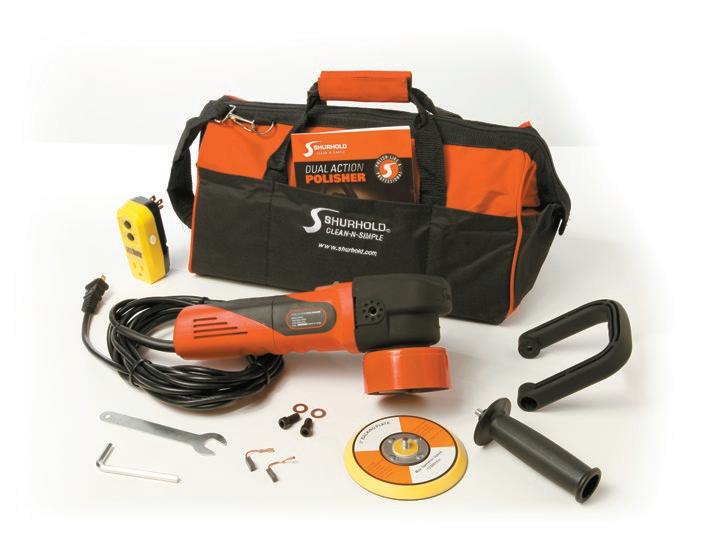
Don’t Be Shocked
Boatbuilders, marina operators and boat owners alike know the importance of using ground fault circuit interrupting (GFCI) receptacles to help mitigate electric shock risks. Hubbell Marine manufactures a complete line of 15A 125V GFCI outlets in Standard, Weather Resistant and Extra HeavyDuty models to suit any marine application.

Each Hubbell receptacle in this product family incorporates patented circuitry that constantly tests GFCI functionality. For easy visual status of the device’s condition, indicator lights on the unit’s face shine green under normal operation, then red to warn of a trip. Flashing red signals receptacle end of life. Large buttons allow easy device test and reset, even when wearing gloves.
Sized to fit a standard 63.5mm box, the receptacle’s feed-through technology protects outlets located downstream on the same circuit. This enhances safety when it’s installed upstream of where GFCI units are not recommended, such as cockpits exposed to salt spray or engine rooms.
For an additional level of protection, Hubbell offers its GFWRST-series Weather Resistant receptacles. They provide the same class-leading features as standard models, plus meet all NEC requirements for weather sealing, UV and corrosion-resistance. This makes them ideal for use in damp locations on boats or in boatyards.
Hubbell’s GF5262SG-series Extra Heavy-Duty receptacles in 15A and 20A models handle those installations most exposed to the elements. Face contacts, mounting straps and terminals are all nickel-plated for corrosion resistance, and encased in high-impact, UV-stabilized housings with stainless steel mounting screws. All Hubbell GFCI receptacles meet UL, ABYC and NEC standards.
Visit www.hubbell-marine.com for more information.
Neat Cleat
Slim-Line Cleats from Accon Marine offer convenient pull-up operation in a strong but sleek profile suited for locations with limited clearance.
Crafted from marine-grade 316 stainless steel, Accon Slim-Line Cleats retract flush to their base when not required. This eliminates a potential tripping hazard on narrow decks when underway. Integrated recesses in the base and on either side of the cleat make it easy to simply pull back up when needed.

Offered in polished or brushed stainless finishes, Accon Slim-Line Cleats come in 114mm, 152mm, 203mm or 254mm sizes with overall widths of 33mm up to 71mm among the range. In independent testing the 152mm model was shown to withstand loads of up to 2,132kg.
Slim-Line Cleats are shipped with a backing plate that serves as a convenient cutout template for installation. An optional waterproofing cup to eliminate unwanted runoff below deck is also available.
Visit www.acconmarine.com for more information.
Stop the Stink
You know when it’s time to maintain a boat’s sanitation lines: one whiff will do it. Raritan Engineering offers environmentally friendly products to keep the entire system — from toilet to hose to holding tank or treatment system — clean and fresh smelling.

Many bowl cleaners use heavy fragrances to mask their harsh chemical smells. Not so with Raritan C.P. Clean Potties. It’s 100 percent biodegradable and non-polluting, yet highly effective. Plus, it doesn’t contain bleach, so it won’t degrade rubber parts and hose. Once the toilet is sparkling clean from the formula’s unique bacteria, the product continues to work in the holding tank to eliminate waste and raw-water odors. The next area to look at is the holding tank. Raritan K.O. Kills Odors is a premium bioactive formula that’s better for the environment than harsh chemicals such as formaldehyde or bronopol. Though powerful, it’s non-toxic and non-caustic. Once introduced into the tank, it quickly breaks down and liquifies solid waste and paper. There’s no need to use tissue digesters; pump-outs are clog-free.
For toilets flushing with seawater, calcium carbonate is a problem. Minerals react with uric scale to form an accumulative layer that eventually clogs hoses and valves. Concentrated Raritan C.H. Cleans Hoses is the easy way to correct this. Simple to use, the proportioned quantity is poured into the toilet, run through the system and allowed to sit for six hours while it dissolves the buildup. After flushing with at least 38 litres of water, the holding tank is pumped out.
For hose that’s old and beyond cleaning, Raritan Sani/Flex Odor Shield Marine Hose has a ten-year warranty against odor permeation. Manufactured from premium butyl rubber that’s reinforced with double helix steel wire and synthetic yarn, it’s highly resistant to bursting and collapsing. Incredibly flexible, the 3.8cm style has a bend radius of 8cm while the 2.5cm version is an impressive 5cm.
Visit www.raritaneng.com for more information.
Fan Club
Impervious to dust, spray and splashes, the Kona fan is built to IP55 standards by SEEKR by Caframo. The adjustable 12/24V fan is perfect for use within a cockpit or wheelhouse.
The Kona features a watertight aluminum three-speed motor that produces 110 cfm on low and 150 cfm on high. It’s manufactured with UV-stabilized plastic and stainless steel fasteners. A video is at www.bit.ly/KonaFan.
The Kona can be permanently mounted using four #8 machine screws. Alternatively, a cam lock suction cup allows it to be placed on any clean, dry and flat surface. The fan pivots to pinpoint airflow.
Drawing a mere 0.19A on low and 0.37A on high using 12V, the Kona plugs into a standard 12/24V outlet with the integrated lighter plug adapter. A 183cm cord provides ample reach.
The Kona fan measures 18cm dia. x 19cm deep and weighs 1.4kg, and comes with a two-year warranty.

Visit https://seekr.caframobrands. com for more information.
You Can Adapt
Serious cruising boaters know that the most interesting ports of call are often served by smaller marinas,
is a generous 75˚C to -40˚C. Integrated indicator lights confirm connection security and correct polarity upon engagement.
Designed for use with an onboard center-tapped isolation transformer or shore power converter, the YQ100Plus incorporates an internal logic sensor. It confirms whether both plugs are fully engaged with the dockside pedestal for 100A 125/250V operation. If only one receptacle is available, the adapter can be used with just the A leg for 50A 125/250V power; the logic sensor assists with safe operation.
The high-visibility yellow Hubbell YQ100Plus includes internal sealing grommets for additional moisture protection, and integrated cord clamps to prevent terminal strain. Visit www.hubbell-marine.com for more information.
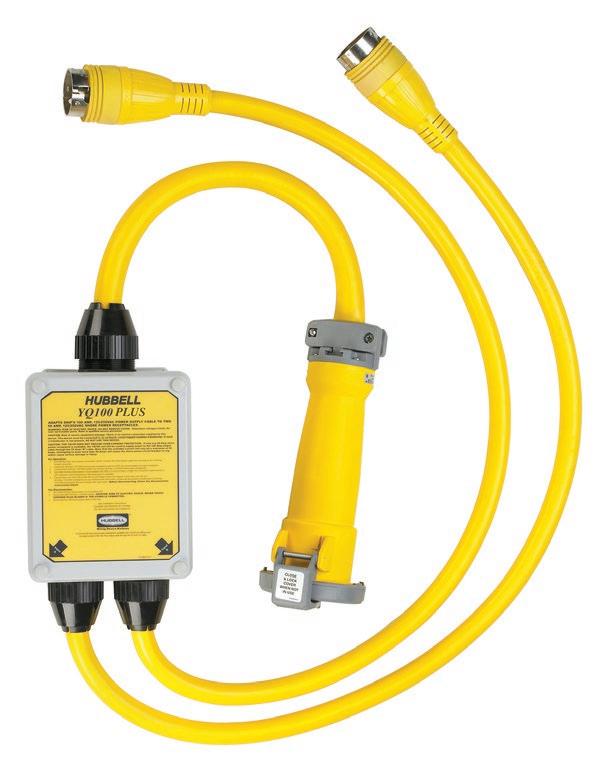
DECEMBER 2022 CARIBBEAN COMPASS PAGE 26
PRODUCT POSTINGS
which may not offer amenities like 100A service. Designed with numerous safety features, the Intelligent YQ100Plus adapter from Hubbell Marine enables powering a 100A vessel from two 50A receptacles dockside. With a rugged but compact and lightweight enclosure, the Hubbell YQ100Plus features full environmental sealing to protect against rain and high humidity. Its safe operating range
Touching Tales
Everything Inside, by Edwidge Danticat, First Vintage Contemporaries Edition, © 2020. 219 pages. ISBN: 978-0-525-52128-0

Edwidge Danticat has such a gentle voice, so soft, so touching. She writes like one whose heart is breaking while relating her stories. Her voice is whisper-like, but you hear her clearly. Her poignant tales about the land of her birth, Haiti, and its people, both there and abroad, are movingly and elegantly told in Everything Inside The eight short stories in Everything Inside are fiction, but written with such
empathy and feeling that they are as if the author has experienced them. The stories — set in Miami, an unnamed Caribbean island and Haiti — are “Dosas,” “In the Old Days,” “The Port-au Prince Marriage Special,” “The Gift,” “Hot-Air Balloons,” “Sunrise Sunset,” “Seven Stories” and “Without Inspection.” They all first appeared with different titles in various magazines.
“Dosas” begins the book, with Elsie receiving a phone call from her ex-husband, Blaise, telling her that Olivia, his girlfriend, has been kidnapped in Port-au-Prince. He dupes Elsie into paying the ransom.
When the trickery comes to light, Elsie is consoled by an old friend, Dédé, who has feelings for her.
She tried to imagine how things might have been different, how she could have been spared the humiliation of losing both her husband and her money, how she might not have wasted all those years of her life with Blaise. But she couldn’t envision how she and Dédé would have worked, either. Still, she heard herself say, “Sometimes you have to take detours to get where you need to go.”
In “The Old Days,” a dying man’s wife summons his daughter in New York to come to Miami to be at the bedside of her dying father — a father she never knew or even met. While there, the wife recounts some of the customs of the old days, telling the daughter, “Conch shells blared for each person who died. When a baby was born, the midwife would put the baby on the ground, and it was up to the father to pick up the child and claim it as his own. In the old days, the dead were initially kept at home…” In the old days, it would have been up to the daughter to pronounce her father dead, with her bereavement wails alerting villagers far and near.
The Port-au-Prince Marriage Special, or love-me-and-leave-me rings, were well known around the hotel where Mélisande lived with her mother, who worked there. The rings were given to young girls who frequented the hotel by guests who told them they loved them. The men gave the rings as a symbol of their loyalty, then left the girls to deal with the consequences. Mèlisande was one of these girls.
In “The Gift” a married man tries to put his marriage right when his wife sees him with his lover. He takes his wife and child on a vacation to Haiti where they experience the devastating earthquake, and he is a changed man forever.
In “Hot-Air Balloons,” Neah drops out of college the first semester to work full time for Leve, a women’s organization which runs a rape recovery center in a poor neighbourhood in Port-au-Prince. There she sees all kinds of unbelievable horrors that were inflicted upon women.

“Sunrise, Sunset” brings together three generations of a family for a baby’s christening. But the family’s pressure rises when the baby’s grandmother, who suffers from dementia, takes him in her arms and walks to the terrace and then holds him by his arms and dangles him over the railing.

Callie, the Prime Minister’s wife, invites Kim to spend the New Year holidays with her. Seven Stories was a game Callie and Kim played together when they were children. They would list an important moment from each of the seven years they were alive.
Callie’s list: “My first year, I was born. My second year I walked and talked. My third year, I fell and scraped my knee when I ran away from my governess… My fourth year, I started early school… My fifth year Daddy became Prime Minister… My sixth year, I moved into a castle. My seventh year Daddy died.”
Kim’s list. “My first year, I’d learned from my mother, I stopped nursing. My second year, my parents moved into the house we were now living in. My third year, my mother’s mother, Grandma Rose, came to live with us. My fourth year, I started preschool… My fifth year, I started regular school… My sixth year, Grandma Rose died. My seventh year, Callie Morrissete arrived, crying into my life…”
In “Without Inspection,” Arnold falls from a 48-story hotel construction scaffold. In this, the book’s last story, Danticat’s vivid imagination had to be working overtime as Arnold relives his life during the six and a half seconds it akes him to fall 500 feet to his death.
Though Danticat’s voice is delicate, her writing is powerful and will reside with readers. Recommended.
Crossing the channels between Eastern Caribbean islands, an ebb tide carries you off to leeward and a strong flood tide creates lumpy seas, so crossing with a favorable tide is faster and more comfortable. The table below, showing the local time of the meridian passage (or zenith) of the moon for this month, will help you calculate the tides.
Water generally tries to run toward the moon. The flood tide starts running eastward soon after moonrise, continues to run east until about an hour after the moon reaches its zenith (see TIME below) and then ebbs westward. From just after the moon’s setting to just after its nadir, the tide runs eastward; and from just after its nadir to soon after its rising, the tide runs westward. The first hour after moonrise, the westerly current is barely negated. The second hour the flood tide is stronger, the third and fourth hour it’s strongest, then it eases off in the fifth and sixth hours. The maximum tide is three or four days after the new and full moons.

DECEMBER 2022 CARIBBEAN COMPASS PAGE 27
December
DATE TIME 1 1904 2 1949 3
4
5 2204 6 2251 7
8
9
FULL
10
11 0216 12 0305 13 0352 14 0436 15 0519 16 0601 17 0642 18 0725 19 0811 20 0901 21 0957 22 1058 23 1204 24 1311
January
1
5
6
7
8
MERIDIAN PASSAGE OF THE MOON DECEMBER
BOOK REVIEW BY J. WYNNER
2022
2033
2118
2343
2433
0033
MOON
0125
25 1416 26 1515 27 1611 28 1701 29 1747 30 1832 31 1912
2023
2002 2 2048 3 2137 4 2228
2319
0000 FULL MOON
0011
0100 9 0148 10 0233 11 0316 12 0358 13 0439 14 0520 15 0603 16 0649 17 0740 18 0837 19 0939 20 1046 21 1153 22 1257 23 1356 24 1450 25 1540 26 1627 27 1713 28 1759 29 1846 30 1934 31 2024
2022JANUARY 2023
JACKS BOAT AHOY!
by Telfor Bedeau
The jack fish is a small saltwater fish about ten inches long when mature. We Grenadians call them simply “jacks.” Jacks swim in large shoals and are caught in long nets on the western side of Grenada and in the Grenadines.
Jacks are transported to all parts of Grenada by vendors using vehicles, and the arrival of one of these vehicles in a village is usually an exciting event that is announced by the blowing of a conch shell. At that sound everyone gets on the alert and people can be seen running with containers to the spot where the vehicle is parked. They buy, and comment about the size of the jacks. Whether big or small, the jacks end up either fried or as jacks broth, which is one of the most popular dishes in Grenada.
Before 1980, the town of Grenville, on the east coast of Grenada, used to receive its supply of jacks directly from boats that came from the Grenadines. They were long open boats with a large spritsail and jib. They carried a centerboard and were fast and seaworthy. Everyone called them Jacks Boats. Whenever one of these boats arrived in Grenville there was high drama. If fish was in short supply, the drama was multiplied.
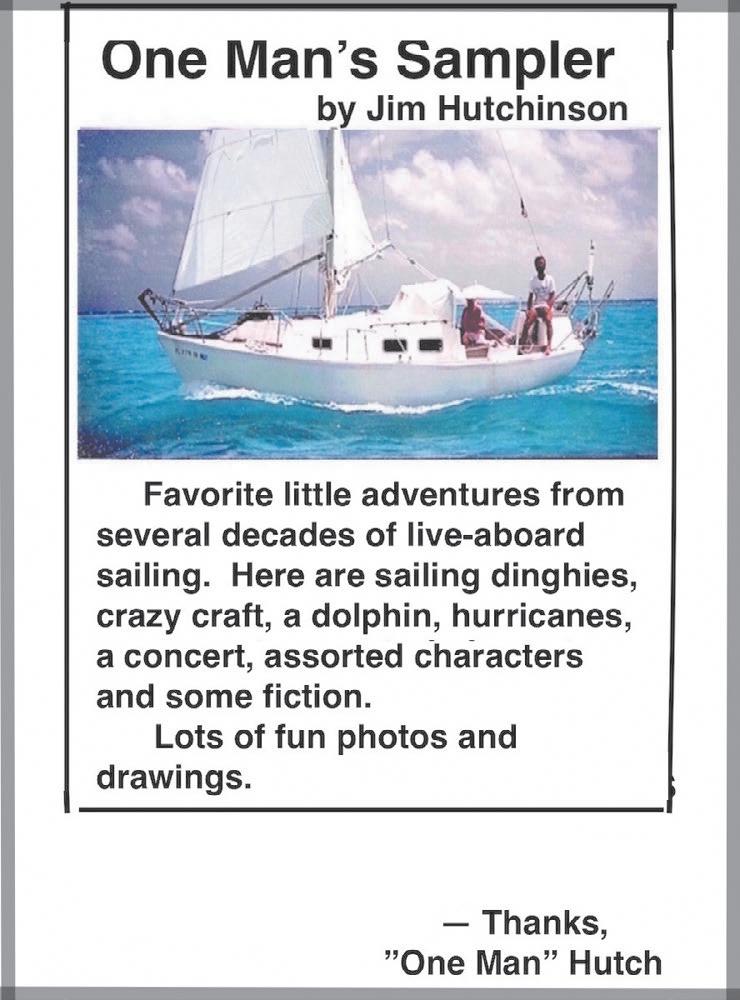
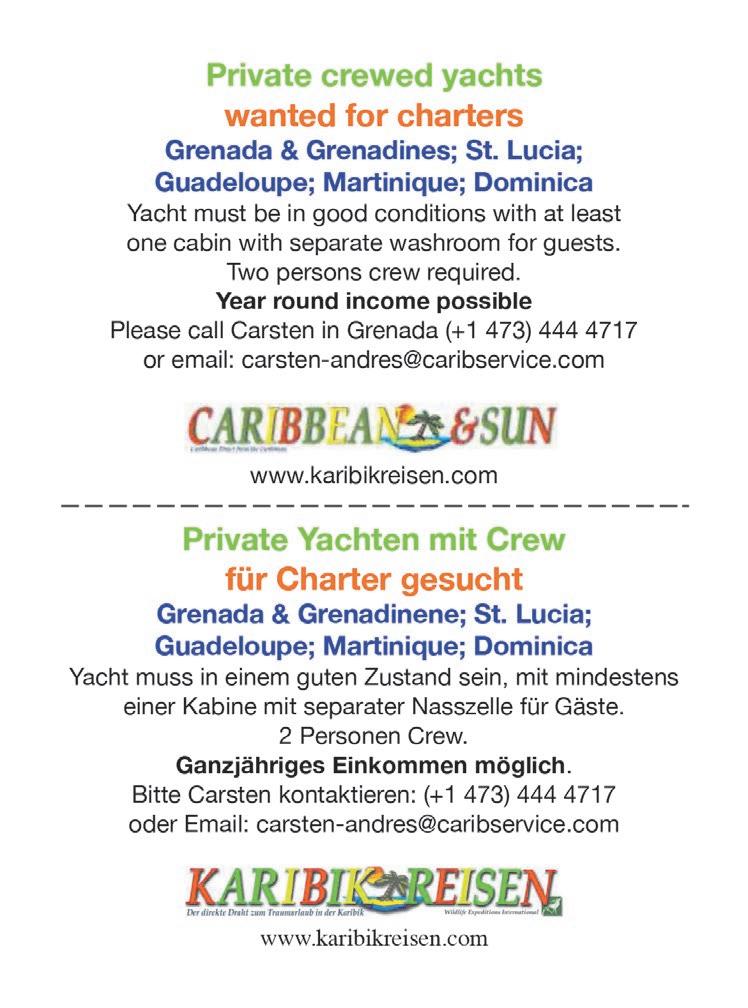
One day I was in Grenville when there was a shortage of fish. The local fishermen could not go to sea because the northeast tradewind was in a really bad mood. Huge waves were breaking on the barrier reef and the narrows at the eastern entrance of the channel like a boiling cauldron. Everyone was of the opinion that no boat could put to sea on a day like that. At the fish market the vendors, called “dry land fishermen,” were playing cards, while others were discussing the state of the weather. A few real fishermen were arguing as to who was the best sailboat captain. Another group was sitting on a derelict boat drinking rum and talking as loud as if they were addressing someone a mile away.
Many people from the countryside were also at the fish market waiting to see if a miracle would take place in the form of a boat arriving with fish of any type. One man told me his family had eaten no flesh for many days and he was longing to have some fish to go with his vegetables. Businessmen, labourers, housewives, farmers and others were all waiting, but at one o’clock in the afternoon there was not much hope.
Suddenly, someone shouted, “Sail ho!” In a split second all eyes turned eastward and there, at the end of Telescope Point, was the white sail barely visible as it competed with the white foam of the breakers. The sail sped southward, disappearing at times as it descended into the trough of the huge Atlantic waves, but advancing all the time towards the entrance of Grenville Channel. Soon it was heading for the shore, where preparations were being made to receive it.
While the boat was sailing towards the land, everyone on the shore became active. The dry land fishermen left their cards and prepared for business. Many people were running to and fro alerting their friends who were shopping in other areas of town, or who had gone to the rum shop to take a drink. Small business people and tradesmen who had no attendants closed their shops and ran to the waterfront to get their supply of jacks. Young men prepared to help haul up the boat and get free jacks. Pickpockets got ready to do business. The weak men and women gave their money to strong guys who would brave the battle and buy jacks for a commission.
The boat arrived and was immediately surrounded by dozens of men including the dry land fishermen who climbed on board to “buy the boat.” They argued for a few minutes before the cargo of jacks was sold to the highest bidder. The boat was then hauled up above the high water mark by the host of young men as easily as if it were made of feathers. While this operation was taking place, the crowd at the beach had grown to several hundreds and surrounded the boat so the only thing that could be seen was the mast. Everyone in the crowd was trying to get jacks first. This resulted in great turmoil. People were pushing, pulling, shouting, cursing. Several fights broke out and police from the nearby station had to come and make arrests. A few guys tried to climb up on the heads of others in the crowd and were promptly dumped on the ground. One guy grabbed a woman’s purse and ran northwards along the beach, but was overtaken by three others who caught him behind the Anglican church, retrieved the purse, beat him well, and then ducked him in the sea. A more clever guy worked his way to the side of the jacks boat with a stick, the end of which he had dipped in tar. Every now and then he inserted the tarred end into the container where
the vendors were putting their money as they sold the jacks. Money stuck to the tar and he made a little pile before retiring to boast to his friends on the outside of the crowd.
In spite of the commotion, the vendors calmly sold their jacks to the people who were buying the most, like businessmen and other rich people. However, a fairly high percentage of the masses got jacks before it was finished. The others felt cheated and while most of them drifted away, a few remained to curse and insult the dry land fishermen, who were too busy counting their money to worry about them.
Eventually the dry land fishermen and regular inhabitants of the fish market were by themselves once more. Some were richer, and the men operating the nearby rum shops were aware of that fact. They waited patiently for the business they knew would soon come.
Telfor Bedeau is a Grenadian storyteller, writer, folklorist and hiking guide. He has circumnavigated Grenada by rowboat and by windsurfer, and is currently writing his memoirs. This article first appeared in Caribbean Compass in 1998.

DECEMBER 2022 CARIBBEAN COMPASS PAGE 28
to
a
or to
Click here
read
sample
order: https://amzn.to/2ZaLfzw
‘Suddenly, someone shouted, “Sail ho!” In a split second all eyes turned eastward…’
In the last one hundred years, the Eurasian Collared Dove (Streptopelia decaocto) has expertly accomplished one of the greatest and speediest bird invasions in world history. Native to India, Sri Lanka and Myanmar, this large, pale dove begun its expansion into Turkey and the Balkans in the 16th century, then into China, Korea and Japan in the 18th and 19th centuries. In the early 1900s, the bird launched its European invasion at an astonishing speed: it colonized Yugoslavia in 1912, Hungary in 1930, Germany in 1945, Norway in 1954, Britain in 1955 and finally Spain and Portugal in 1974. In Britain, it displayed a remarkable capacity for proliferation, by increasing from FOUR birds in 1955 to 19,000 in 1964.
Although the Eurasian Collared Dove’s aim for world domination was momentarily thwarted by the vast Atlantic Ocean, it somehow found a way across to the New World by simply posing as someone else. Indeed, it is widely believed that a bird breeder from Nassau, Bahamas, fell victim to the dove’s deceptive looks when he imported several pairs to his aviary in the early 1970s, believing that he was bringing the domesticated and very similar Barbary Dove (Streptopelia risoria). Eventually, in December 1974, the aviary where the doves were housed was burgled by youths looking for parakeets, causing several doves to escape. Disheartened, the breeder
Grenada. Indeed, all populations of the species in the West Indies and much of North America have most likely originated from consecutive dispersal of those two introduction sites.




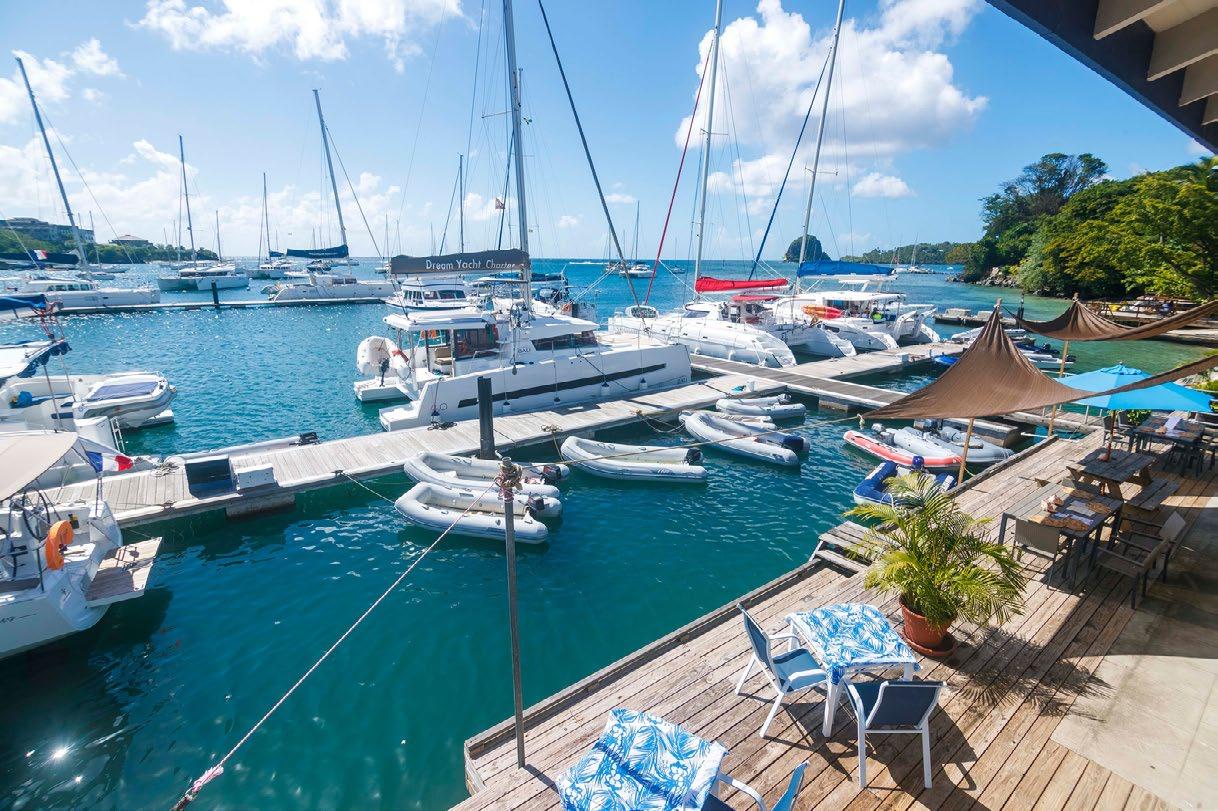
It appears that the success of the Eurasian Collared Dove lies in its capacity to settle in human-altered habitats, such as agricultural areas, roadsides and suburban areas, particularly car parks and town squares. In Grenada, a small population has settled in the capital’s cruise ship terminal and adjacent shopping mall’s car park, where short-legged, plump individuals forage for fallen seeds and grit on the park’s concrete surface. I have also observed the species at other locations including Grenada Marine, a boatyard on the island’s southeast coast, where they roost in the surrounding trees.

When not foraging, Eurasian Collared Doves find perches to preen on, typically atop buildings, power lines and treetops. An attentive passerby can easily find them quietly observing the world from a high perch, or occasionally they might be seen sunbathing with closed eyes, fanned tail and wings spread out, or challenging one another for food and territory. Although by nature they roost communally, they still defend territories and can become fairly aggressive to each other, particularly near their nest.
The best time to watch this sand-coloured dove is during the breeding season. While males croon all year around, they are particularly vocal during this time, as they start to croon before sunrise and continue throughout the day, proclaiming their existence from high perches around the nesting grounds, commanding the attention of their rivals with throats inflated, ruffled plumage and emphatic koo-KOO-koos!
During confrontations, males show alarm, impatience or annoyance with a soft gu call. They prance about on light, bright wings, performing flight displays designed to dazzle both rivals and females alike – rising at steep angles with wings clapping, descending, then spiraling with fanned tails and triumphal hwaaah calls. While less common, females voice their concerns with highpitched koos, while both sexes utter soft, affectionate huus when calling out to each other.
Doves may be celebrated as symbols of peace, but male Eurasian Collared Doves can be hawkish when competing for a mate. While usually a paired male will at first avoid confrontation by leading his mate in the opposite direction on the arrival of his rival, unpaired males will embrace the challenge, hopping eagerly towards each other with a bowing posture, head lowered, throat inflated, ruffled feathers and wings dropped. Most of the time these saber-rattling confrontations are all show and no action, and are often resolved when one
released the remaining birds thereafter. While it is believed that no more than 50 birds were released, by mid-eighties the species had become very common on Andros, Abaco, Grand Bahama, Spanish Wells, Bimini and some of the Berry













Given the species’ successful expansion history, it is not surprising that the Nassau population is now found on many Caribbean Islands, having made it to Cuba, the Cayman Islands, the Greater Antilles and, possibly, the Lesser Antilles. Though natural dispersal cannot be ruled out, the Lesser Antillean population most likely originated in Guadeloupe, in 1976, where once again this pretty dove had a helping hand with its world conquering goals. Reportedly, in 1969, an individual purchased several pairs of Eurasian Collared Doves in Paris and brought them to Guadeloupe. In 1976, 20 doves were released when the island’s only active volcano, La Grande Soufrière, erupted. Consequently, the doves dispersed to the neighboring islands of St. Kitts, Nevis, Monserrat, Dominica and Martinique. Today, the Eurasian Collared Dove can also be found in St. Lucia, St. Vincent & the Grenadines and

DECEMBER 2022 CARIBBEAN COMPASS PAGE 29
The Eurasian Collared Dove OUR ISLAND BIRDS BY BELA BROWN Fuel Dock 24 hour Security Port of Entry Customs & Immigration Office - 9am to 6pm Electricity 110V/220v & Water Complimentary Wifi Laundry Service Supermarket & Boutique Cafe Soleil & Flowt Beach Bar The Loft Restaurant and Bar Indigo Dive Shop Swimming Pool Beautifully Designed Hotel Rooms Marina: VHF 16 or 68 Email: info@bluelagoonsvg.com 784.458.4308 Call: BELA A BROWN
LIFE FIVE CUTE AND COLORFUL REEF FISH TO BRIGHTEN YOUR DAY
by Darelle Snyman
To me, snorkeling and diving remain two of the most rewarding ways to immerse myself in the beauty of Mother Nature. The clear waters of the Caribbean provide a host of opportunities to indulge in these activities, especially now that we have put another hurricane season behind us.
In the underwater world it is usually the colorful fish that draw our attention first. The following five fish species might not be large in stature but are definitely cute and colorful.
The Fairy Basslet
Anyone that has ever dived or snorkeled on a Caribbean reef will be familiar with our first, very vibrant little character, the Fairy Basslet (Gramma loreto). This striking two-toned fish, clad in bright purple and yellow, is impossible to miss. The black stripe that streaks through its eyes gives it a somewhat grumpy look. Fairy Basslets are easily identified by their distinctive coloring. It is probably their bright purple front half that gave them their alternate name of Royal Gramma, as purple is considered to be a royal color. Their vivid hues make them irresistible from a photographic point of view. Their rapid movements and quick retreat actions, however, reduce them to purple flashes, challenging to photograph. I have thrown in the towel many times in trying to get a decent photo of these frustratingly fast little fish. It has required a lot of patience and loads of shots to end up with a few non-blurry photos that actually include the whole fish. These reef-dwelling fish have a unique penchant for swimming upside down under ledges and along cave ceilings, a fun behavior that they seem very comfortable with. They are territorial and tend to spend most of their time hiding in crevices, darting in and out to feed on plankton suspended in the water. They are shoaling fish and establish small colonies with a male dominating a harem of females. Dominance is based on size; thus at each coral head it will be the largest individual that dominates.
All Fairy Basslets start out life as female but when they gather in small schools the largest female will change gender and become male. Male individuals are larger and more vibrant in color than the females, a description not necessarily helpful for distinguishing between the two sexes when encountering them underwater as purple flashes of color. When it comes to reproduction the male takes the leading role by creating nests within small holes and crevices to win a female’s affection. Once the female deposits the eggs the male remains to guard them and clean the nest.
Due to their fast movements and secretive nature, Fairy Basslets have few
male’s death.
The Puddingwife Wrasse

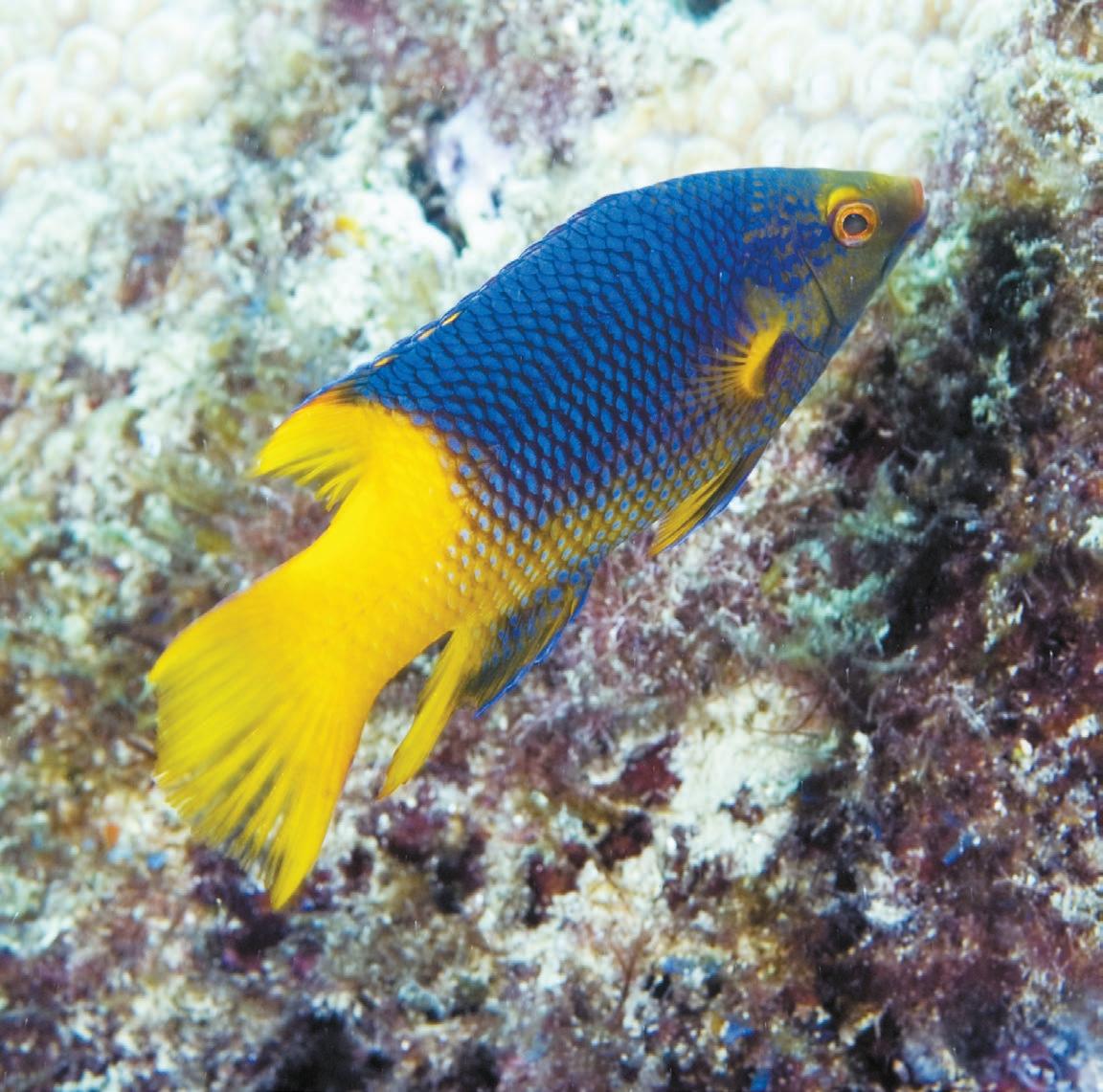
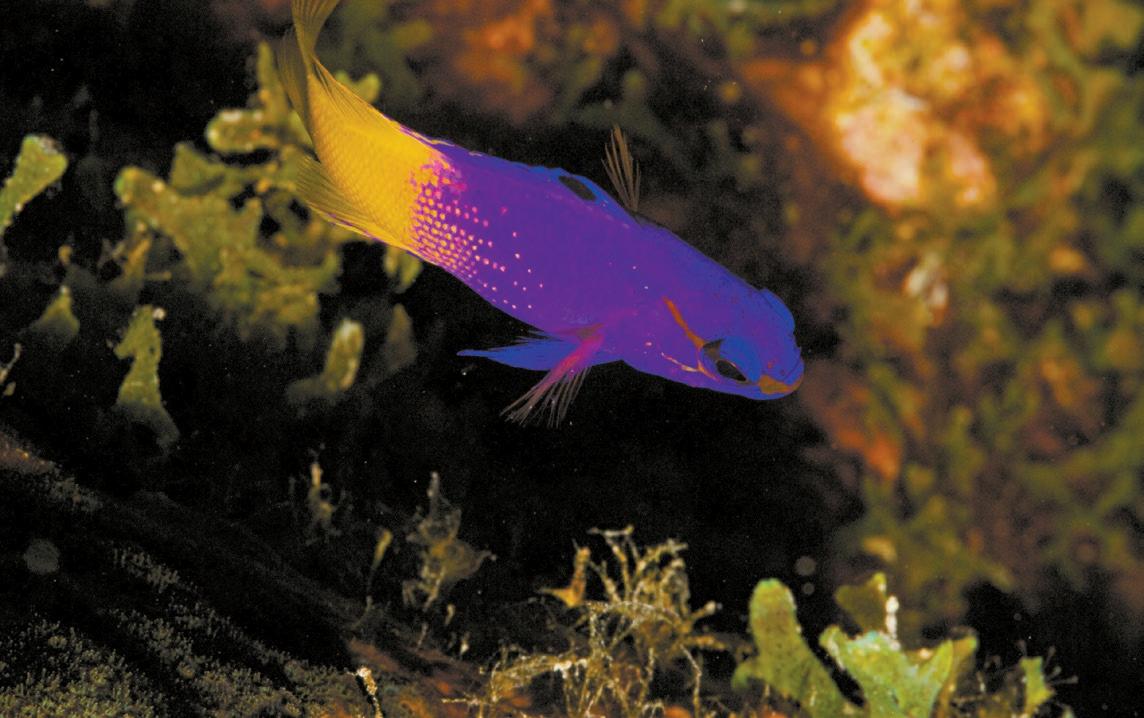
The large wrasse or Labridae family truly has its share of diverse and conspicuously colored fish, many showing great variety within individual species, a situation that greatly complicates species identification. One such species, that well illustrates the dramatic color changes wrasses can undergo during their different growth phases, is the uniquely named Puddingwife Wrasse (Halichoeres radiatus). The origin of the name is unclear and is thought to be corrupted from its Spanish name in Cuba, pudiano verde. (Puddingwife is actually an obsolete Middle English word meaning woman who sells sausage, which clearly has nothing to do fishes.)
This beautiful marine creature starts out life as an orange- to gold-colored juvenile whose body is marked with a distinctive white line that stretches from the eyes to the tail, and an ocellated blue spot on the dorsal fin. It is, however, the next (or initial) phase, that truly showcases its beauty. In this phase, as can be observed in the photograph, the yellow to greenish body is covered with an intricate pattern of iridescent blue lines and spots. How stunning is that?
During the adult (or terminal) phase there is not much left of this intricate blue pattern; the fins, however, remain edged in brilliant blue and the head bears greenish-blue scrawls. There is often a white, mid-body bar present on the adult’s blue-green body and the tail fin has a yellowish margin.
Like all wrasses they are constantly on the move during the day, foraging for crusty eats like mollusks, crustaceans and sea urchins.
enemies but are known to be preyed upon by the invasive lionfish.
The Spanish Hogfish
Another two-toned beauty commonly encountered on coral reefs all across the Caribbean, and definitely easier to photograph, is the Spanish Hogfish (Bodianus rufus). The coloration of its elongated body is influenced by water depth. In the shallows it features a blue upper body and a golden-yellow lower body and tail. In deeper water the blue gives way to a red upper body and head.
During the day you will find adult Spanish Hogfish rooting around for delicacies such as brittle stars, crustaceans, sea urchins and mollusks. This process is enabled by their piggish snout, from which they get their common name. Their powerful jaws and anterior canine teeth help them break through the crusty protections of their prey.
The juveniles, on the other hand, maintain cleaning stations, getting their sustenance from the parasites and debris they clean off the gills and fins of other fish. They advertise their services by swimming in a circular pattern around coral heads. By the time they reach about three inches (eight centimetres) in size they switch to the adult diet of crusty invertebrates.
The night divers among us should keep a look out for them in sand beds, where they tend to bury themselves at night.
Spanish Hogfish, like their other wrasse family members, are not the most graceful swimmers as they rely on their pectoral fins only for movement, which is given the fancy name of labriform locomotion. Because of their slow, ungainly style of swimming they rarely venture far from the protective shelter the reef system provides. Spanish Hogfish, like the Fairy Basslets, are protogynous hermaphrodites, meaning they also begin life as female and then change to male, a change that takes seven to ten days to complete.
They hang out in permanent polygamous groups where a dominant male keeps
DECEMBER 2022 CARIBBEAN COMPASS PAGE 30 GET TO KNOW YOUR CARIBBEAN
MARINE
company with (and pursues) multiple females. The largest female in the harem will undergo a sex change to take over the role of harem master in event of the dominant
Continued on next page
This striking two-toned fish, clad in bright purple and yellow, is impossible to miss.
In the shallows the Spanish Hogfish features a blue upper body and a golden-yellow lower body and tail.
In the initial phase the Puddingwife’s body is covered with an intricate pattern of iridescent blue lines and spots.
The Green Razorfish
Another truly attractive, but smaller member of the wrasse family is the Green Razorfish (Xyrichtys splendens). The male, as seen in the photo, is a true beauty with its body cloaked in shades of green to blue-green and a face lined with fine orange bars. It has one or two dark spots mid-body, a feature absent in the females.
During the initial phase Green Razorfish are pinkish-grey in color and may display irregular white vertical bands. Being protogynous hermaphrodites like their other wrasse family members, all initial phase individuals are female. All growth phases are characterized by a rounded tail fin and eyes with a prominent red iris.
The mottled-colored juveniles have an odd-shaped fin protruding from just behind their heads. These well camouflaged little fish are very active and not easily spotted as they dart around their favored habitat: sand areas and rubble bottoms near reefs. Again, it’s another nightmare of a species to photograph.

Their common name, razorfish, relates to their having razor-thin bodies and sharp foreheads. These features help them to perform two behaviors that set them apart from their other wrasse family members: their sand-diving and “sand-swimming” ability. When they feel threatened they hide by diving straight down, headfirst into the sand, where they apparently can remain for half an hour. More interesting is their ability to “swim” under soft sand, emerging a metre (over three feet) or more away from the entry point. These evasive techniques are employed to avoid predators such as tunas, snappers, groupers and barracudas.
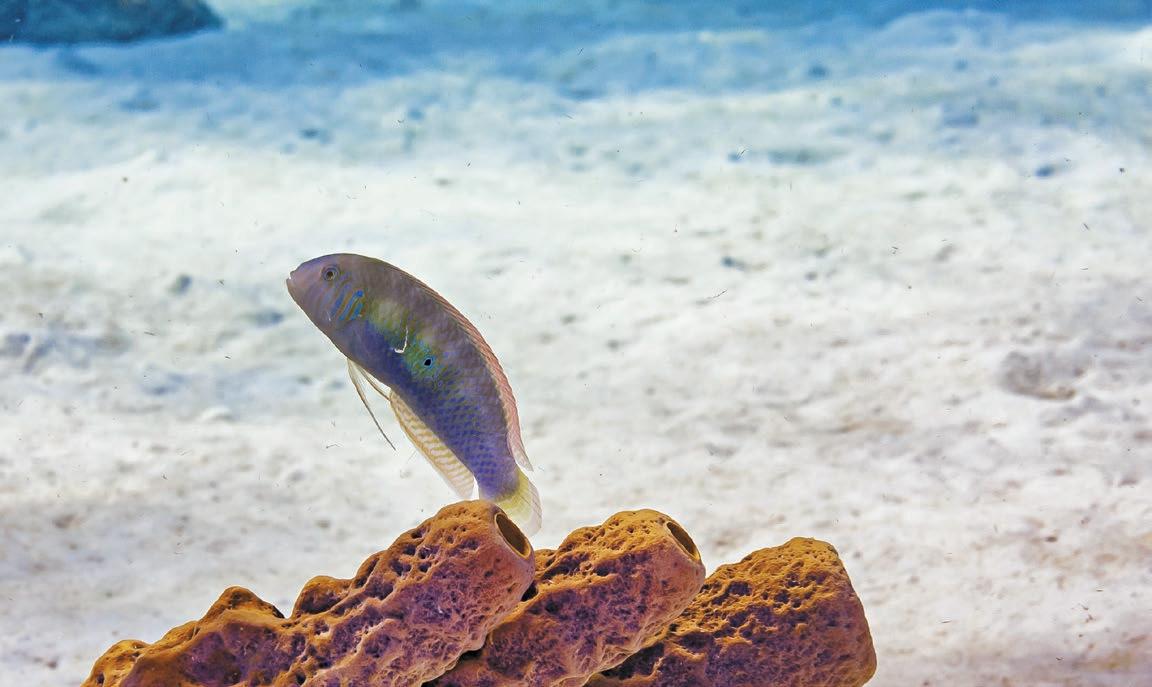
Last but not least is the juvenile Beaugregory (Stegastes leucostictus), a member of one of my most favorite fish families, the feisty damselfishes. This beautiful twotoned little fish is easily spotted, with its yellow body and vivid blue lines and spots that cover its upper head and back. A prominent black eye-spot ringed in blue can be seen on the dorsal fin.
This colorful juvenile transforms into a rather dusky-colored adult who tends to have a brownish color on top that fades into yellowish flanks. The blue dots fade to small spots visible on the scales and the large dorsal spot loses its blue ring and recedes to form a small black spot.
A PRAYER FOR THIS BOAT
May nothing evil cross this deck And may ill-fortune never pry About these ports; may the sea And gale go by.
By faith made strong, these timbers will Withstand the battering of the storm. This cabin, though all the world go chill, Will keep us warm.
May peace walk softly ’cross these planks And touch our lips with holy wine Till every cuddy-corner blooms Into a shrine.
With laughter drown the racist shout And, though this sheltering hull is thin, May it be strong enough to keep hate out, And hold love in.
— William Pringle
ISABEL DYER
You will find these tiny fish hiding out in a variety of inshore habitats. They are territorial, like all damselfishes. They appear to be less aggressive than some of their relatives. It is always fun watching a riled-up damselfish when you have invaded its space, especially when you try to photograph it. They actually spend a great deal of their day chasing other fish species away.
During courtship a male encourages a female to enter its nesting site by making clicking sounds and performing a series of rapid dipping movements. Once enticed into the male’s territory, the female deposits her eggs in empty shells or under rocks. A nest may contain up to 25,000 sticky eggs as multiple females may have used the same nest. The male takes responsibility for the eggs, protecting them from predators and fanning them to ensure they are well oxygenated. The eggs hatch within three to seven days.
All these colorful little fishes are fun to observe and I hope it did brighten your day to learn more about them.
Island Poets
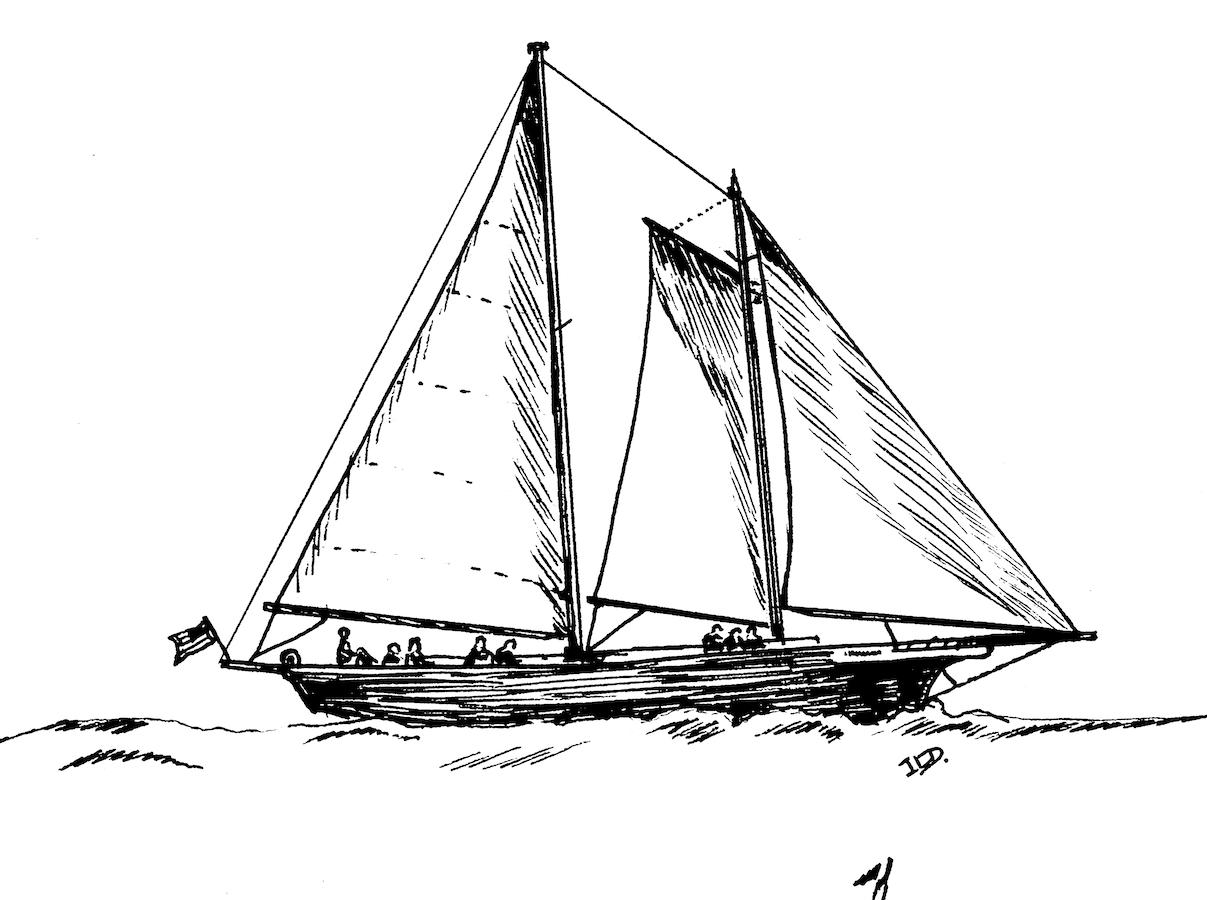
DECEMBER 2022 CARIBBEAN COMPASS PAGE 31 Continued
page
from previous
The Beaugregory
The well camouflaged little Green Razorfish are very active and not easily spotted.
You will find the tiny Beaugregory hiding out in a variety of inshore habitats.
RECIPES
Many, Many Mangos
by Mary Heckrotte
Here come the mangos! Those little green nubbies are popping out on the trees and, before you know it, bushels of unwanted ripe fruits will be rotting on the ground. From a childhood spent deprived of even hearing of a mango to now having more than we could ever use — oh, I can’t quite get used to the decadence of it all. Mangos everywhere! The Queen of Fruits, the most widely consumed fresh fruit in the world, a comfort food, a sacred fruit, a symbol of love and friendship…. Okay, I confess: I’ve got an advanced case of mango mania. While cruising the Caribbean I’ve probably collected more mango recipes than there are mangos in my hometown back in North Carolina — and I aim to try them all.
Some say there are upwards of 500 varieties of mangos, but even if there are only 50 kinds, choosing among the array of sizes, shapes and colors is more than confusing. They come round, oblong, elliptical, and kidney-shaped; they are green, red, yellow, orange,

purplish, or pink; they can weigh only half a pound or a hefty four pounds. So a few years ago I did some reading and asked a lot of questions of the market ladies, trying to figure out which mangos to buy. The consensus seems to be that for just plain eating out of hand a big hybrid is best — yellow, red, orange, anything but green. Mathematically, the larger the fruit, the higher the flesh-to-seed ratio; and besides that, the flesh of the hybrids is tender and juicy, smooth as the inside of a peach. The very best place to eat a good, juicy ripe mango is in the sea or leaning over the sink or the boat’s coaming. The juice will stain your clothing, for sure, and maybe your fiberglass, too, so keep a roll of paper towels handy. Smell and feel are the real tests for choosing a good mango. A ripe mango has a sweet, pleasant aroma. If you sniff one that smells like turpentine, avoid it — it will taste the same way it smells. Green mangos don’t have much fragrance at all, so just look for those that are unblemished. Whether green or ripe, mangos that seem heavy for their size will have more juice than lighter weight ones in the same group. Ripe mango flesh also should be free of blemishes and should yield only slightly if you squeeze it gently. Mangos picked green will not ripen properly, so your best bet is to avoid the green mangos at the market unless your recipe calls specifically for them. Half-ripe mangos are fine, and are actually better for cooking as they have firmer flesh. You can place under-ripe mangos in a paper bag, checking them daily until they reach the stage of ripeness you want. Stop the ripening process by putting the mangos in your refrigerator, where they will keep up to about five days.
Big mangos are not the cheapest, though, and not the ones you’ll see falling off trees in every neighborhood. The Caribbean market ladies will tell you quickly that those smaller, natural mangos are “tready,” that is, their flesh is full of fibres (threads). When ripe, they taste just fine, but picking the threads out of your teeth will occupy you for some time after you’ve already thrown the seed away. And once ripe, those little guys are a bear to peel and de-seed, and if you try putting them in your blender, the threads will tie
knots around the blades.
But don’t pass them by, as they’re either dirt cheap or free for the picking. They’re fine for cooking, especially when green. In fact, last year I discovered for myself that immature green mangos make the very best chutney. You can even slice right through the middle of their seed and pop both halves out with the tip of your knife, all much easier than trying to get the flesh off a mature seed. You’ll also find green mangos tart and tasty when sliced and seasoned with a little lemon juice, salt, pepitoria (ground dried pumpkin seeds) and maybe a flash of chili powder. You can make these yourself (always safer, since you will know for sure that you have washed and soaked the mangos in iodine or bleach water to kill any parasites!) but in the Latin Caribbean you can usually find a street vendor selling them in little plastic bags already seasoned. They make a refreshing walking-about-town snack. Another way to season these green slices is with soy sauce.
You’ll find that even those lovely big hybrid mangos are a bit difficult to peel and pit. The flesh hangs on to the stone just like the flesh of a cling peach. If you think of the seed inside as basically flat and stand it with the stem end of the mango up, you can take a sharp knife and slice off the mango “cheeks” on each side, up close to the seed. Then trim off the smaller pieces of flesh on each edge of the seed. (The cook gets to slurp off what clings to the seed!) If you will be using mango slices in your recipe, then just peel the big pieces and slice the fruit to the desired thickness. If you want mango cubes, leave the peel on and crosshatch through the flesh to cut diamonds with the sharp point of your knife. Be careful not to cut all the way through the tender skin. Bend the mango piece backwards, sort of wrong side out, making the insides bulge outward. Then, bingo, just slice the little cubes off with your knife.
It’s a good idea to always peel a mango first if you are planning to just chomp on it still on the seed. Many people have an allergic reaction to the enzymes, which are stronger in the peelings. We had one friend who ate several unpeeled ripe mangos in the bus on the way to the airport where he was taking a plane to the US. Early the next morning at the hotel, he knocked on our door. We just couldn’t quite help laughing when, through lips that looked like two fat red caterpillars, he said, “I don’t think my grandbabies will want to hug me!” He would have been better off to buy mangos that were already peeled and sliced.
Those enzymes are good for something, though: they make wonderful tenderizer, similar to papaya. You can tenderize tough meat by marinating it for an hour or so in mango juice, puree, or even in the peels. In Trinidad or other places where there are shops for East Indian foods, you’ll find a spice called amchur (also spelled amchoor, amchor, or aamchur), which is powdered dried green mango. This spice is used for both seasoning and as a tenderizer.
PICK UP!
ST. GEORGE’S AREA Grenada Yacht Club Island Water World Port Louis Marina Marina Office Victory Bar
SOUTH COAST Budget Marine Clarkes Court Boatyard & Marina North Yacht Shop Essentials Mini-Market Grenada Marine Le Phare Bleu Marina Nimrod’s Bar Secret Harbour Marina Spice Island Marine Turbulence Sails
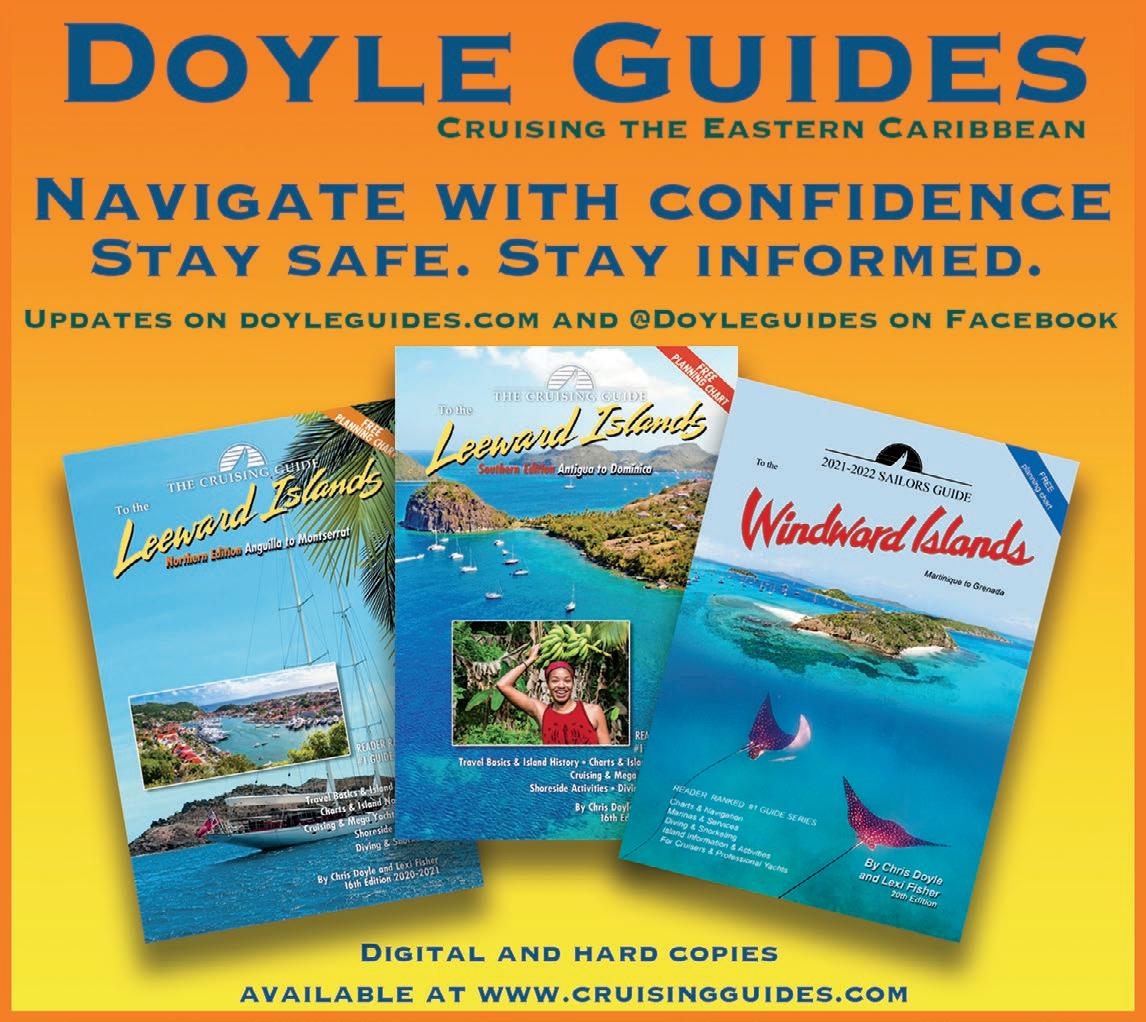
DECEMBER 2022 CARIBBEAN COMPASS PAGE 32
COMPASS FAVORITE
next
Continued on
page
Ahoy, Compass Readers! When in Grenada, pick up your free monthly copy of the Caribbean Compass at any of these locations. (advertisers in this issue appear in bold):
Continued from previous page
Mangos have much going for your health, too, and isn’t it wonderful when something so good is also good for us? Those enzymes also act as a digestive aid and the whole fruit is packed full of fiber. They are rich in vitamins A and C, minerals, anti-oxidants, potassium and beta-carotene. On top of that, they are low in calories, sodium, fat, and cholesterol.
One mango tradition aboard Camryka began on the Rio Chagres in Panama when we came across a mango tree so full that mangos hung down nearly to the water. We pulled our dinghy up under a big tree branch and loaded up with lovely ripe yellow-orange mangos. After eating all we could possibly hold, we realized we had picked far too exuberantly, and we now had a bushel of mangos to do something with. I made my first batch of chutney and discovered a fine treat, especially when served over cream cheese and spread on crackers for a typical Cruisers’ Happy Hour. That year, we packed our suitcases with several jars of that chutney and took a little taste of the tropics to family back home. What a hit! Every year since, I’ve made mango chutney, and found even better recipes. Now our sons-in-law won’t let us out of the airport till we produce their annual jars of mango chutney. But we also look forward each year to eating all the mangos we could ever hope for, just plain, all juicy and ripe, mixed in fruit salads, blended into fruit smoothies, cooked with chicken and seafood, pork and beef, made into pies and puddings. Why would anyone ever want to live anywhere but in the tropics, where mangos fall from the trees?
Camryka’s
Hot Green Mango Chutney
25 hard green mangos, peeled, seeded, and chopped fine
1 cup dried tamarinds, shelled 4 cups vinegar, divided in half 1 cup raisins
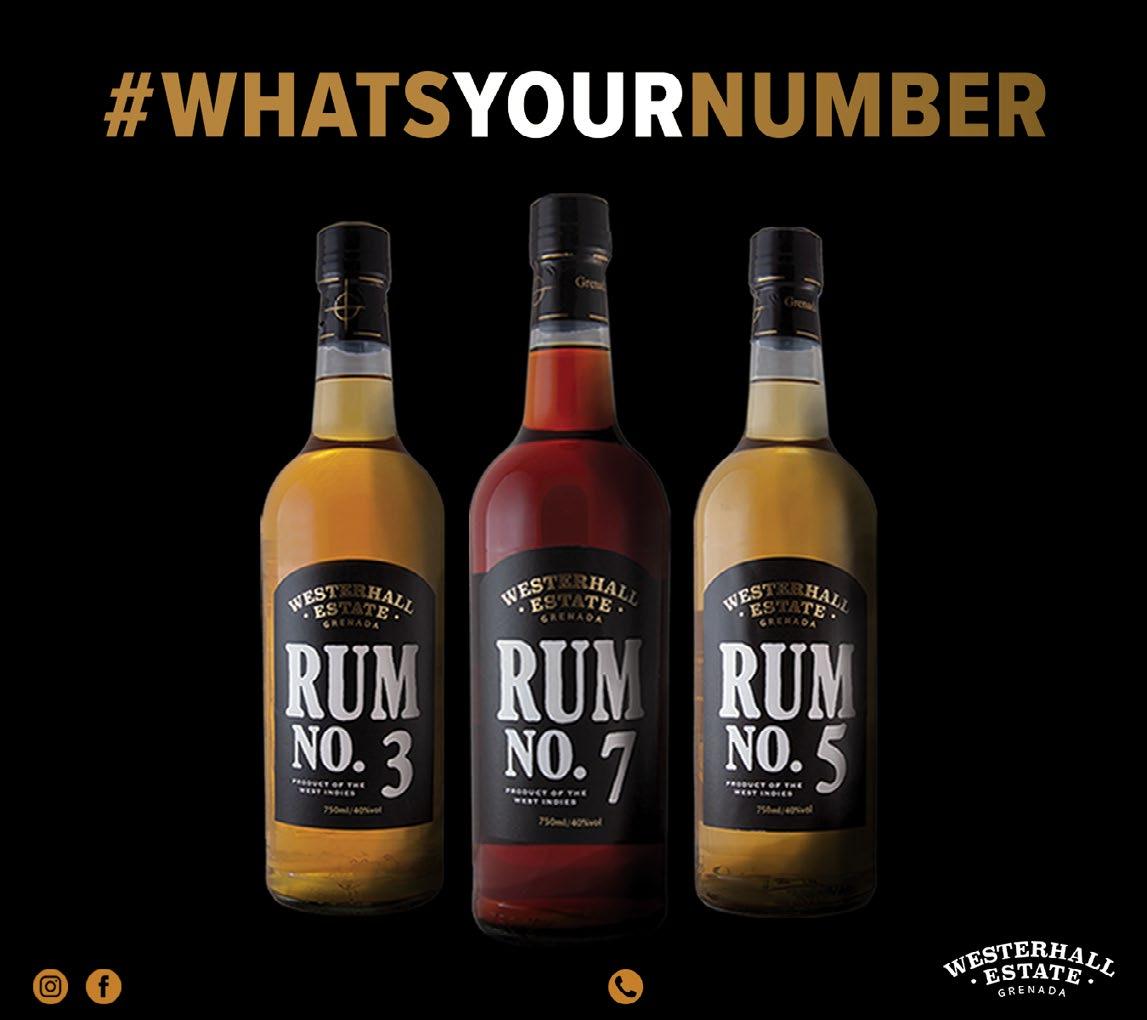

4 cups brown sugar
4 cups white sugar
1/4 cup salt
1/4 pound fresh ginger, peeled, chopped fine 10 jalapeño peppers, seeded, chopped fine 6 large onions, peeled and chopped fine
2 heads of garlic cloves, peeled, minced
1 teaspoon ground cinnamon
1 teaspoon ground nutmeg
Soak tamarinds in 2 cups vinegar overnight and then pour through a sieve to remove seeds. Discard seeds and set tamarind/vinegar aside. Cook mangoes in 2 cups of vinegar over low heat until soft. Stir often to prevent scorching. In separate container, mix tamarind/ vinegar, raisins, sugars, salt, ginger, peppers, onions, garlic, cinnamon, and nutmeg. Add this mixture to cooked mangoes. Heat over low heat until the mixture begins to boil. Let the mixture boil very slowly for 45 minutes, stirring frequently. Bottle while hot in freshly sterilized jars. Makes about 8 pints.
Grouper Fillets with Mango
2 fresh grouper fillets (or other mild white fish) salt and freshly ground black pepper to taste
2 tablespoons olive oil
3 garlic cloves, peeled, slivered
1 large, firm ripe mango, peeled, sliced
Sprinkle fish fillets with salt and pepper to taste. In a large skillet, heat olive oil over medium heat and sauté garlic and fish fillets until fish is lightly browned on each side. Add mango slices and continue to sauté until fish will flake with a fork and mango is juicy and soft. Serve immediately. Makes two servings.
Tenderloin with Spring Onion and Mango
3 tablespoons olive oil, divided in three 2 teaspoons cornstarch

1 teaspoon sugar salt to taste
1 pound beef or pork tenderloin, cut into strips 4 spring onions, chopped including tops
1 beef bouillon cube, crushed 1/4 cup water
1 large ripe mango, peeled, sliced
In a small bowl, mix one tablespoon olive oil, cornstarch, sugar, and salt. Add beef or pork strips and let mixture marinate for 20 minutes. In a heavy skillet, heat another tablespoon of olive oil and sauté meat until it is cooked through, about 2 minutes. Remove meat to a serving dish. Add third tablespoon olive oil to skillet and sauté onion and tops 30 seconds. Add beef bouillon cube and water and sauté an additional 30 seconds. Add mango slices and return meat to skillet. Sauté, stirring constantly, until meat and mango are both heated through. Serve hot with rice. Makes 2 or 3 servings.
Chicken with Mango Cream Sauce
4 boneless, skinless chicken breasts
1 tablespoon flour
salt and freshly ground black pepper to taste
1 tablespoon olive oil
1 medium onion, sliced thin
1 chicken bouillon cube, crushed
1/2 cup water
1 small ripe mango, peeled and sliced
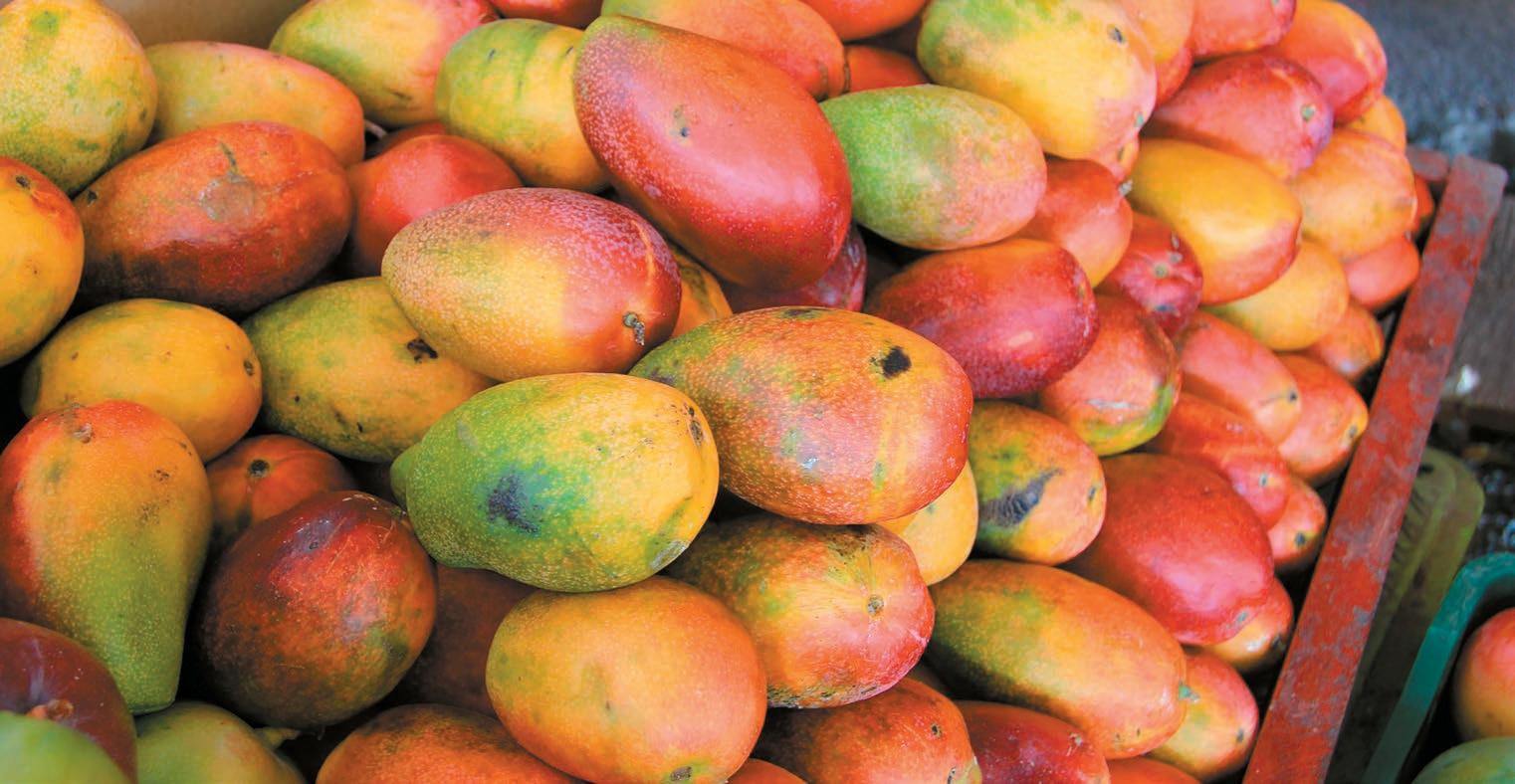
1/3 cup cream
Dust chicken with flour and sprinkle with salt and pepper. Heat olive oil in heavy skillet and brown chicken over medium heat. Remove chicken from skillet. Put onion in skillet and sauté until limp. Add mango slices, bouillon, water, and return chicken pieces to skillet. Lower heat, cover skillet, and simmer until chicken is tender. Stir in cream and serve hot with rice. Makes 4 servings.
Mango-Apple Crisp
3 cups peeled mangoes, diced in three-quarter-inch cubes
3 cups Granny Smith or other hard apples, peeled, diced
1/2 cup flour
1/2 cup brown sugar
1 cup rolled oats
1 teaspoon ground cinnamon 1/2 cup butter or margarine, melted
1 package whipped topping, or use real whipped cream
Spray inside of 9”x13” ovenproof pan with non-stick spray. Mix diced mangoes and apples and put in prepared pan. Combine flour, sugar, oats, and cinnamon. Blend in butter with a fork until mixture is crumbly. Sprinkle over mango-apple mixture, then press lightly with a fork to cover the entire top. Bake uncovered at 350°F for about 40 minutes. Crisp is done when fruit is tender and topping is bubbly. Prepare whipped topping by package directions, or whip cream. Serve hot crisp with dollops of whipped topping. Makes 6 servings.
This article first appeared in the April 2004 issue of Caribbean Compass
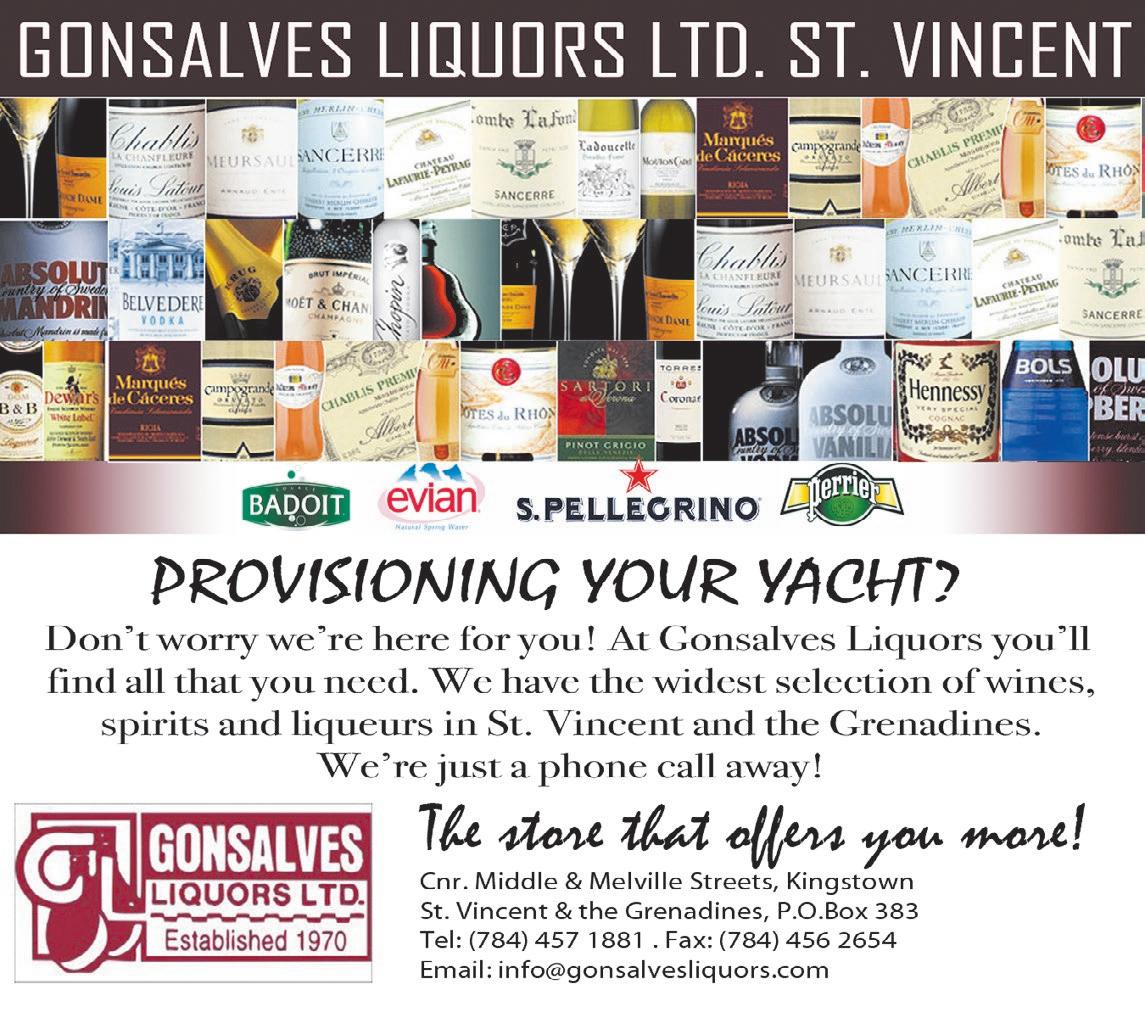
DECEMBER 2022 CARIBBEAN COMPASS PAGE 33
KEVIN CASPER
by Nicola Jones
Philip Jones, known affectionately as Capt. Phil by his many friends, had a lifelong passion for watersports, boats and adventure. He was inspired by this passion at an early age to travel from England to the United States, where he and a partner established a business manufacturing parasails. This eventually led him to the Caribbean to start a watersports business in the Cayman Islands. During this time, he crossed paths with a young divemaster named Nicola Allan and together they began a 30-year “splendid adventure.”
After several years of business struggles in the Caymans, exacerbated by Hurricane Gilbert and a subsequent recession, Phil sold the business. He and Nicola travelled to the United States, purchased a small RV they named Splendid Adventurer and embarked on a 10,000-mile trip through the States. Ending up in San Diego, California, they sold the RV and accepted crew positions on a sportsfishing boat sailing down the Mexican coast and into the Sea of Cortez. They then opted to do a boat delivery job from Puerto Vallarta to San Francisco in exchange for two tickets to anywhere in the Caribbean, and the stage was set for their next adventure.

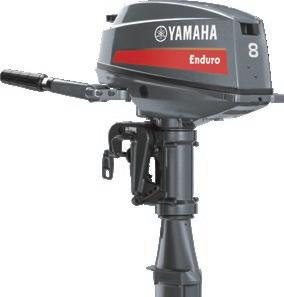
Returning to the Caribbean, Phil served as a manager for Trade Wind Yachts charter bases in St. Lucia and St. Vincent.

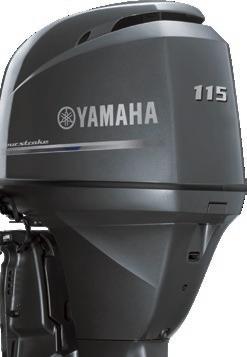
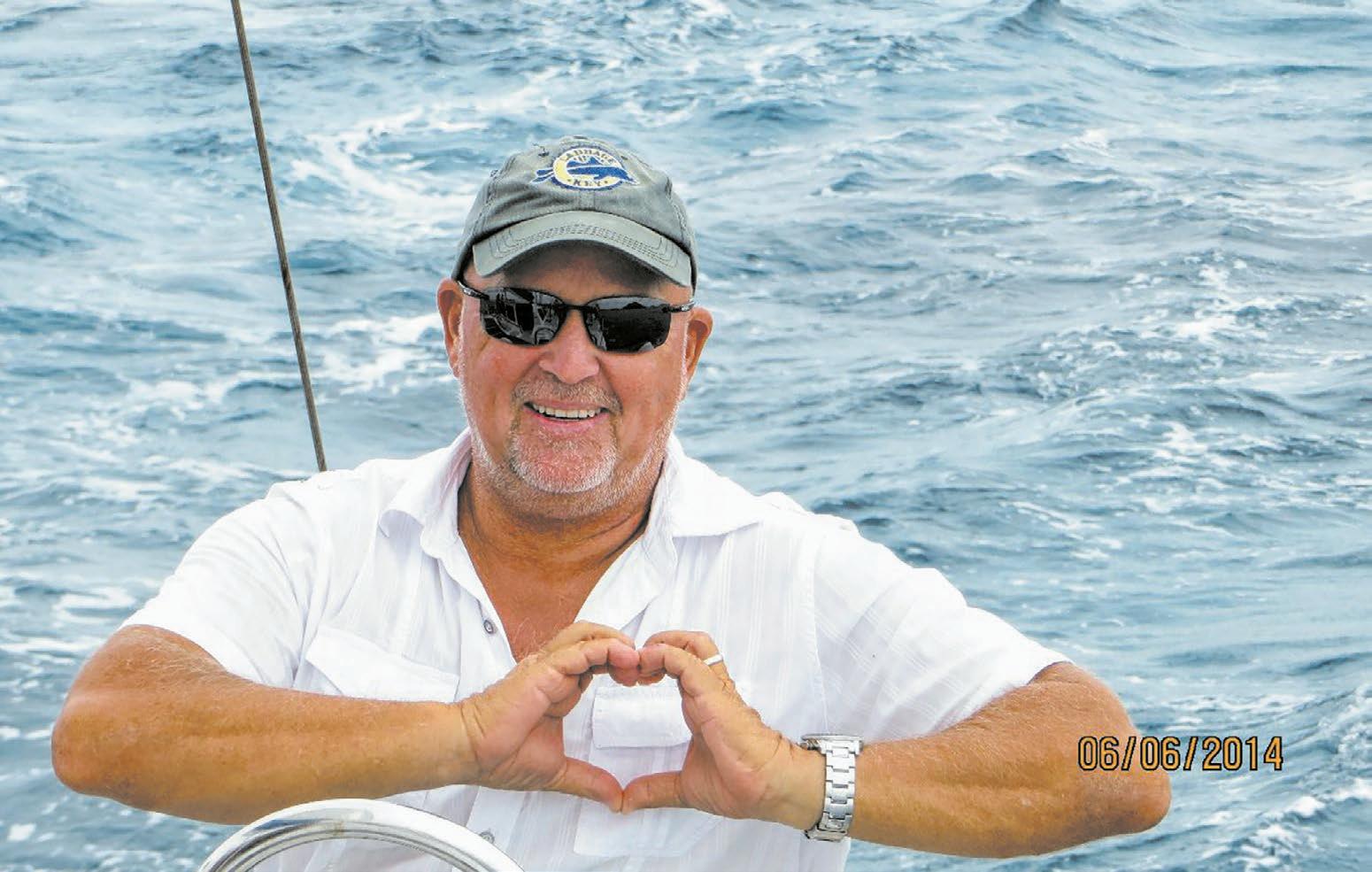
In 1993, he and Nicola purchased a catamaran that they named Splendid Adventurer. This became their home and business for the next 17 years. Initially, they were based out of Mustique, in St. Vincent & the Grenadines, successfully growing their crewed charter business with a reputation for providing a personal and unique experience for their guests. This reputation came to the attention of the Raffles Resort on nearby Canouan, and elicited an invitation to become the resident charter boat there. They accepted in 2004.
Phil's love of the ocean and the Grenadines was instrumental in his involvement, along with Nicola and many others in St. Vincent & the Grenadines and beyond, in supporting and encouraging the establishment of the Tobago Cays Marine Park. Their efforts were critical in protecting the Park’s sea turtles, and also led to reestablishing a flourishing population of iguanas on one of the cays, Baradel. Sailors and charter guests have enjoyed seeing these animals in their natural environment ever since.
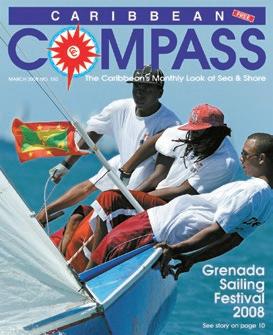
Later years brought further adventures. In 2009 they bought, sight unseen, a house in Osprey, Florida. This became a beloved home away from the Caribbean. In 2010, they accepted a “temporary” position as villa managers at Gumbolimbo, one of the premier villas on Canouan. This position was to last for ten years. Their tenure there was always a benefit to the island’s reputation for friendliness and hospitality. Phil’s problem-solving abilities, helpfulness and dedication to others, combined with his fun-loving nature, earned him the respect and admiration of many.
During this same time, he and Nicola owned and managed Canouan Yacht Services, providing many visitors to the island the opportunity to enjoy the beauty and splendor of the Tobago Cays and the wider Grenadines.
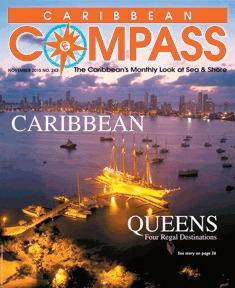

Phil also had a love of cuisine. He, along with several friends, created a line of island-inspired hot pepper sauces called “Capt. Phil’s Wreck-tum-Fire.” For many years, these sauces were sold throughout the Caribbean in boutique stores. One of the friends involved in the venture was Kevin Snook, a well-known chef, restaurateur and cookbook author. Phil and Kevin collaborated on the creation of many dishes and recipes, and talked of doing a book together featuring the best beach bars in the Caribbean. Kevin continued the project, and the soon-to-bepublished book is planned to be a tribute to Capt. Phil.
Another of Phil's life-long friends was singer/songwriter James “Sunny Jim” White. Their friendship began when they were both in the Cayman Islands. Sunny Jim has written several songs inspired by Capt. Phil including “Sail on Splendid Adventurer,” celebrating his lifestyle, love of the sea and the islands, and his indomitable spirit in crafting a life down island. Phil’s musical gifts combined with James’ talents led to several collaborations on songs including “Bequia Sweet, Bequia Nice.”
Phil passed away on December 9th, 2021, from the effects of a glioblastoma brain cancer. James was at Phil’s side during his illness and was dedicated to their friendship until Phil’s final breath.
Capt. Phil and Nicola’s last adventure together followed the lifting of Covid travel restrictions in the spring of 2021. During the lockdown, Phil had put together a plan for a trip on their cigarette boat, Pepper. From their home in Osprey, they embarked on an 800-mile water safari through the Florida Everglades and the 10,000 Islands. Shortly after completing the trip, Phil collapsed and was hospitalized and was later diagnosed with his fatal illness. Nicola cared for him throughout the course of the disease. They continued to share their memories, and their love and affection for each other, until the end. Again, due to Covid restrictions, few of Phil's family and friends were able to visit during this time. Near the end, however, his siblings and son Matt were allowed to travel from England to see him. This was very special for them all. Nicola and Matt were at his side when he passed.
Phil leaves behind his wife Nicola, son Matt with three beloved grandchildren, his Mum, two sisters and a brother, and innumerable friends in the Caribbean.
Capt. Phil's life embodied myriad positive traits, among them honesty, humor, kindness, dedication, loyalty and perseverance. These were reflected in his accomplishments through the many difficulties he had to overcome. His numerous friends that were touched by Phil's spirit will always treasure the memories of him being a part of their lives. That spirit and soul will not be forgotten.
Capt. Phil, we wish you many splendid adventures on your next journey. Sail on!

DECEMBER 2022 CARIBBEAN COMPASS PAGE 34
CARIBBEAN LIVES A TRIBUTE TO CAPTAIN PHIL
HEY, READERS! If you’d like to receive notification by e-mail when each month’s new Compass is available free online, just drop a note to dan@LSmedia.com and we’ll put you on the list — it’s as easy as that! Need Crew? Want to Crew? Experienced Crew Available for short deliveries or long offshore passages. Crew requests are free. For 25 Years, US Leading Crew Network. Offshore Passage Opportunities SailOPO.com McINTYRE BROS. LTD. True Blue, St George’s Grenada Call 1 (473) 444 3944 macford@spiceisle.com Honda, Mazda and Ford Dealership Vehicle Sales & Service Book your Car rentals & Island Tours with us Discover Grenada with Caribbean Horizons Tours & Services info@caribbeanhorizons.com www.caribbeanhorizons.com 2 & 4-Stroke Engines Genuine Parts & Service Yamaha Certified Technicians Duty free deliveries & reliable service for Yachts GRENADA
Dear Compass Readers,
I can attest to the restrictions on crossing borders with queen conch shells (“Save the Queen” by Ralph Trout on page 30 in the May/June issue). On our first voyage back from the Bahamas to the US in 2011 we entered at the Ft. Pierce, Florida, inlet. We were met right in the entrance channel by the US Customs and Border Control boat, which came alongside. The officers asked permission to board. They did so, with Customs, Immigration and Wildlife officers. My wife Maureen and I told them that we were just arriving from the Bahamas and they responded that they wanted to search our boat (a 47-foot Vagabond ketch). We gathered all our documents and honestly didn’t think we would have any problems. After the Customs officer searched below he asked us how many bottles of Cuban rum we had aboard. We had two!
He asked what else we were bringing in. I said we had nothing else but some empty conch shells we picked up on the beach in the Abacos. The Fish and Wildlife officer became interested and looked at the bucket where we kept four or five of them. He pulled out his cell phone, took pictures and called someone. I was concerned but didn’t think too much of it. After 20 minutes or so they all came into the cockpit and said we are okay with Customs and Immigration. But the Fish and Wildlife officer said he checked and said we were okay with the Bahamas laws, but had a problem with US law regarding the conch. It was then I was told that I needed an import license to bring the shells into the country. In addition, he said, since it was illegal to harvest conch in Florida, without proof of the shells being from Bahamas, we could face penalties in Florida. I thought to myself, thrown in jail for being a Conchy Joe? I explained I had no idea of this, as they were just among the piles of shells on the beach. In the end they let us go with just a warning.
The crazy thing is that there are heaps of these empty shells ashore all over the Bahamas. I was told that they should not be thrown back into the water after harvesting because they discourage other conch from mating there. I fully support the restrictions of overfishing and the preservation of this resource. And yes, the Queen Conch have beautiful shells and make great conch horns, not to mention the delicious conch salad (something that I miss in the Caribbean). Save the Queen indeed!
MISSING A PART
Dear Compass, I read Part 1 of “Hurricane Comin’” by David Lyman in a past issue of Compass, but missed Part 2. Please tell me which Compass it’s in. Thanks and best regards, Tom Barrett
Hi Tom, “Hurricane Comin’” by David Lyman is in three parts. You can find them online here:
Part One: page 20 at www.caribbeancompass.com/online/may20compass_online.pdf [1]
Part Two: page 22 at www.caribbeancompass.com/online/june20compass_online.pdf [2]
Part Three: page 25 at www.caribbeancompass.com/online/july20compass_online.pdf [3] Don’t forget that you can read all Compass issues back to 2007 online, free, in the Back Issue Archive at www.caribbeancompass.com/backissues.html All the best, Sally
CALENDAR DECEMBER 2022
2 – 4 Course de L’Alliance, St. Maarten, St. Barts & Anguilla. www.smyc.com 3 Gustav Wilmerding Memorial Race, BVI. www.westendyachtclubbvi.com 4 – 9 Antigua Charter Yacht Show. www.antiguacharteryachtmeeting.com 8 FULL MOON 8 – 11 Caribbean Charter Yacht Show, St. Thomas, USVI www.caribbeancharterys.com 13 Public holiday in St. Lucia (National Day) 16 – 24 Nine Mornings Festival, St. Vincent. http://discoversvg.com 17 O’Neal & Mundy Commodore's Race, www.royalbviyc.org 17 – 18 Budget Marine Hightide Series, Antigua. www.antiguayachtclub.com 17 – 18 Carriacou Parang Festival. www.puregrenada.com 21 Winter Solstice 25
Public holiday in many places (Christmas Day) 26 Public holiday in many places (Boxing Day) 31 Nelson’s Pursuit Race, Antigua. www.antiguayachtclub.com 31 New Year’s Eve Regatta, St. Barths. www.saintbarth-tourisme.com 31 New Year’s Eve/Old Year’s Night: Fireworks in many places. Public holiday in Cuba (Year End Celebration)
JANUARY 2023
1
Public holiday or ‘recovery day’ in many places (New Year’s Day)
1 Annual Festival Parade in Montserrat. Facebook.com/MontserratArtsCouncil 6 FULL MOON 6 Public holiday in some places (Three Kings Day/Epiphany) 6 Viking Explorers rally departs from Canary Islands bound for Grenada. www.vikingexplorersrally.comg 8 RORC Transatlantic Race departs Canary Islands bound for Grenada. http://rorctransatlantic.rorc.org 14 Grant Thornton Multiclass Regatta, St. Maarten. www.smyc.com 14 Latitude 18 Halyard Challenge Race, BVI. www.royalbviyc.org 14 – 15 Martin Luther King Regatta, St. Thomas. https://stthomasyachtclub.org/ sailing/regattas/mlk-regatta 14 – 22 Barbados Sailing Week. www.roundbarbados.com and see ad on page 9 16
Public holiday in Puerto Rico & USVI (Martin Luther King Day) 19 Tobago Culinary Festival. www.visittobago.gov.tt/festivals-events 20 – 22 Caribbean Laser Midwinter Regatta, Cabarete, Dominican Republic. www.caribwind.com
21 Public holiday in Barbados (Errol Barrow Day) and in the Dominican Republic (Our Lady of Altagracia) 21 – 23 Pineapple Cup Race, Miami to Montego Bay. www.pineapplecup.com 22 – 28 Martinique Cata Raid. https://martiniquecataraid.com 25 Public holiday in Aruba (GF Croes Day), in Cuba (Birthday of José Martí) and in Cayman Islands (National Heroes’ Day) 25 – Feb 8 Mustique Blues Festival. https://basilsbar.com/mustique-blues-festival 26 Public holiday in Dominican Republic (Duarte Day) 28 – Feb 4 Manhattan Caribbean Week, BVI. https://myc.org/cruising/caribbeanweek
TBA St. Barts Music Festival. www.stbartsmusicfestival.org/festival TBA Halyard Challenge Race, Tortola. regattas@royalbviyc.org
All information was correct to the best of our knowledge at the time this issue of Compass went to press — but plans change, so please contact event organizers directly for confirmation.
If you organize a sailing or boating event not listed here that you’d like to have included in our monthly calendars, please send information two months before the event date(s) to dan@LSmedia.com.
ARE THERE 50 WAYS TO GET ASHORE?
In Jim Hutchinson’s article “50 Ways” in the May 2021 issue of Compass (see page 22 at www.caribbeancompass.com/online/may21compass_online.pdf) Hutch reckoned there must be 50 ways to get ashore from a boat. Are there?

We asked Compass readers to send photos of your different ways to get ashore — whether by inflatable with or without an outboard, rowing dinghy, sailing dinghy, kayak, paddleboard, windsurfer, noodle, swim fins — or something else entirely.
Compass readers have accepted the challenge, and so far we’ve received more than 30 photos of different ways you get ashore.
If we succeed in getting photos of 50 different ways, all of your photos will appear in a full-page montage in a future issue of Compass. It might even be suitable for framing!
Ready? Set your phone or camera to the largest image setting, snap your gettingashore vehicle of choice, and send the picture(s) to dan@LSmedia.com.
WE WANT TO HEAR FROM YOU!
We
Be sure to include your name, boat name or shoreside address, and a way we can contact you (preferably by e-mail) if clarification is required.
We do not publish individual consumer complaints or individual regatta results complaints. (Kudos are okay!) We do not publish anonymous letters; however, your name may be withheld from print at your request. Please keep letters shorter than 600 words. Letters may be edited for length, clarity and fair play.
Send your letters to dan@LSmedia.com.
DECEMBER 2022 CARIBBEAN COMPASS PAGE 35
want to hear from YOU!
READERS’ FORUM



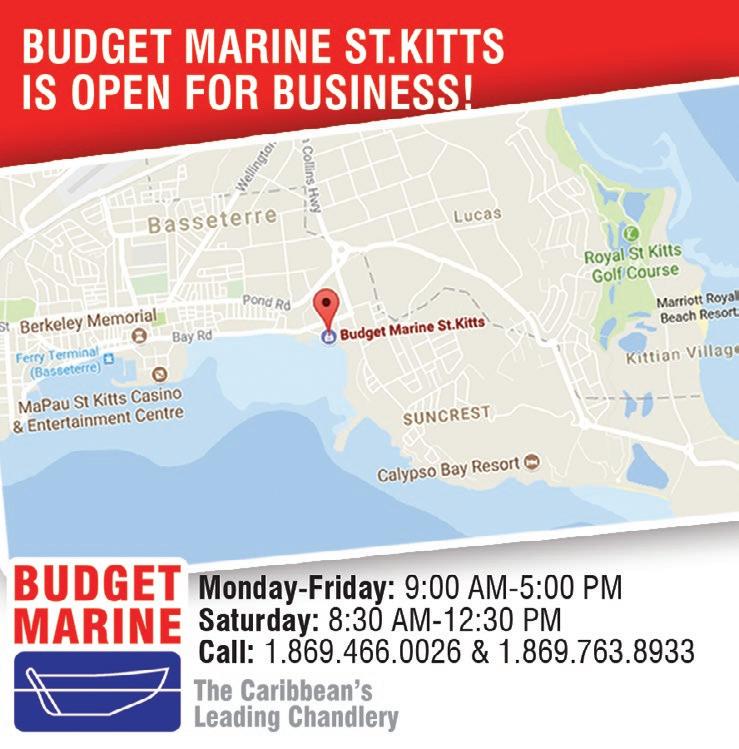


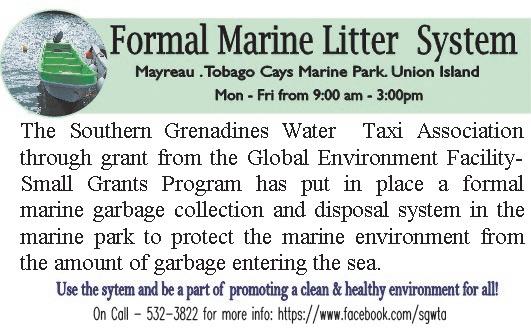

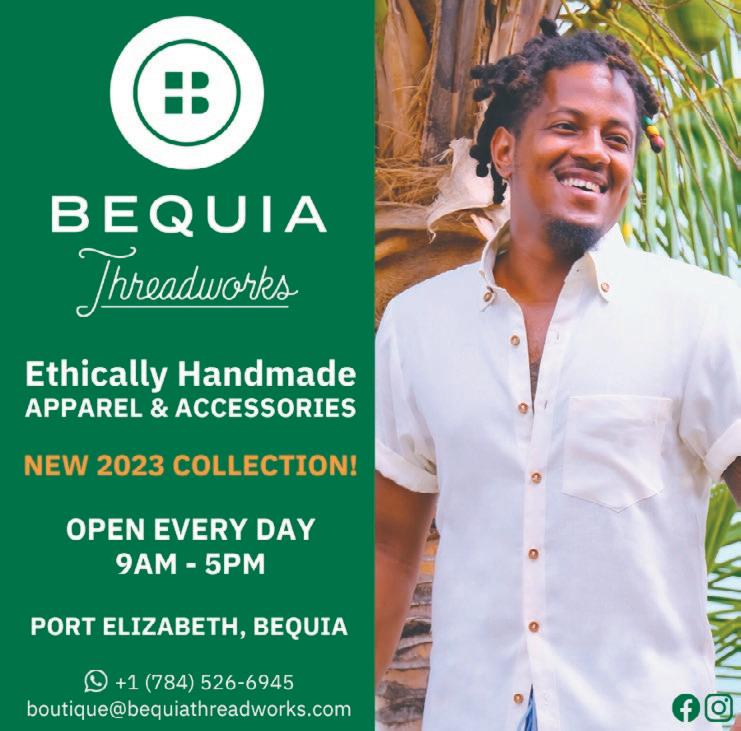

DECEMBER 2022 CARIBBEAN COMPASS PAGE 36 continued on next page Caribbean Compass Market Place Grenada Jeff Fisher – Grenada (473) 407 6355 www.neilprydesails.com Check out our website or contact us directly for a competitive quote on rugged and well-built sails that are well suited to the harsh environment of the charter trade and blue water cruising. NEILPRYDE Sails Grenada Azores Saint Kitts & Nevis SVG SVG Antigua MID ATLANTIC YACHT SERVICES PT-9900-144 HORTA / FAIAL, AZORES Providing all vital services to Trans-Atlantic Yachts! Incl. Chandlery, Charts, Pilots, Rigging EU-VAT (18%) importation Duty free fuel (+10.000lt) TEL +351 292 391616 FAX +351 292 391656 mays@mail.telepac.pt www.midatlanticyachtservices.com WE OFFER: • Grocery Shopping / Personal pick-up (with delivery to your dock) • Argyle International Airport direct shuttle (starting from EC$30) • Bill payments LAC Services App (Google App Store) Tel: (784) 527-3082, (784) 492-9983 E-mail: lacservices@lacsvg.com GRENADINES SAILS & CANVAS • BEQUIA • BEST CUSTOM-MADE DINGHY CHAPS Located northern side of Admiralty Bay Tel (784) 457-3507 / 457-3527 (evenings) gsailsbequia@gmail.com VHF Ch16/68 NEW SAILS, SAIL REPAIRS, U/V COVERS FOAM LUFFS, BIMINI, DODGERS AWNINGS, DINGHY COVERS, UPHOLSTERY TRAMPOLINES, STACKPACKS & LAZY JACK SYSTEMS
Caribbean Compass Market Place
Caribbean-wide Real Estate
LIVE THE DREAM FOR SALE
CARRIACOU REAL ESTATE
Land and houses for sale
For full details see our website: www.carriacou.net Contact: islander@spiceisle.com Tel: (473) 443 8187
Venezuela
Trinidad
—Info & Updates, continued from page 5
Virgin Islands on the Move
According to an October report by Alexander Britel in the Caribbean Journal, “It began during the pandemic, when expert tourism management and a flexible travel health policy helped drive a new wave of visitors to the US Virgin Islands. And the last two years haven seen unprecedented levels of tourism growth in the Territory, making the USVI the fastest-growing destination in the region right now. Indeed, the US Virgin Islands has seen a 44-percent increase compared to the same period in 2019 — a growth rate no other destination has managed to match.”
Britel writes that the USVI is seeing new interest as a sailing and yachting destination, another trend that began during Covid and has seen tremendous growth.
The USVI hosted the VIPCA Charter Yacht Show November 12th through 15th, and is set to welcome the International Yacht Brokers Association and IGY Marina Caribbean Charter Yacht Show December 8th through 11th.
See the full story at www.caribjournal.com/2022/10/11/usvi-caribbean-traveldestination-fastest-growing Meanwhile, in the neighboring British Virgin Islands, a November report at bvinews. com notes that the BVI is “making moves to fully revive” that territory’s yachting sector. Amid concerns that the BVI has lost some yachts to neighboring jurisdictions, local stakeholders are taking steps to recapture sailors as the global yachting sector continues to rebound from the Covid-19 pandemic.
The BVI’s yachting sector suffered major blows as the government’s strict pandemic restrictions pushed cruisers to less restrictive countries in the Caribbean. Along with the extended border closure, reports of a yacht being detained for apparently unwittingly straying into BVI waters also caused damage to the BVI’s reputation. At the same time, many local charter companies had sailed their boats to “bluer waters” in a bid to pick up business.
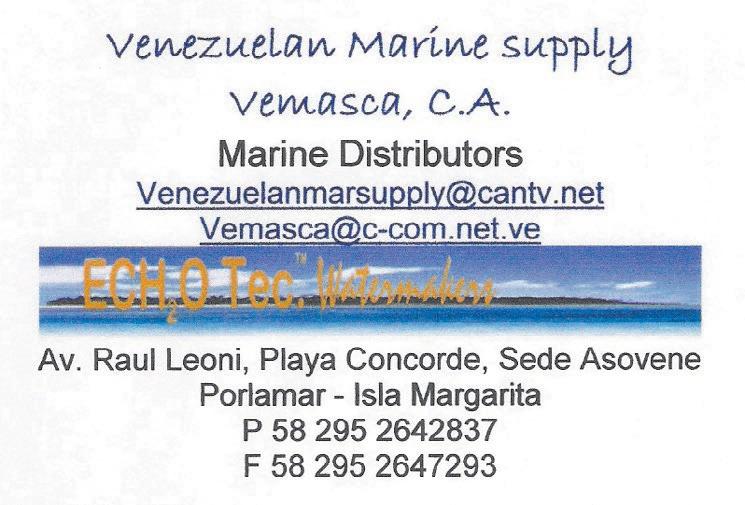
A delegation from the territory sought to create waves of interest from prospective visitors at the annual Fort Lauderdale International Boat Show that took place in October.
Sail Training Adventures
As of early November, as this issue of Compass prepares to go to press, the Tall Ship Eye of the Wind has a spot available to take a trainee for a Caribbean island tour, and two trainees welcome on the Eendracht

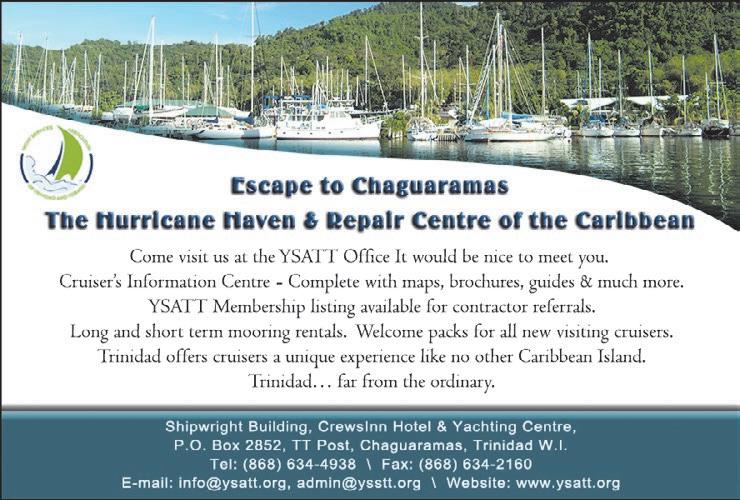
The non-profit Association Caribbean Sail Training announced that they are offering a six-week sail training adventure on one of their member vessels, the Eye of the Wind. Captain Moritz contacted CST with the offer to take a trainee. The sail training experience will start upon embarkation on January 13th in Martinique and end in Tortola, the British Virgin Islands, on February 10th. All costs on board are covered. Not covered are any sort of travel expenses to join or leave the vessel. Upon arrival in the British Virgin Islands the trainee will have to show an outbound airline ticket.
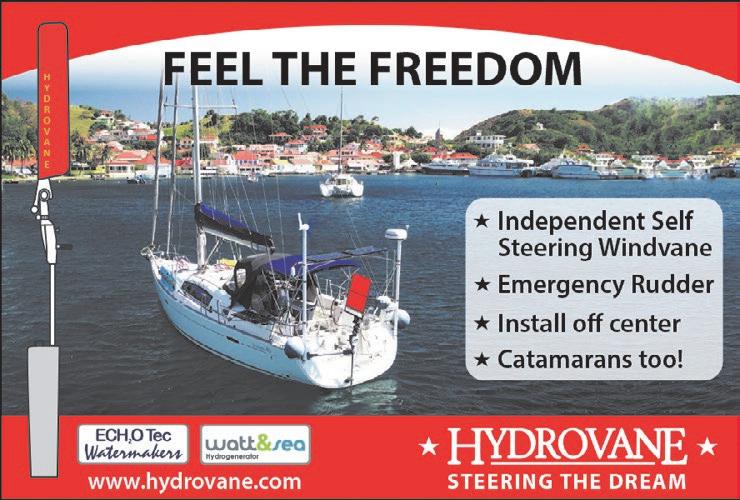
The minimum age to apply for this sailing experience is 18 years. The trainee can be from any Caribbean island but should speak minimum basic English and be willing to join the crew in all the work.
The Eye of the Wind has usually four trainees on board. They work together with the deckhands, do sail handling, navigation, helping in the galley, etcetera.
The Eye of the Wind is a brigantine built in 1911 as a topsail schooner and restored and upgraded over the years. She is equipped with the latest technology and electronics for navigation and comfort. Nevertheless, the sails, with a total area of around 750 square metres, are raised and lowered by sheer muscle power.
The sail training vessel Eendracht also offers trainee trips in cooperation with Caribbean Sail Training. As of early November space for two was still available on the Eendracht to embark at Marigot, St. Martin on February 1st and disembark at the same location on February 10th. Minimum age is 16 years.
The sail training trip on the Eendracht is made possible with additional co-sponsoring from a young Dutch girl, Emma Boer, who herself sailed on board the sail training vessel Wylde Swan, another long time CST member vessel. Wylde Swan’s Captain Richard Slootweg explained to her what Caribbean Sail Training was doing, and she decided to donate to CST so that other youngsters could also experience what she did.
Caribbean Sail Training was established 18 years ago as a registered nonprofit association to help in providing sail training for young people of all nationalities, cultures, religions and social backgrounds, especially those living in the Caribbean, while also helping the member vessels that cruise in Caribbean waters.
Candidates for the sail training trips are requested to send an application ASAP to info@CaribbeanSailTraining.com. If you miss this opportunity, keep in touch with Caribbean Sail Training at www.CaribbeanSailTraining.com for future sailings.
 EYE OF THE WIND
JEAN JARREAU
EYE OF THE WIND
JEAN JARREAU
OURCARRIACOU.COM/WOW
SARAH STEENLAND DECEMBER 2022 CARIBBEAN COMPASS PAGE 37
Training ship Eye of the Wind sailing off St. Maarten
PROPERTY
BEQUIA - ISLAND PACE REAL ESTATE 43,560 sq/ft + acre lots, Ocean Ridge estates, North Bequia. US$100,000 & up, US$2.50/ sq/ft & up. Tel: (784) 493-4711 E-mail: emmett@islandpace.com
MISCELLANEOUS
ST. VINCENT & THE GRENADINES 4 x Dive bottles 12.2L+10.4L, 1 x Fortress anchor FX75 new, 4 x Gulf Coast filters O-1, 1 x Oil XchangeR 946D. Accepting offers. Tel: (784) 532 8332 E-mail: seawings_2000@yahoo.com
BEQUIA - ALL INCLUSIVE LUXURY APARTMENT
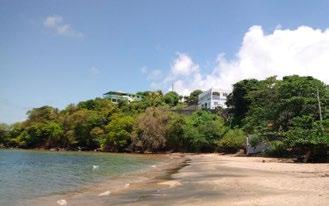
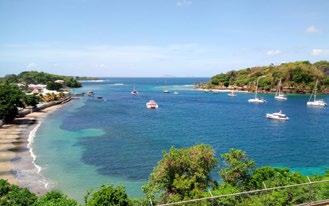


Beautiful, all-inclusive apartment at Three Trees. Long term EC $1500/mth. Call / WhatsApp David (246) 243-6862
PROPERTY FOR SALE
BEQUIA, LAWLER HILL Over 2 acres of mature grounds with fabulous views overlooking Port Elizabeth, Lower Bay, Friendship Bay and Mustique. Property includes a charming home plus a cottage hideaway. Could be sold separately or together. Price negotiable. Contact T. M. Zoffoli, Tel: (774) 563-0240 E-mail: austintiare860@gmail.com
ST. VINCENT & THE GRENADINES, VILLA BEACH Beach front living for home or an investment. 3 separate self-contained units. 7 bedrooms, 7 on-suite bathrooms, 3 half bathrooms. Building 6,864 sq/ft & land 13,490 sq/ ft., views of the Grenadines. US$1,200,000 OBO. Tel: (784) 497-0000 / 593-9922 E-mail: properties.svg@gmail.com

BOAT FOR SALE
ADVERTISERS INDEX
Spice
Tobago Cays SVG MP
Turbulence Sails Grenada 15/MP
Venezuelan Marine Supply Venezuela MP
Industry Trinidad 6
Neil Pryde Sails Grenada MP
Off Shore Risk Management Tortola 15
Offshore Passage Opportunities C/W 34
Robert Jasin Grenada MP
Sailors for the Sea C/W 24
Sammy's Boatyard Antigua MP

Westerhall Rum Grenada 33
WhitCo Insurance USA 27
Wild Life Expeditions Grenada 28
YSATT Trinidad MP
MP = Market Place pages 36 - 37 C/W = Caribbean-wide

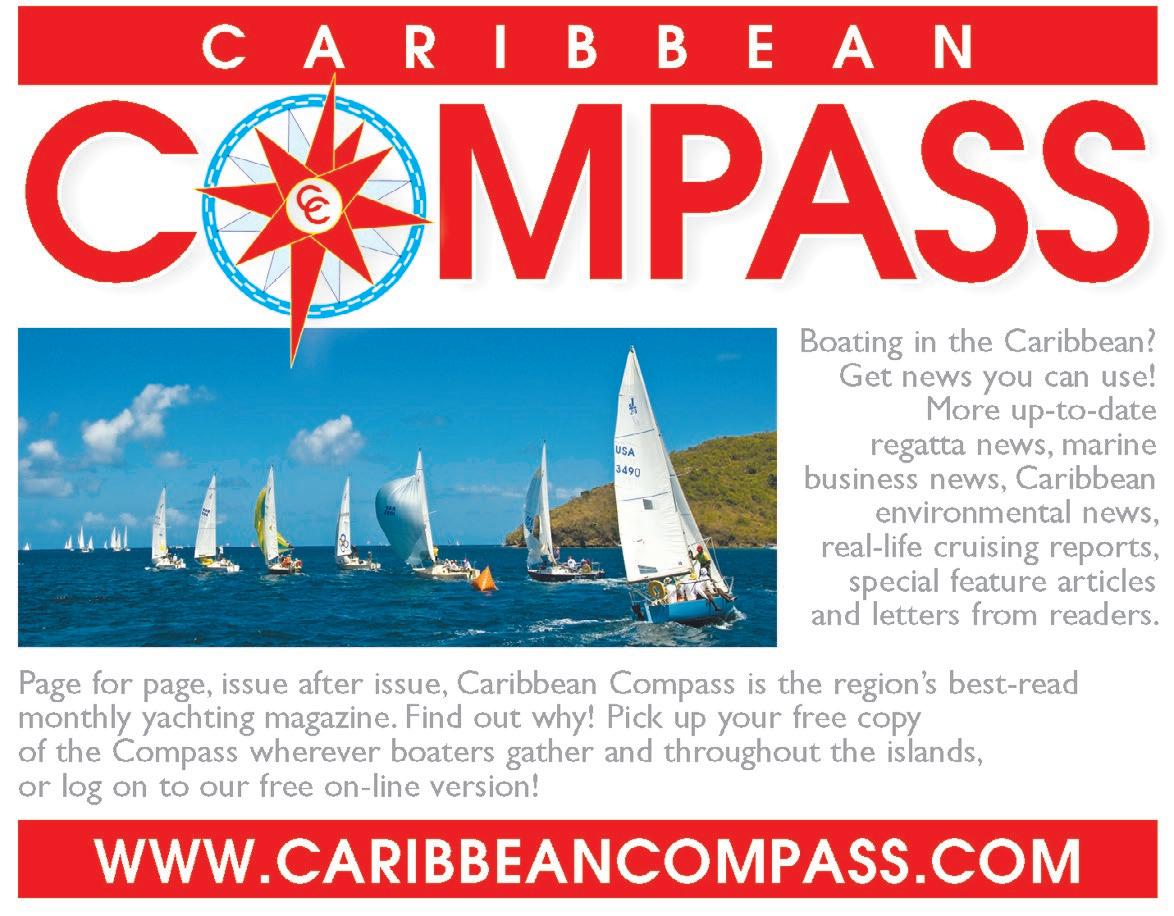
DON‘T LEAVE PORT WITHOUT IT CLASSIFIEDS CLASSIFIEDS US 50¢ PER WORD Include name, address and numbers in count. Line drawings/photos accompanying classifieds are US$10. Pre-paid by the 10th of the month: E-mail: shellese@caribbeancompass.com ADVERTISER LOCATION PG# ADVERTISER LOCATION PG# ADVERTISER LOCATION PG# ADVERTISER LOCATION PG# Art Fabrik Grenada MP Barbados Cruising Club Barbados 9 Bequia ThreadWorks SVG MP Blue Lagoon Hotel & Marina SVG 29 Boat Paint & Stuff St. Maarten 20 Budget Marine St. Maarten 2 Budget Marine St. Kitts St. Kitts MP Camper & Nicholsons Grenada 39 Caribbean Multihull Challenge III St. Maarten 10 Carriacou Business Grenada MP Centenario & Co Panama 20 Clarkes Court Boatyard Grenada 4 Club De Pesca Marina Colombia 20 Douglas Yacht Services Martinique 8 Down Island Real Estate Grenada MP Doyle's Guides USA 32 Gonsalves Liquors SVG 33 Grenadines Sails SVG MP Happy Kite SVG MP Hutch's E-book C/W 28 Hydrovane International Marine C/W MP Island Water World Sint Maarten 40 Kayak Café & Juice Bar Grenada 28 LAC Services SVG MP Mac's Pizzeria SVG MP Marina Santa Marta Colombia 11 Martinique Boat Show Martinique 7 McIntyre Bros Grenada 34 Mid Atlantic Yacht Services Azores MP Ministry of Trade &
Island Marine Grenada 13
SVG Tourism SVG 5
FOR RENT
HEY READERS, GET CARIBBEAN COMPASS BY EMAIL! VISIT OUR WEBSITE AT CARIBBEANCOMPASS.COM OR JUST SCAN THE QR CODE BELOW AND ENTER YOUR EMAIL ADDRESS — IT’S AS EASY AS THAT! DECEMBER 2022 CARIBBEAN COMPASS PAGE 38
BENETEAU OCEANIS 42 2006 3 cabin/3 head, French built. Premier Cru is sitting in Progreso, Mexico, outstanding condition. See Progreso article-this edition for background. One registered owner, price upon request. Tel: (514) 295-3087 E-mail: magee.michael@gmail.com
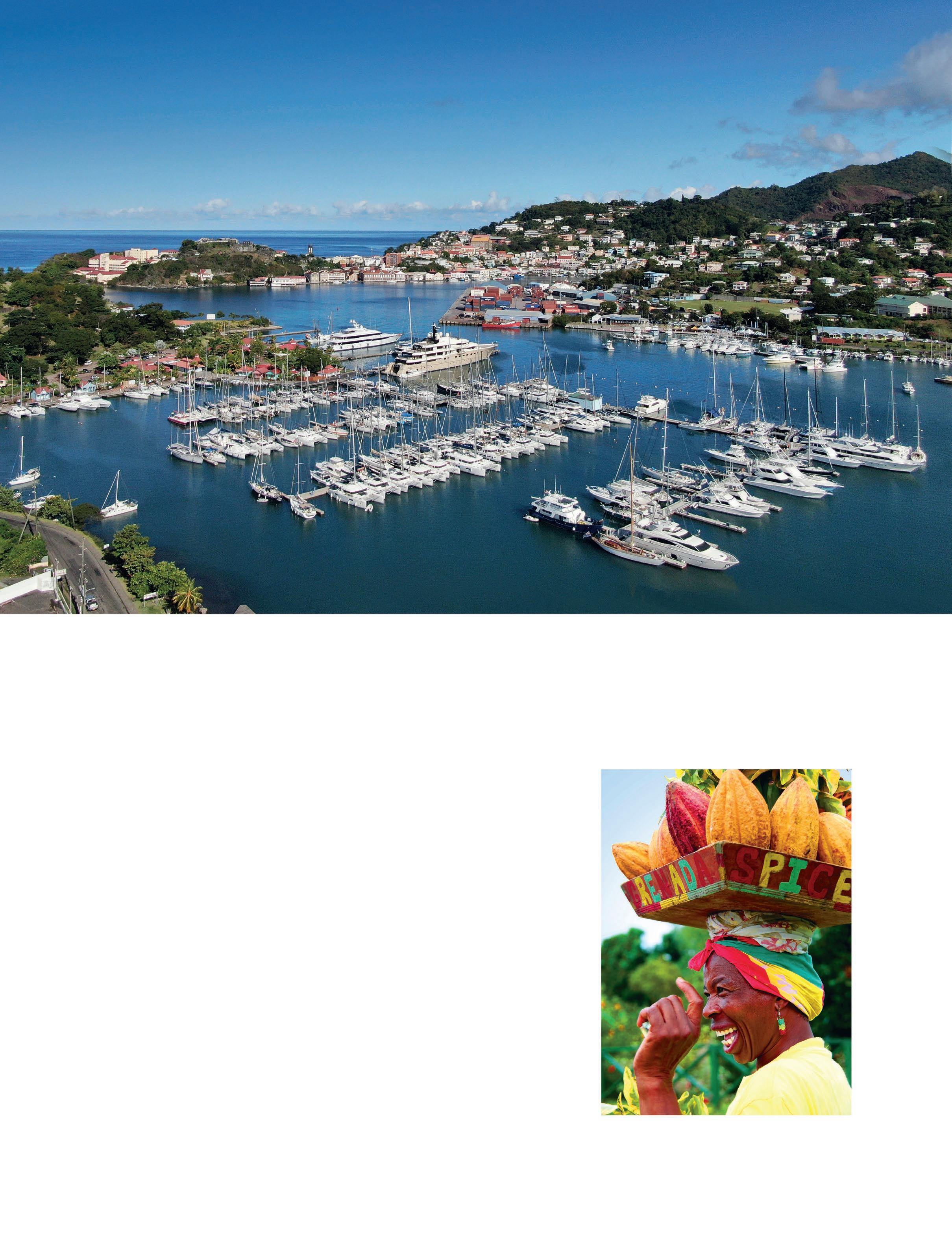
DECEMBER 2022 CARIBBEAN COMPASS PAGE 39 Welcome to a Season of Color GREAT DEALS AND AFFORDABLE RATES TO CALL PORT LOUIS MARINA YOUR HOME Facilities include: Owned and managed by Camper & Nicholson’s Marinas , Port Louis Marina is the newly refurbished full-service marina destination to visit in the southern Caribbean for secure yacht and superyacht berthing. For all enquiries, please contact Tel: +1 (473) 453 7432 Email: reservations@cnportlouismarina.com Web: www.cnmarinas.com/plm VHF: Channel 14 TERMS & CONDITIONS Rates are quoted in US Dollars and berthing fees are payable on arrival. Rates are based on a vessel staying and paying for the berth for a consecutive number of days. Catamarans charged at 1.5* the advertised rates. A deposit of 10% of the value of the booking (Min US$100) is required to secure a berth. Deposits are refundable up to 30 days prior to the booked arrival date. All rates subject to change. Pool for marina guests Airconditioned amenities Free Wi-Fi Black water pump out Onsite restaurants and bar Concierge services 110v/220v shorepower Alongside dockage available CandNM_PLM_CompassMag 9-44x12-4in.indd 1 10/11/2022 15:08
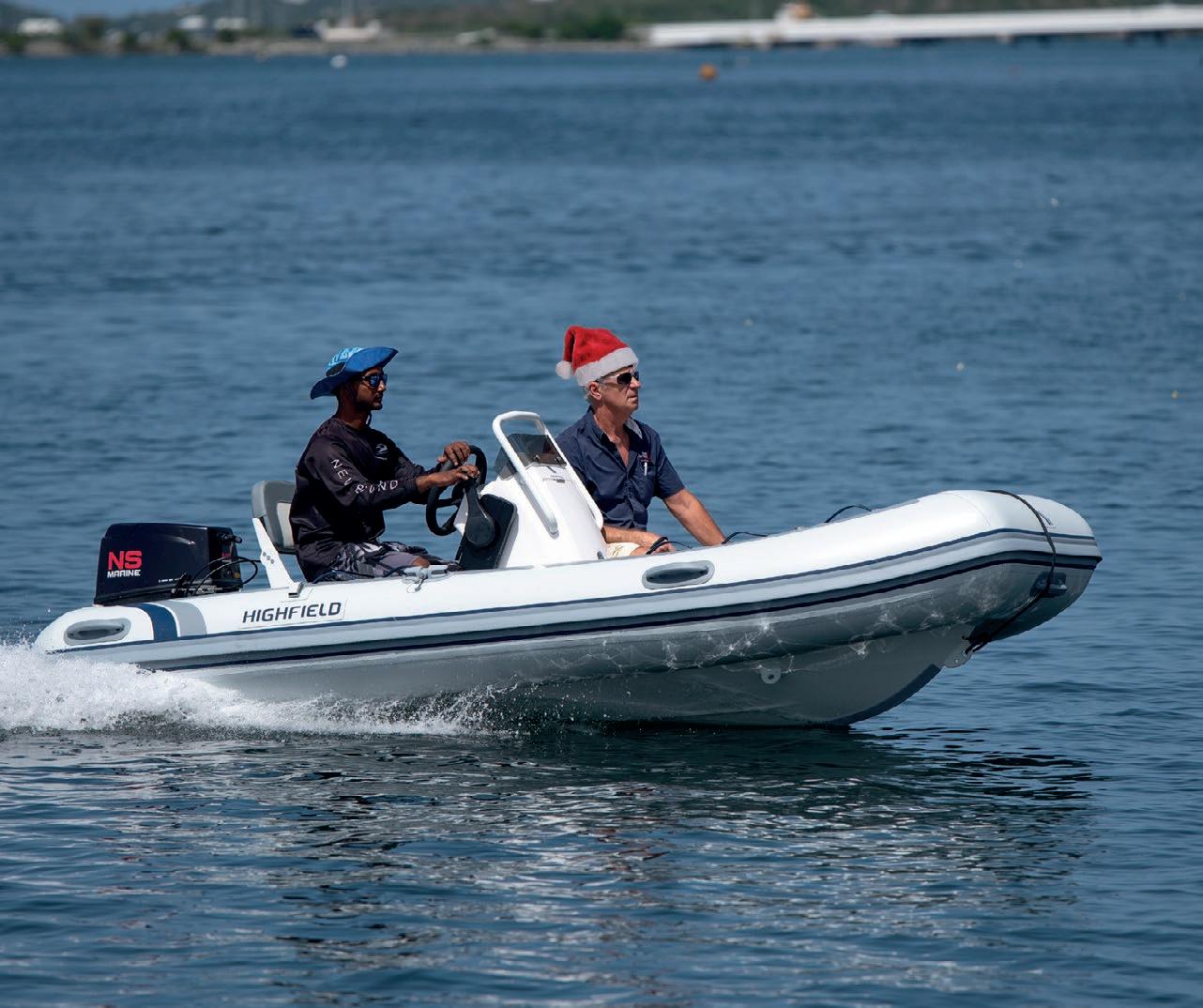
















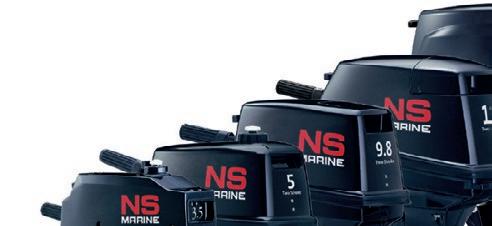
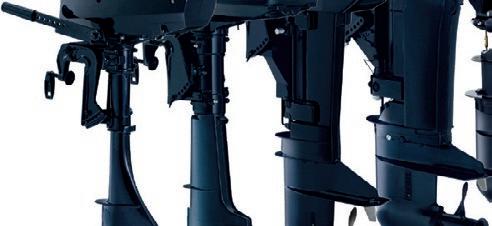








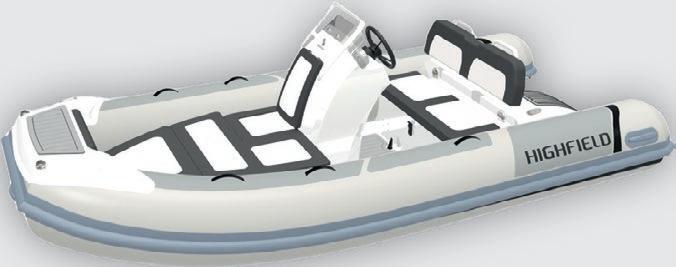












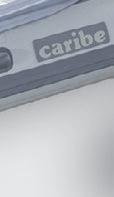


















Publishing LLC,
USA, and printed
Guardian Media Limited, Trinidad & Tobago
Published by Compass
Connecticut,
by

























































































































































 EYE OF THE WIND
JEAN JARREAU
EYE OF THE WIND
JEAN JARREAU


































































